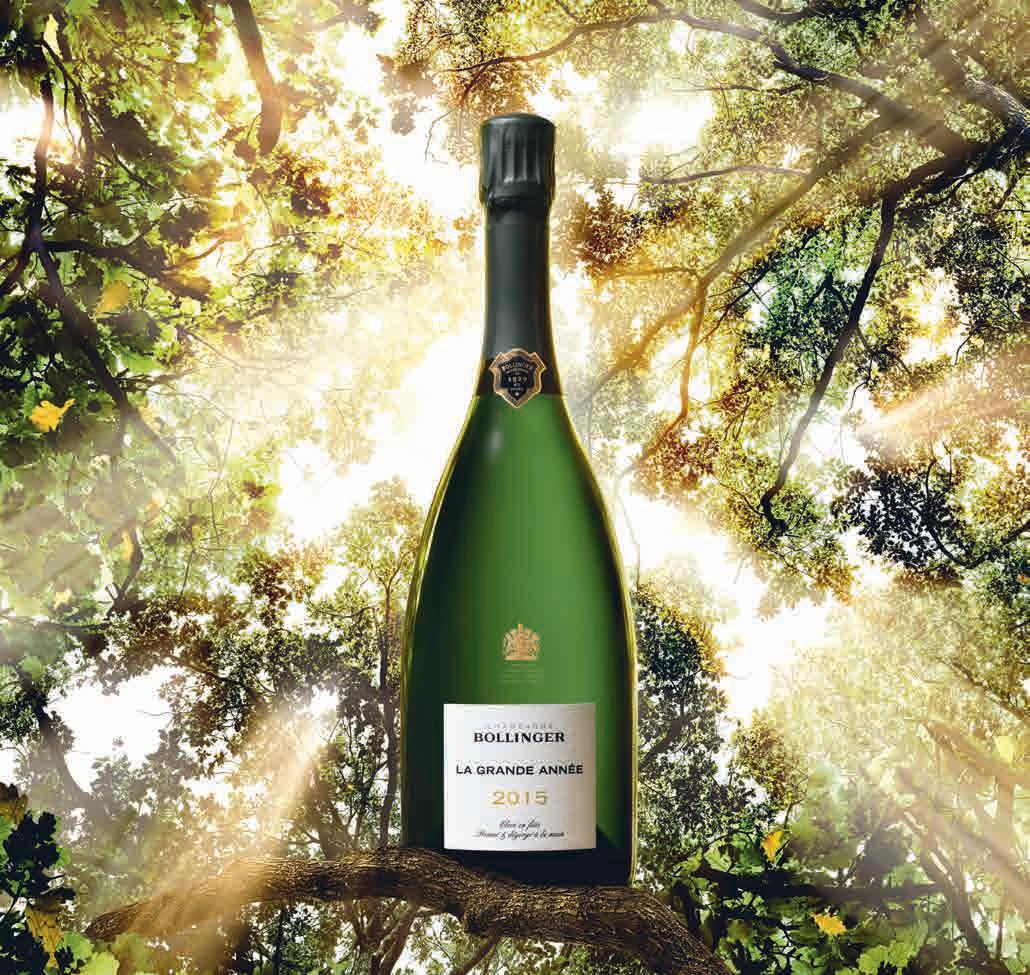Royalty in Britain

BY ROYAL APPOINTMENT
In collaboration with the Royal Warrant Holders Association
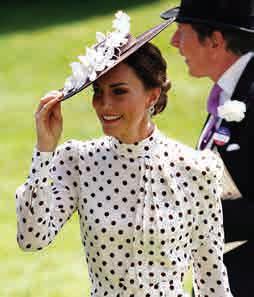
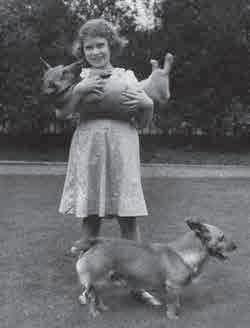
FAITHFUL FRIENDS
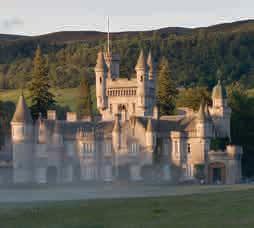
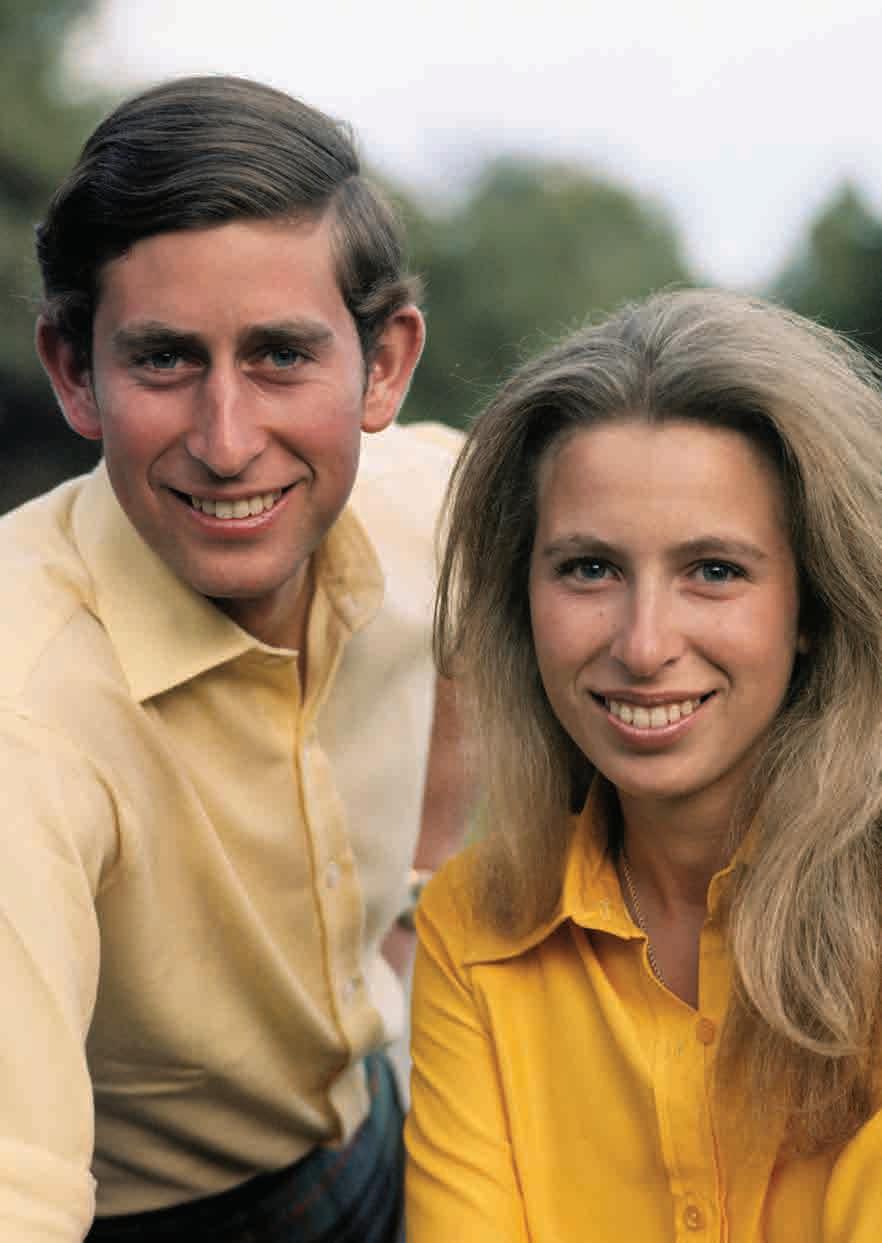
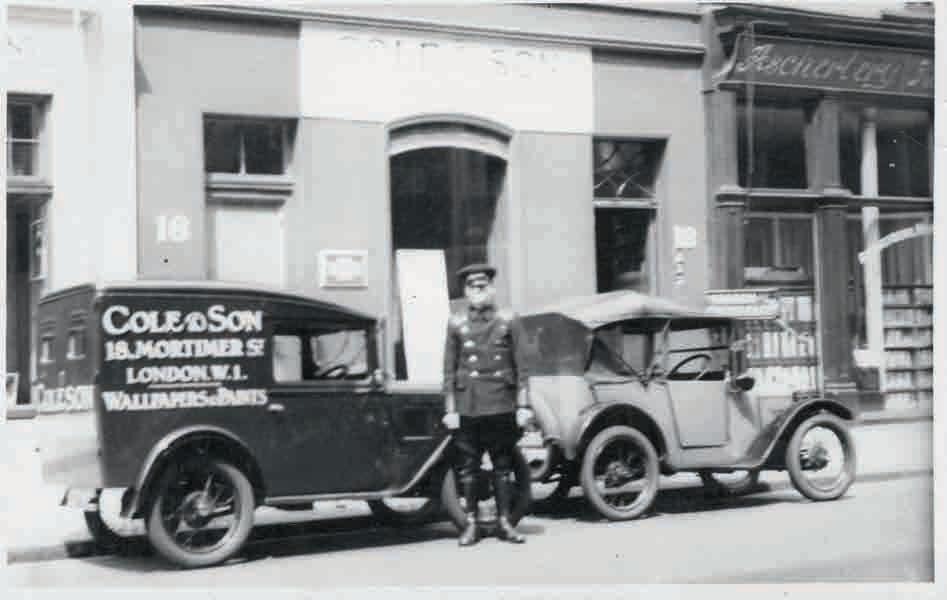
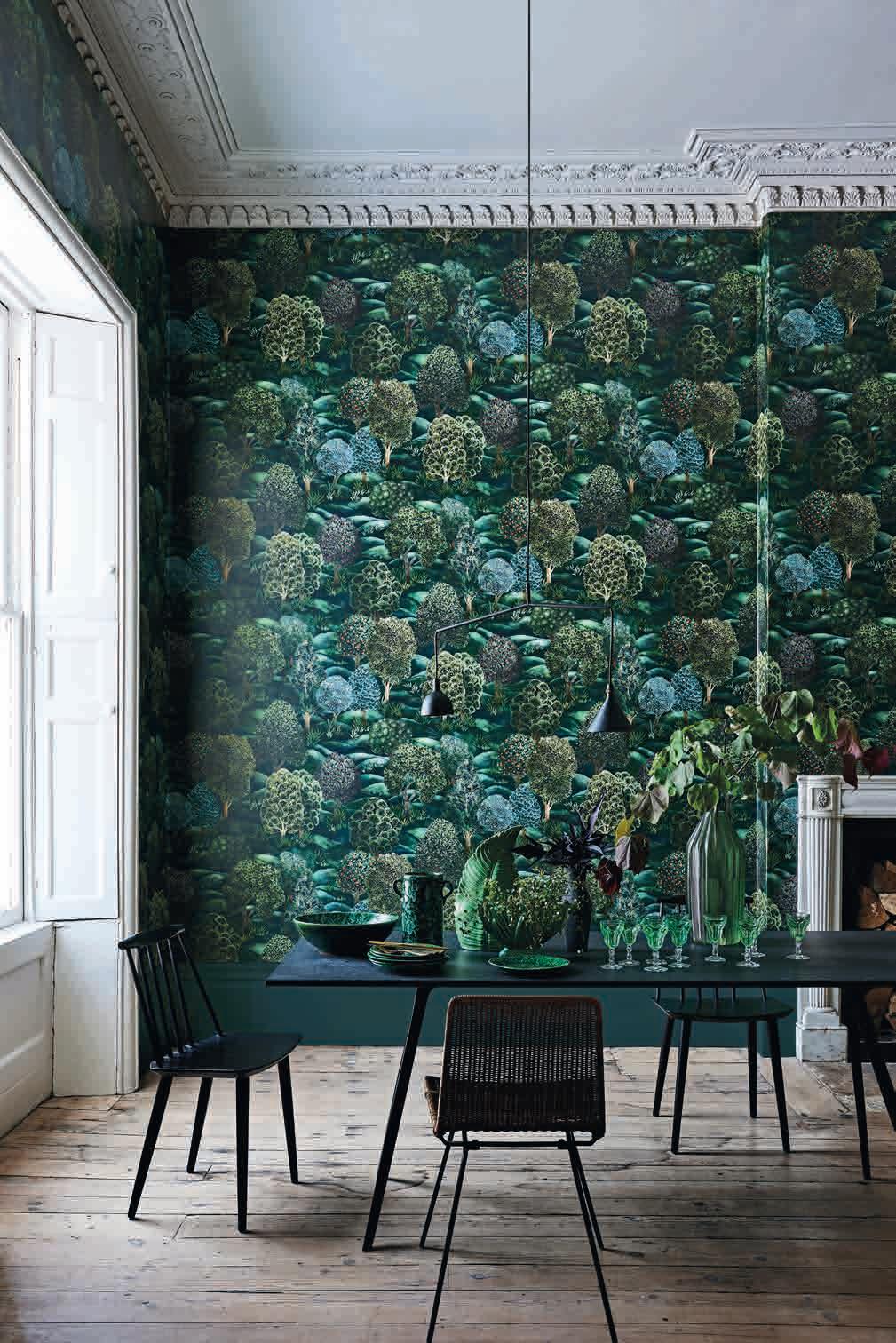
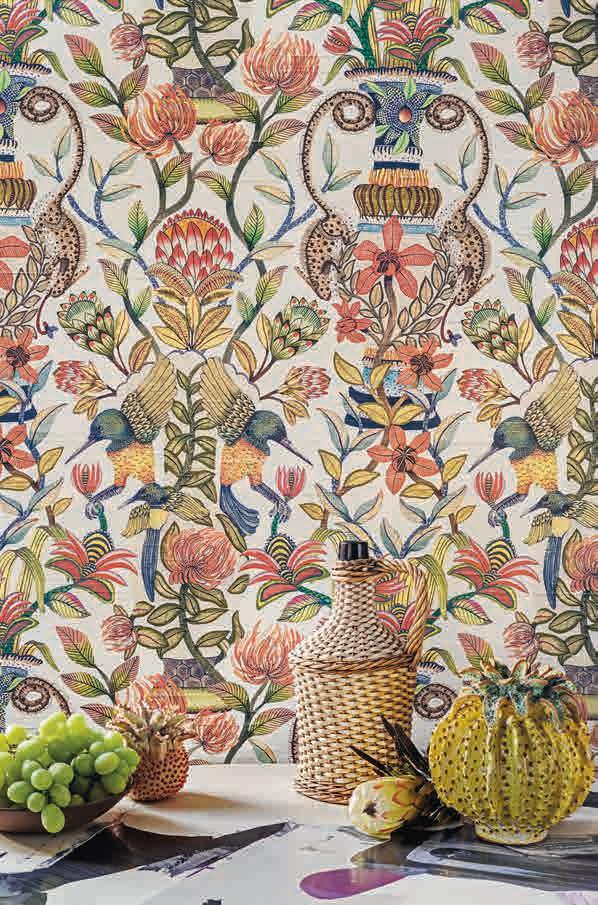
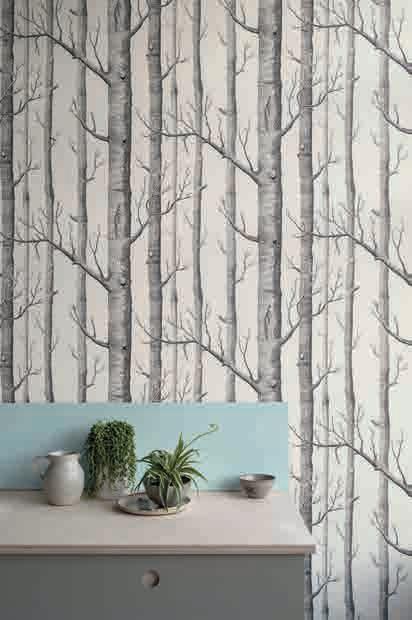

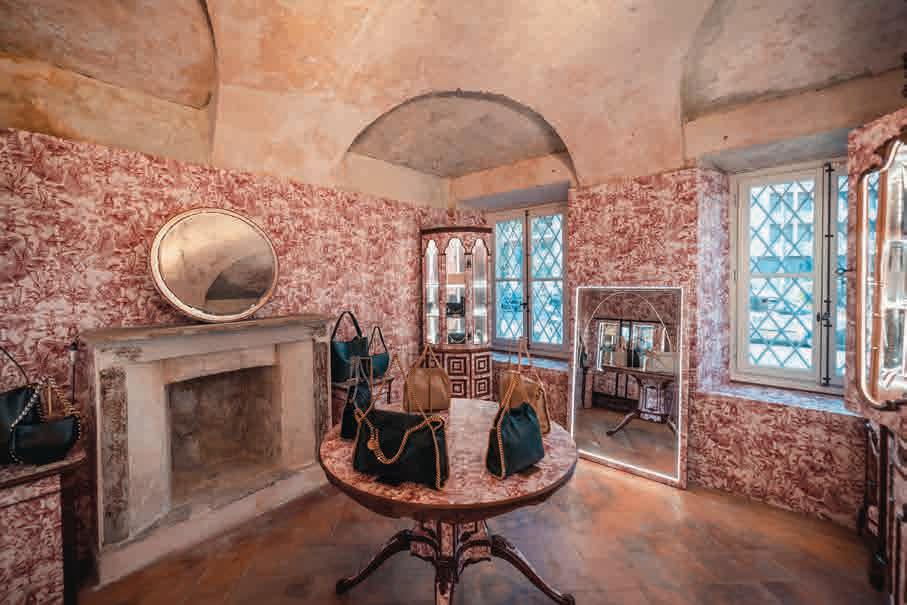
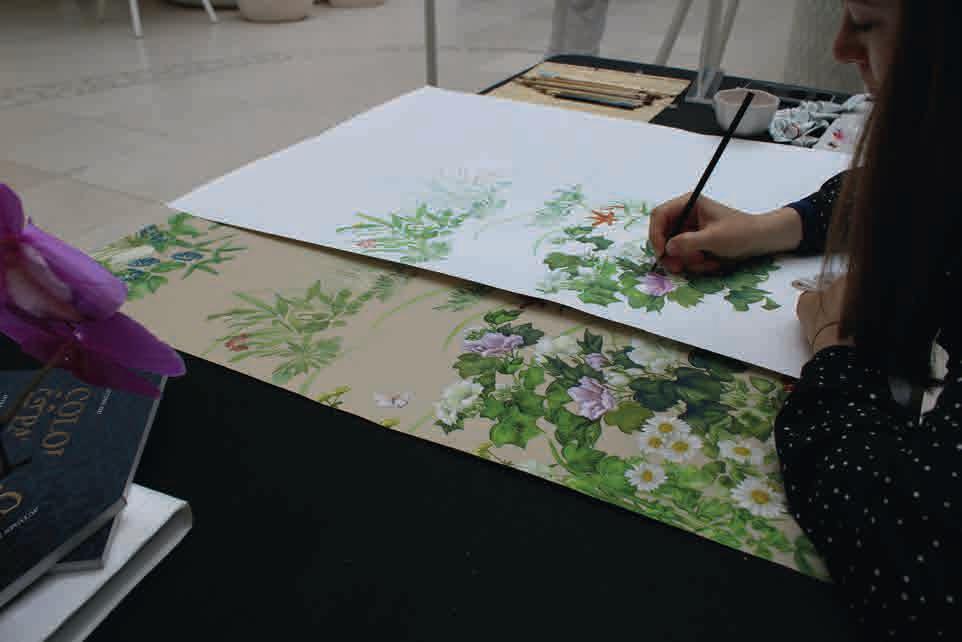

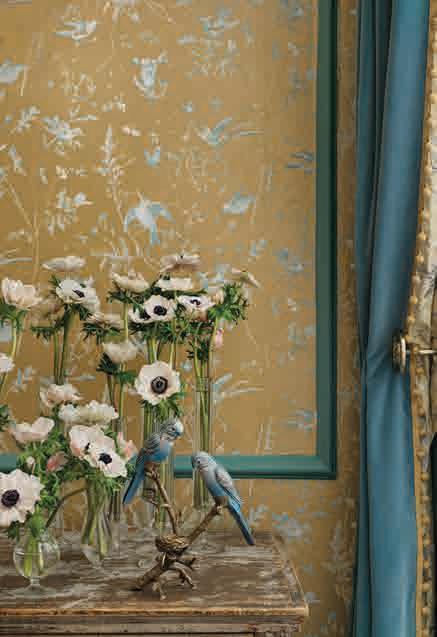
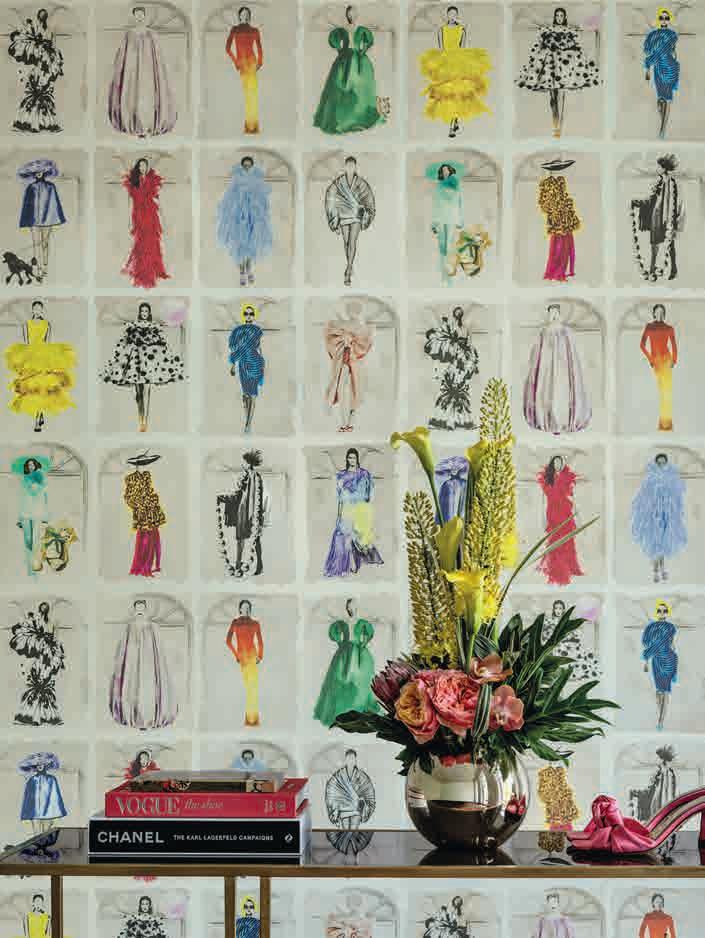





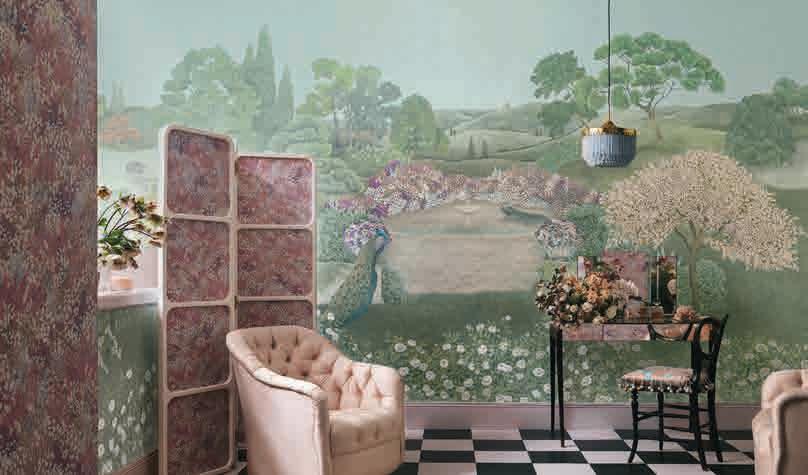


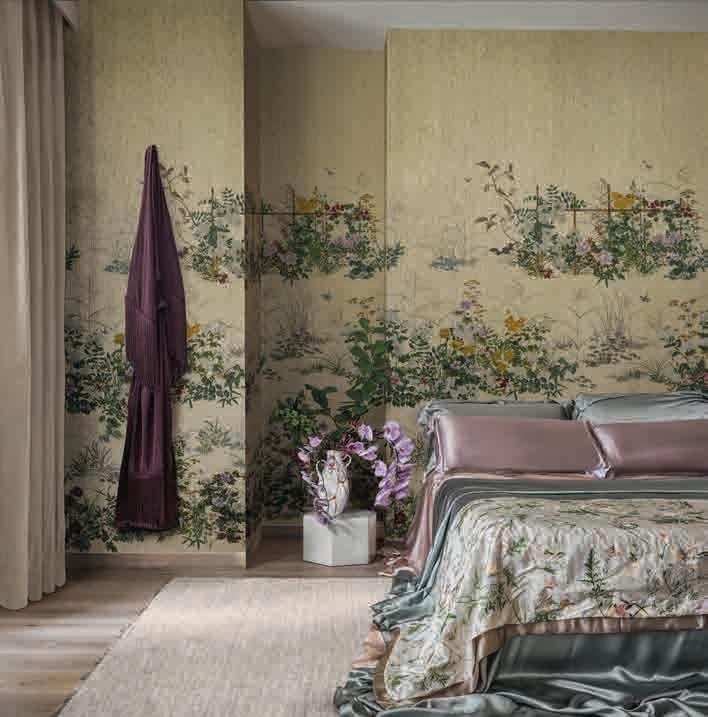
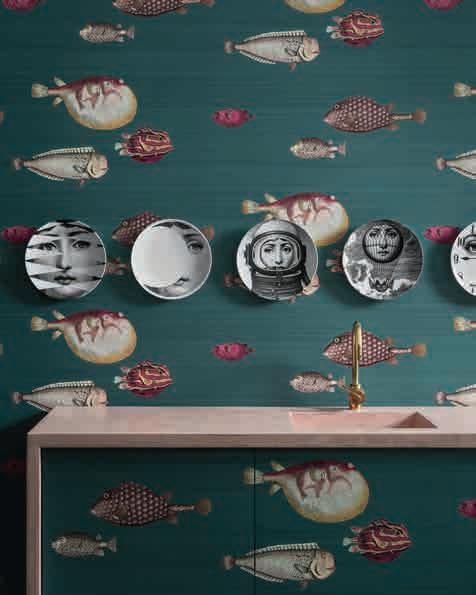
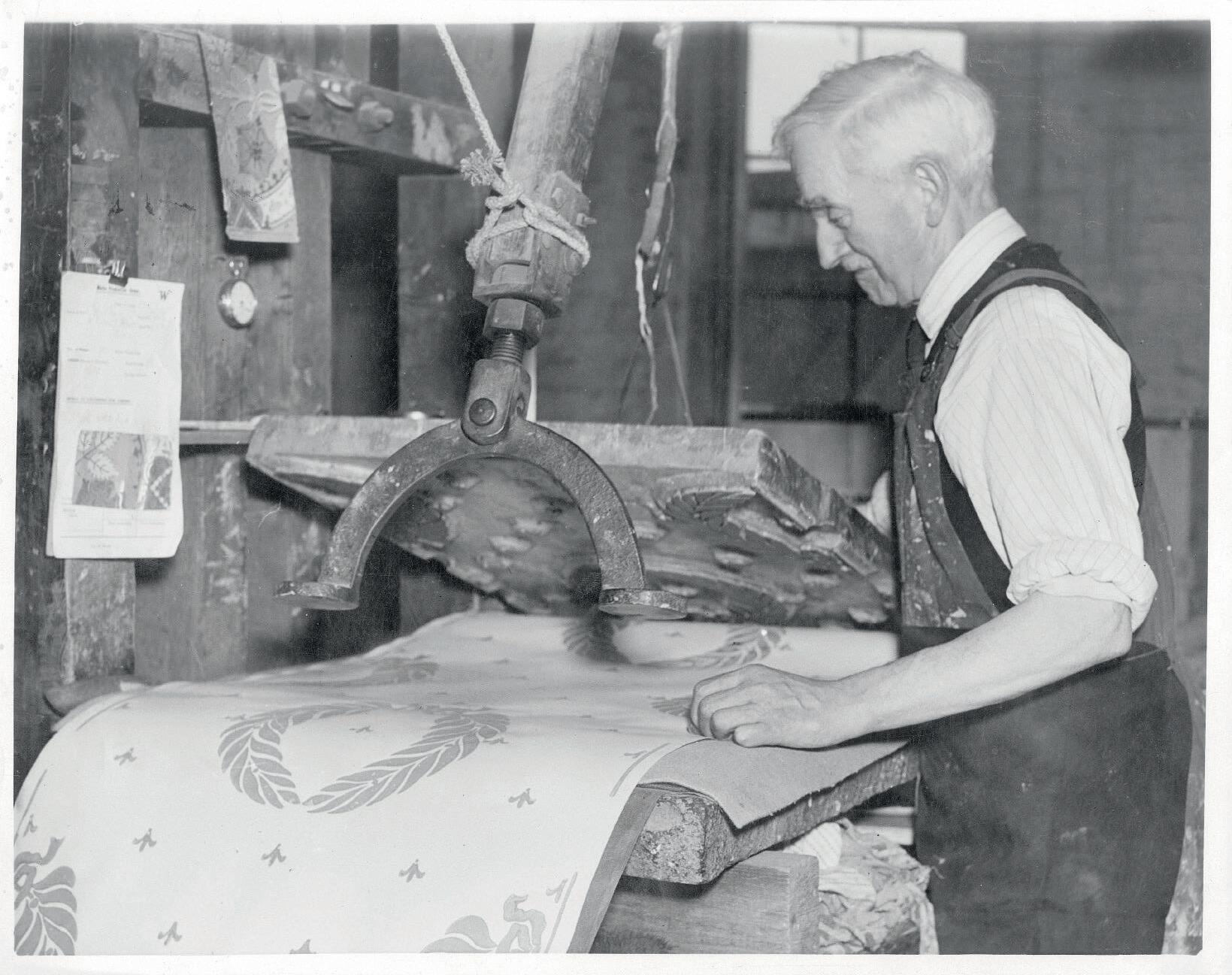
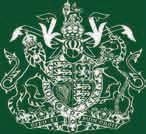
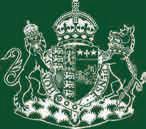

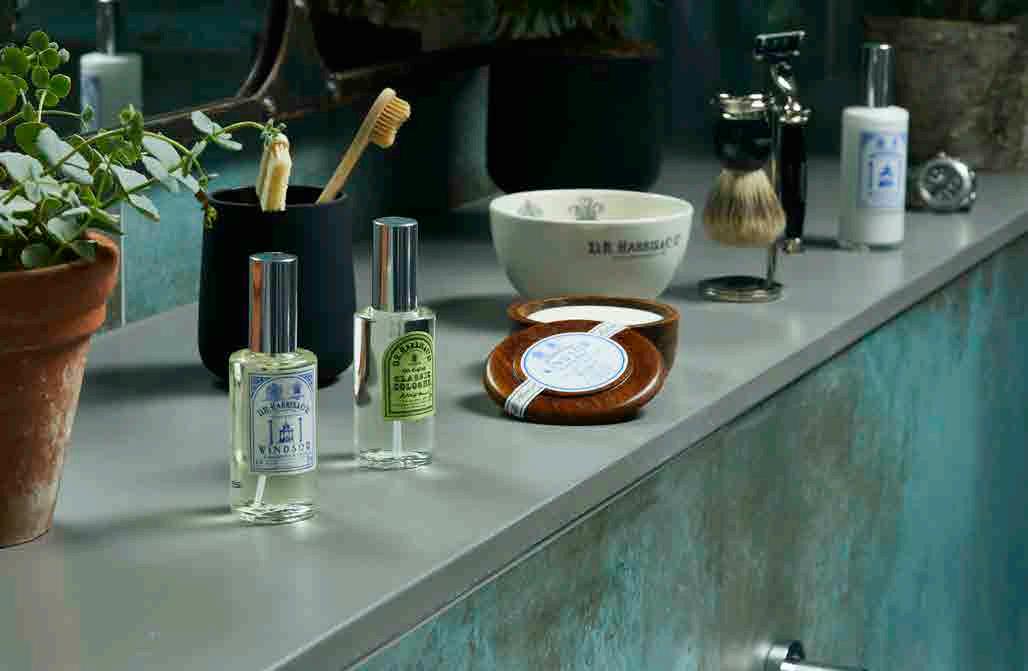


BY ROYAL APPOINTMENT
In collaboration with the Royal Warrant Holders Association


FAITHFUL FRIENDS




























Welcome to the spring issue of The Illustrated Royalty in Britain. In our cover feature, royal author Robert Hardman provides an insightful pro le of Princess Anne, the famously hard working royal and the right hand man’ to her brother The King. The Princess Royal shows no sign of slowing down, as she approaches her 75th birthday this August. The working members of the Royal Family have a packed schedule for the ma ority of the year, but it’s during spring and summer, when royal ceremonies, pageantry, sporting and social xtures come thick and fast, that we see them in full bloom. We’re celebrating The Season’ in this issue, with features on Chelsea Flower Show and Royal Ascot, the greatest fashion show on turf, while also looking back at the tradition of court presentations and the phenomenon of the debutante. Drawing on the rich heritage of The Illustrated London News archive, we commemorate the 80th anniversary of VE Day and the Royal Family’s wartime contribution and look back at royalty’s faithful canine friends through the years. And, in a nod to the ILN’s tradition of illustration, artist Adam Dant, whom many call a modern day Hogarth’, has created a splendid,
fact packed map of royal Britain. Our regal roam takes us for a sneak peek inside Balmoral and St James’s Palace, and for culture bu s we give you a taste of the fascinating royal exhibitions to see this summer. We’re proud to collaborate with the Royal Warrant Holders Association and we celebrate British craftsmanship and tradition, as we survey the spectrum of recently appointed Royal Warrant Holders, and spotlight creatives who are doing extraordinary work, thanks to the ueen Eli abeth Scholarship Trust ( EST). You can delve deeper into the some of these stories with Champagne Bollinger, Cole Son and Taylor’s, who are our Partners in this edition. We hope that The Illustrated Royalty in Britain can provide some inspiration in planning your own summer season.
Lucinda Gosling Editor
Prince Charles and his sister, Princess Anne, in the Picture Gallery at Buckingham Palace, taken to mark his eighth birthday on 14 November 1956

The Illustrated Royalty in Britain is published by Illustrated London News Limited, Soho Works, The Tea Building 4th Floor, 56 Shoreditch High Street, London E1 6JJ, UK. hello@iln.co.uk. iln.co.uk, royaltybritain.com
Editor
Lucinda Gosling
Production Consultant
David Gyseman
Art Direction & Design
Dominic Bell
Jo Murray-Bell
Lorna Wilson (Colour Retouching)
Contributors
Lisa Barnard, Simon Brooke, Adam Dant, Lucinda Gosling, Coryne Hall, Robert Hardman, Joe Little, Richard Mayson, Fiona McCarthy, Charlotte Metcalf
Sub-Editor
Simon Barker
Chief Executive
Lisa Barnard
tel: +44 (0)7887 823116
email: lisa.barnard@iln.co.uk
Group Advertising Director Jane Washbourn tel: +44 (0)7920 821577
email: jane.washbourn@iln.co.uk
Pictures
www.maryevans.com
tel: +44 (0)208 318 0034
All images are from
The Illustrated London News archive (and other sources) at Mary Evans Picture Library, Getty and Alamy unless otherwise stated.
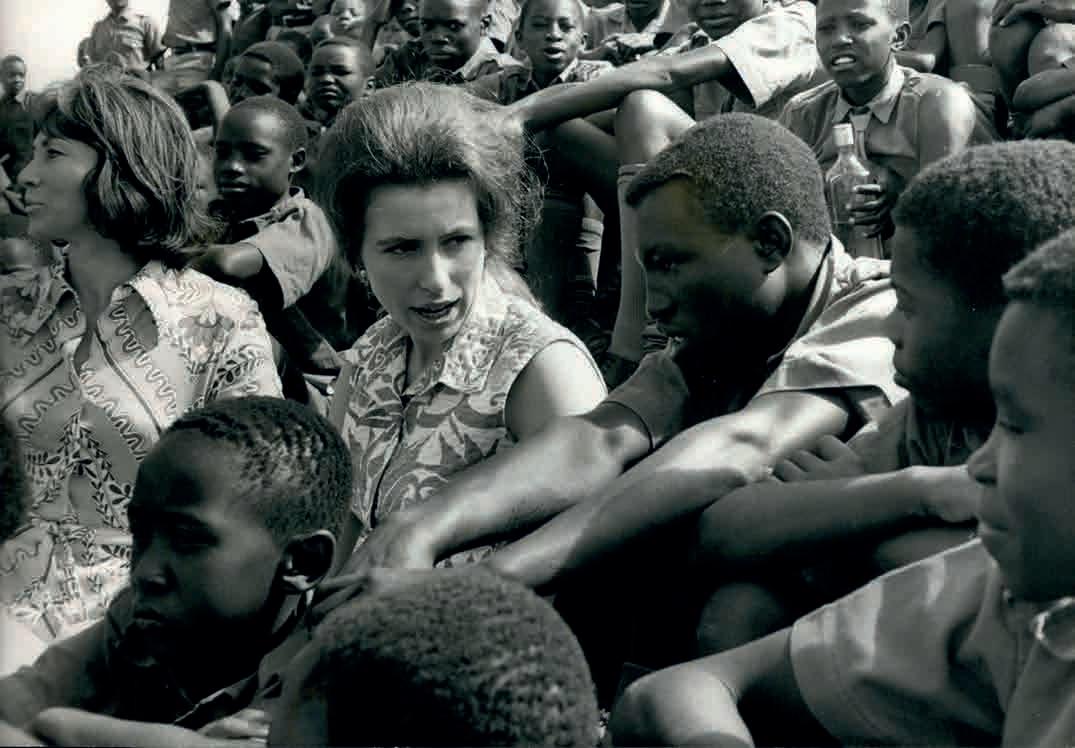
Artist Adam Dant lends his unique Hogarthian style to a specially commissioned map of royal Britain, celebrating the summer
The
and
Lucinda Gosling takes
As the King’s sister and right hand woman approaches a landmark birthday, Robert Hardman writes about Princess Anne’s fuss free work ethic, dedication and her vital role in the family rm.
LINE OF SUCCESSION
A Royal Warrant Holder for 140 years, Champagne Bollinger’s success is built on generations of expertise. Lisa Barnard talks to Chairman Étienne Bizot about the rm’s heritage and its plans for the future. 36 ROYAL WARRANT HOLDERS ASSOCIATION
From flagmakers to potted shrimp makers, Simon
Warrant Holders who place craftsmanship, quality and tradition at the heart of their business.
44 BY ROYAL APPOINTMENT
Four Royal Warrant Holders share their passion and expertise, and reflect on the unique position they hold within their respective industries.
48 A VICTORY IN THE MAKING
Taylor’s is one of the oldest founding Port Houses. On the anniversary of VE Day, it celebrates the release of an extraordinary commemorative blend –the 80 year old tawny, Victory Port. Richard Mayson gets to sample it.
52 ROYALTY IN BRITAIN RECOMMENDS
Things to do, places to go. We suggest some top cultural days out around the UK this summer, from a thousand years of history to a sparkling exhibition of ewels –all with a royal theme of course.
54 PAPERING PALACES AND PARLIAMENTS
A Royal Warrant Holder for nearly 70 years, as one of the UK’s most prestigious wallpaper companies, Cole & Son successfully combines sustainability, creativity and tradition. Fiona McCarthy writes about its rich heritage and bright future.










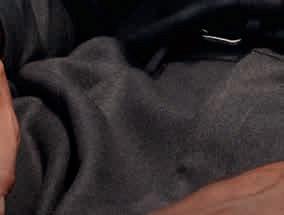
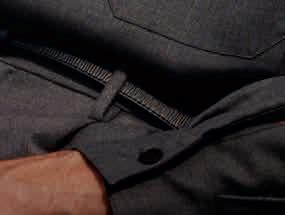
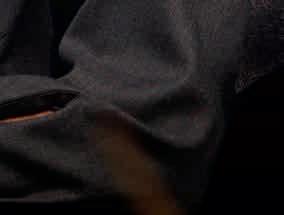



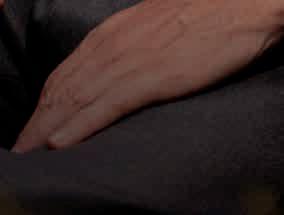


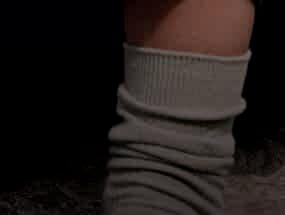


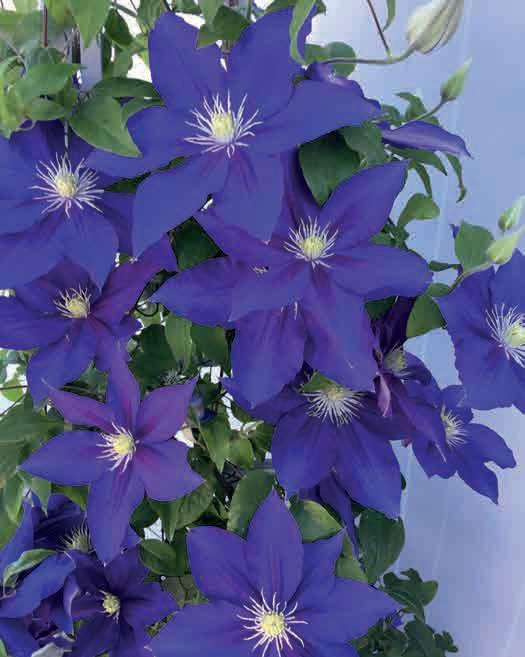
The ‘Duchess of Cornwall’ clematis grown by Royal Warrant Holder, The Guernsey Clematis Nursery Ltd, and an equally eye-catching Andy Warhol screen-print of Queen Elizabeth II at a Holyroodhouse exhibition
58 A ROYAL GARLAND
Chelsea Flower Show is the most fragrant event in the summer calendar, and one long beloved by the green ngered Royal Family, as Lucinda Gosling discovers.
62 THE NAME OF THE ROSE
Blooms for your borders, all with a royal namesake. 64 CLIMBING HIGH
Meet the Clematis king – a Royal Warrant Holder whose plants are bringing beauty to the royal gardens.
66 A NATION CELEBRATES
Marking the 80th anniversary of VE Day, Coryne Hall remembers the contribution of the Royal Family to the war e ort and how two princesses spent VE Day.
74 AGE OF ELEGANCE
Lucinda Gosling sets the scene and shares the stories behind the Edwardians exhibition at Buckingham Palace where art, photography, ewels and ob ets d’art reflect the exquisite taste of Edward VII and his circle.
80 KEEPING CRAFT ALIVE FOR 35 YEARS
The Queen Elizabeth Scholarship Trust has been helping artists, craftspeople and makers achieve their potential for 35 years. Charlotte Metcalfe reports on the incredible creative work of some of EST’s scholars.
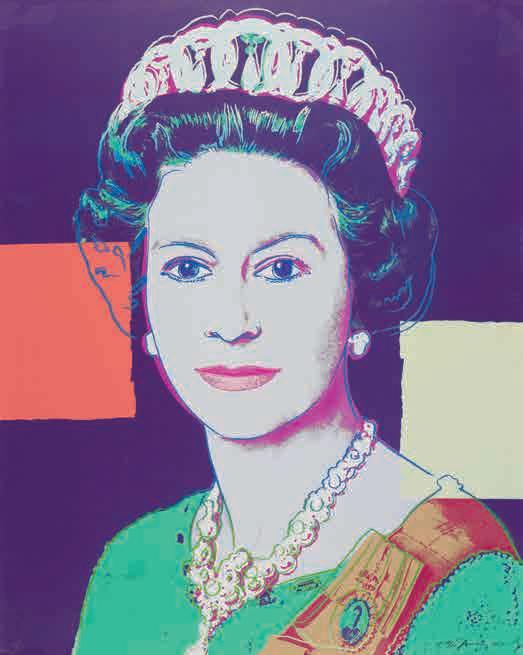
86 THOROUGHBRED STYLE
The Season’s most fashionable event, we look through the archives and round up some royal style icons who have stood out from the crowd at Royal Ascot.
88 CLOSE-UP AND PERSONAL
Lucinda Gosling picks highlights from A Century of Royal Photographs at the Palace of Holyroodhouse and considers the dynamic between monarchy and camera.
94 HIGHLAND HEAVEN
As the Royal Family’s Scottish haven opens to the public again, Joe Little takes us on a tour inside Balmoral.
100 PEDIGREE CHUMS
From Queen Victoria’s dachshunds to Queen Camilla’s rescue terriers, Lucinda Gosling introduces us to some royal faithful friends.
108 SECRETS OF ST JAMES’S PALACE
A lucky few will get to see inside St James’s Palace this spring. Lucinda Gosling looks back at the rich and storied history of London’s oldest royal residence.
114 ROYAL ENDORSEMENTS
Retailers have always tapped into the magical marketing power of royalty. We delve into the IL archives to discover a few choice examples of brand endorsement.

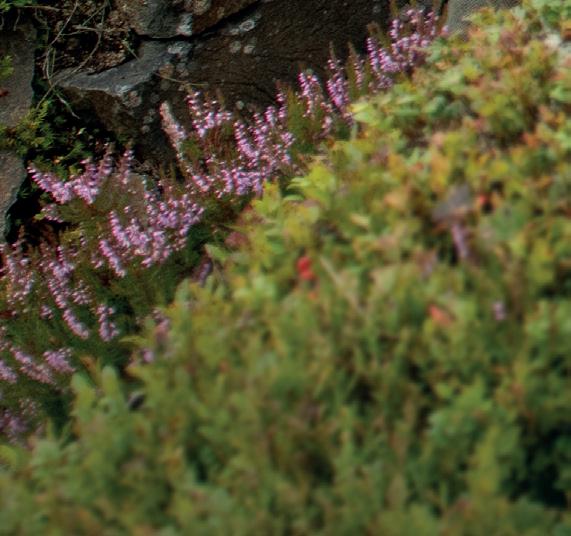
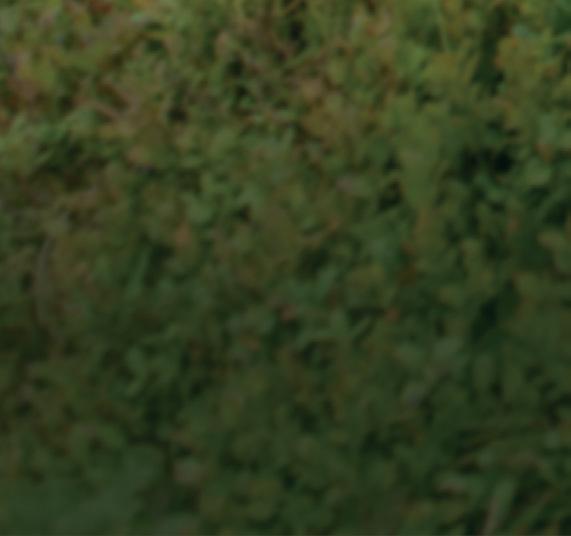
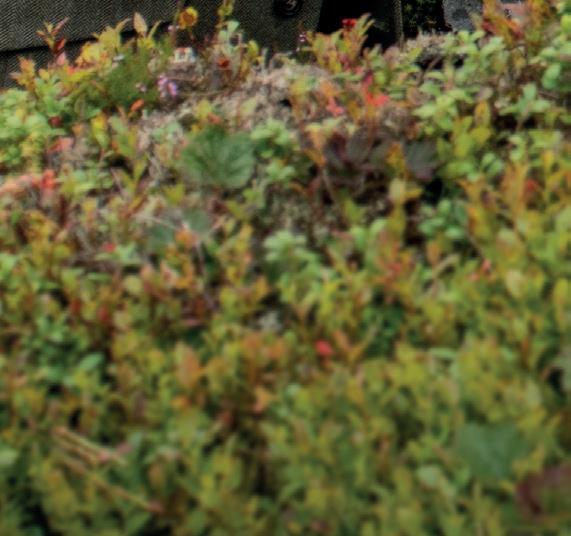

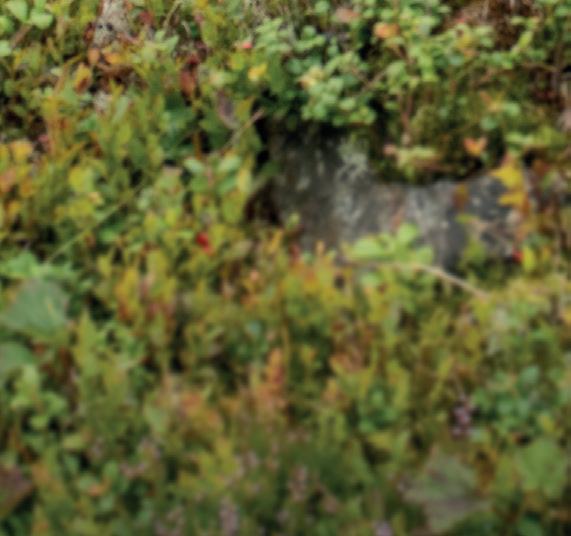
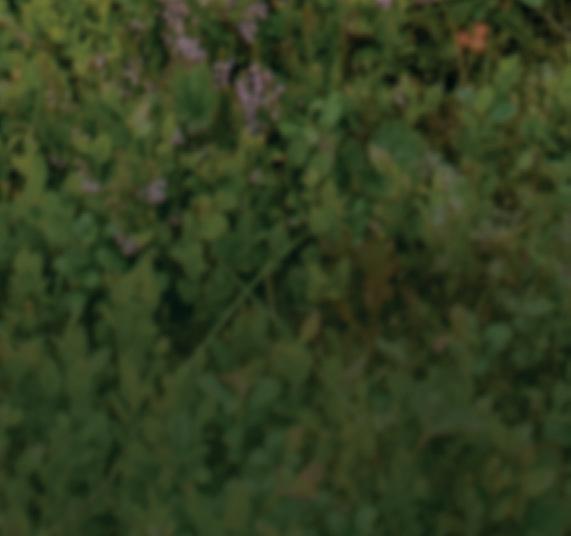




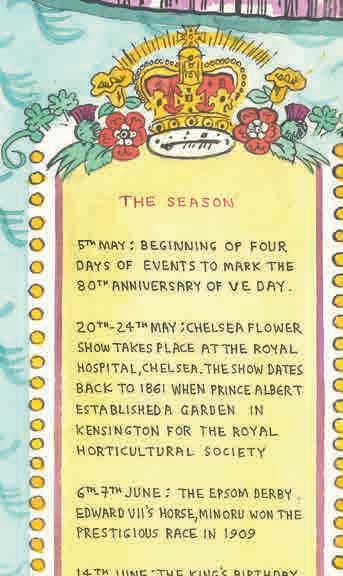
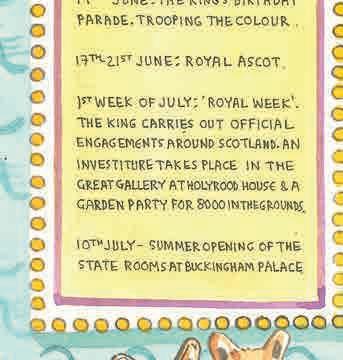
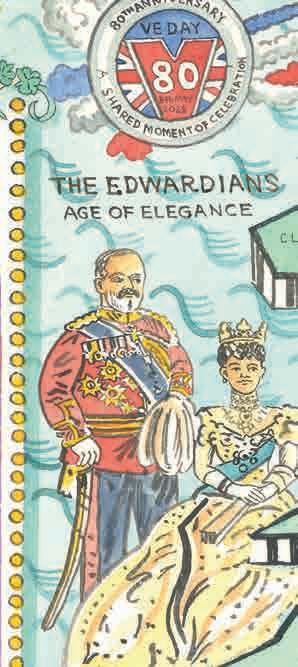
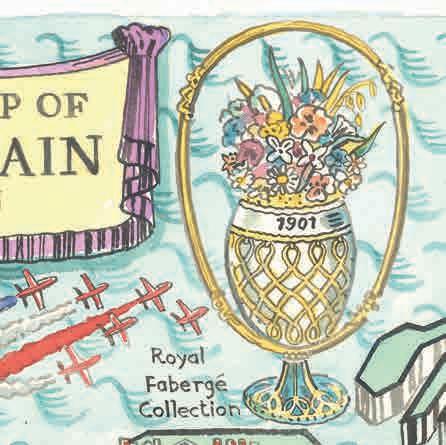
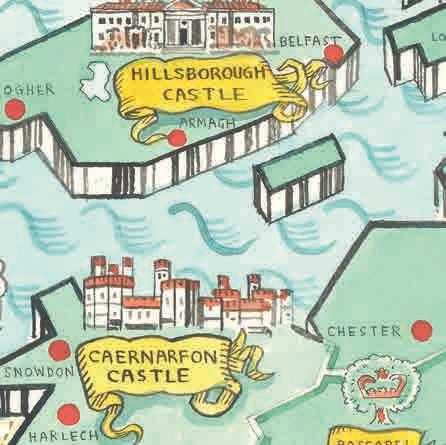
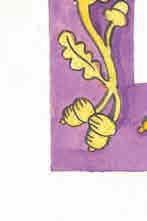
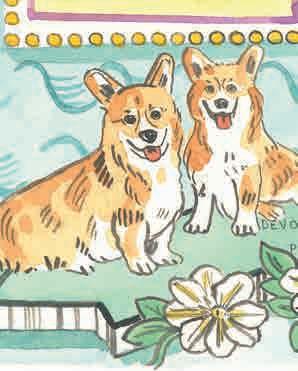


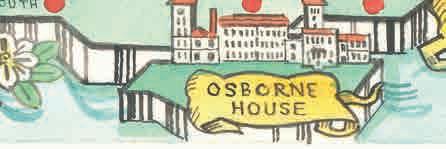


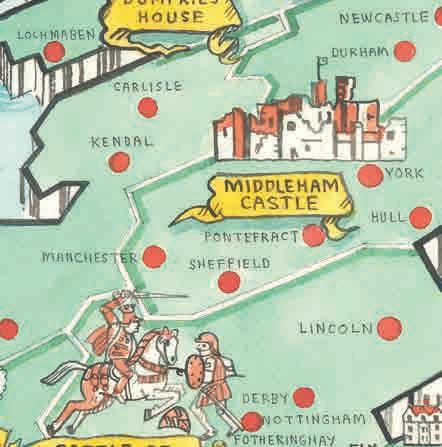
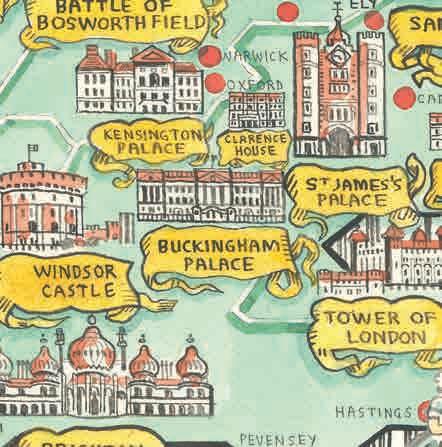
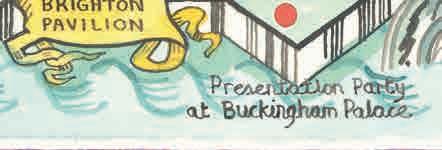


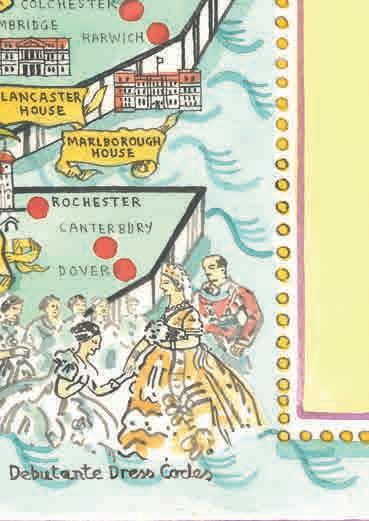

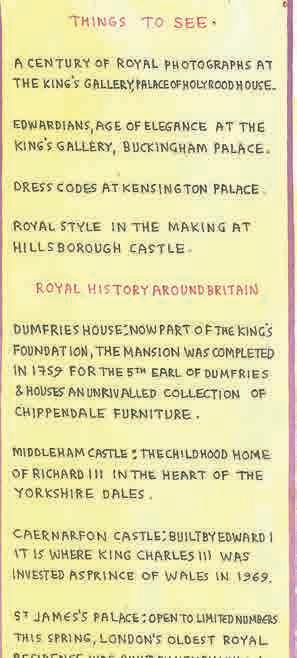
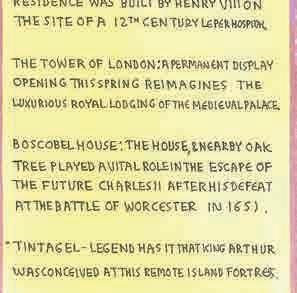

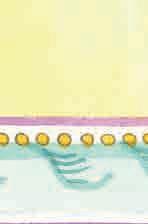

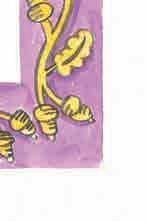
A round-up of recent royal visits and travels, around Britain and beyond

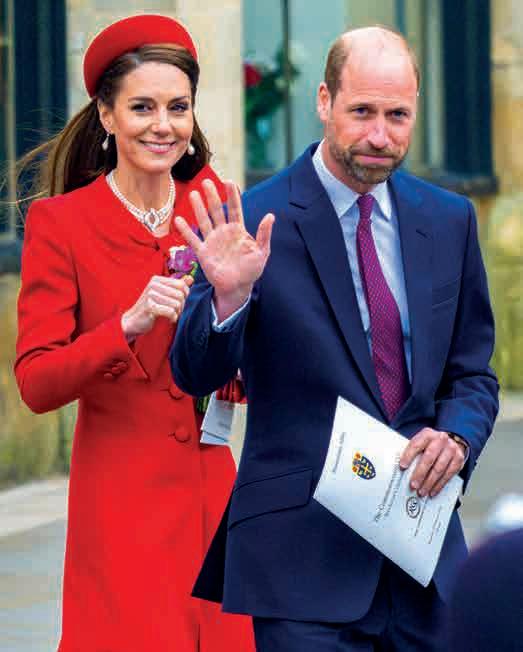

Clockwise from top: The Duke and Duchess of Edinburgh on their six-day tour of Nepal in February; The King and Queen sample whiskey at a Belfast pub on their three-day tour of Northern Ireland in March; and The Prince and Princess of Wales at Westminster Abbey for the Commonwealth Day service, also in March
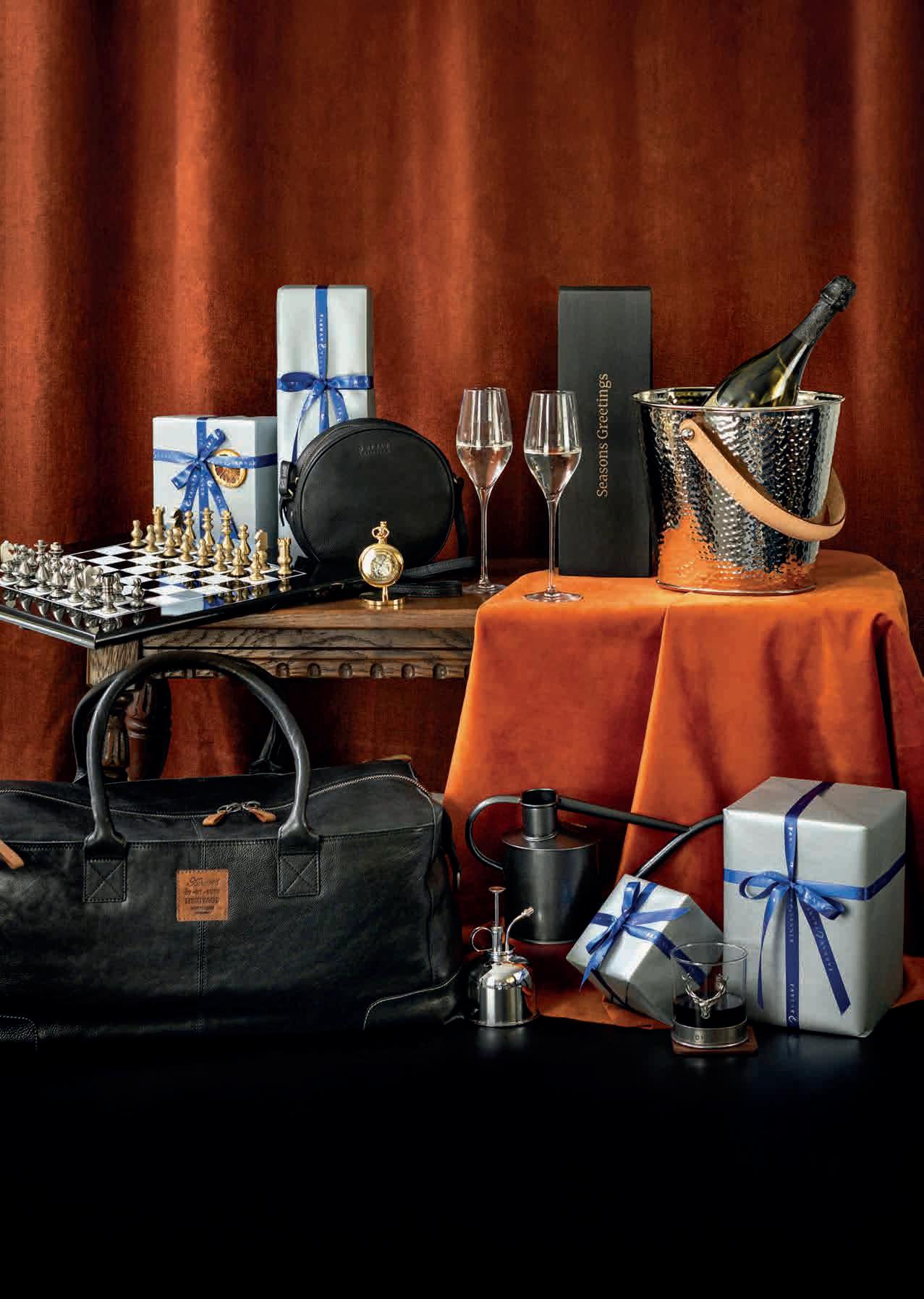



Above: The Prince of Wales meets soldiers from the Mercian Regiment in Estonia, some 80 miles from the Russian border. The Prince, who is their colonel-in-chief, visited in arch as they began a six-month deployment
Below: The Queen at the Charles Dickens Museum in London to celebrate 100 years since the house was opened to the public; and The Princess Royal presents trophies on Gold Cup day at the Cheltenham Festival


THE ROYAL DIARY
A calendar of events for the coming months.
2 May – 10th birthday of Princess Charlotte of Wales.
5 May – Beginning of four days of events to mark the 80th anniversary of VE Day.
7-11 May – Badminton Horse Trials.
15-18 May – Royal Windsor Horse Show.
The Duke of Edinburgh is show president, The Duchess of Edinburgh and The Princess Royal are vice-presidents.
20-24 May – Chelsea Flower Show takes place at the Royal Hospital, Chelsea. The royal family generally visit on the eve of opening day.
6-7 June – The Epsom Derby.
14 June – The King’s Birthday Parade, Trooping the Colour.
16 June – Garter Day – the Order of the Garter Ceremony takes place at Windsor.
17-21 June – Royal Ascot.
21 June – 43rd birthday of The Prince of Wales.
In the first week of uly, The King spends a few days in Scotland. An Investiture takes place in the Great Gallery at the Palace of Holyroodhouse, and a Garden Party for around 8,000 people is held in the palace grounds.
10 July The magnificent state rooms at Buckingham Palace open to the public for the summer.
13 July – The Wimbledon Men’s Singles Final takes place concluding the two-week Lawn Tennis Championships. The Princess of Wales, as Patron of the All England Club, usually attends the tournament in the latter stages and presents trophies to the winners and runners-up.
17 July – 78th birthday of Queen Camilla.
22 July – 12th birthday of Prince George of Wales.
The King enjoys a summer sojourn in Scotland, usually at his late grandmother’s Castle of Mey in remote Caithness and then at Birkhall on the Balmoral Estate, where The Queen will join him after a holiday with her children and grandchildren. Members of The King’s family visit Royal Deeside while Their Majesties are in residence.
15 August – 75th birthday of the Princess Royal.
15 August V ay 80th anniversary commemorations.
6 September – The Braemar Gathering, the most famous of all the Highland Games, takes place on the first Saturday of the month and has been a regular fixture in the monarch’s diary since the 19th century. Around this time the British prime minister and his or her spouse will spend a Saturday night at Balmoral and leave after church on Sunday.
8 September – Third anniversary of The King’s Accession
Visit royal.gov.uk for regular updates about royal engagements
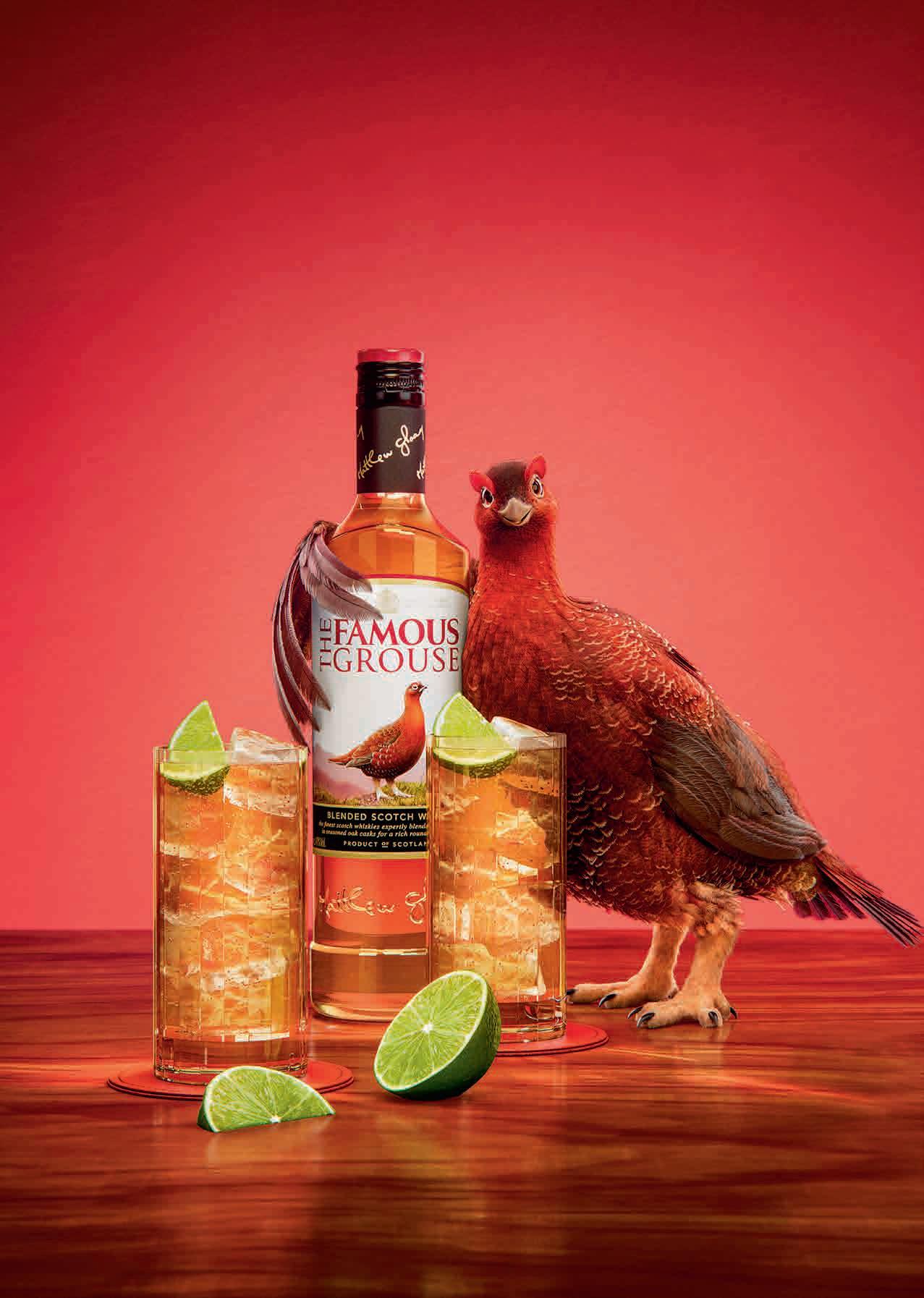
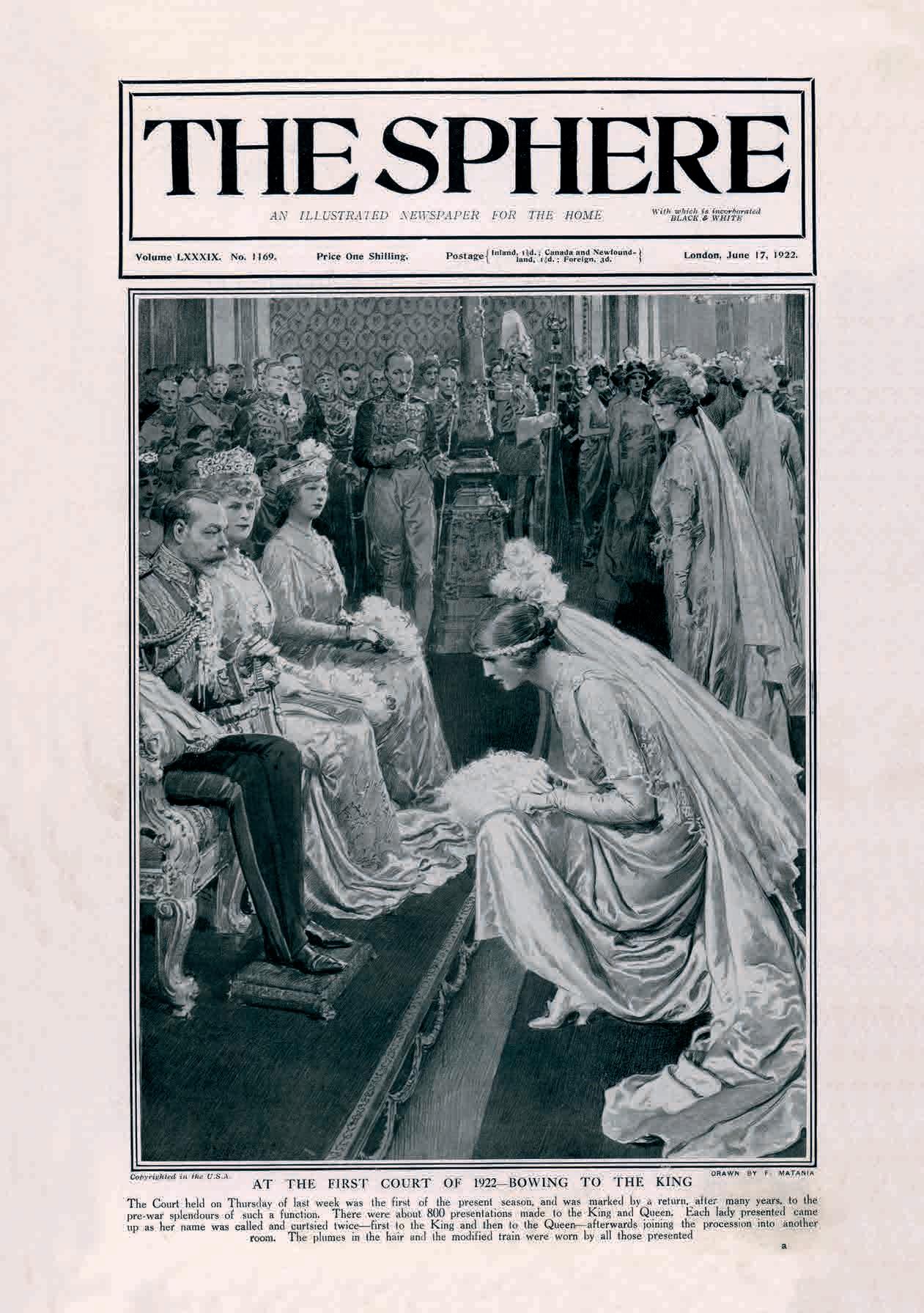
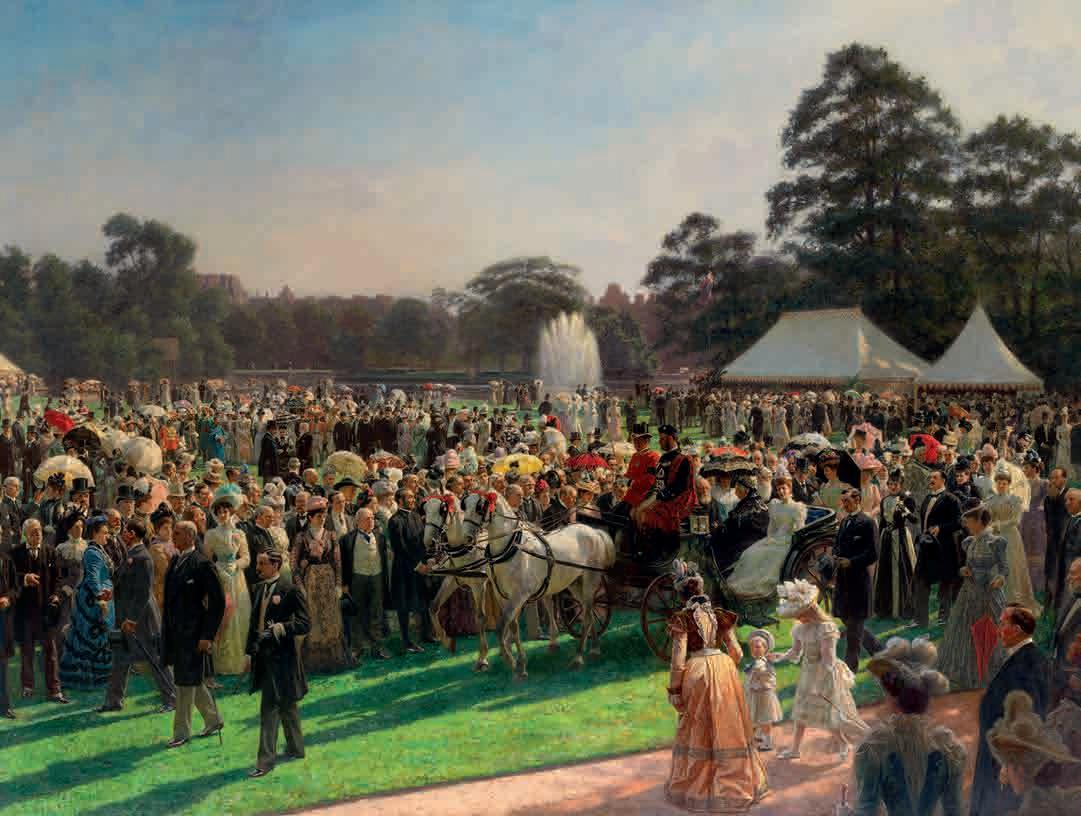
For many hopeful young girls from well-to-do families, the summer’s social whirl marked their debut in society. By Lucinda Gosling
On 7 January 1958, a report in The Times brought news of a development at Buckingham Palace. In addition to the two court presentations already scheduled to take place on 19 and 20 March, The Queen would now also host a third event on the 18th, “in view of the large number of applications for presentation of debutantes this year”. It seemed 1958 boasted a bumper crop of debs, a situation that was problematic for the Palace, and necessitated drastic action. In a concluding sentence that must have caused a ripple of consternation at breakfast tables across the Home Counties, the newspaper delivered the coup de grâce: “Presentation parties will not be held after this year.”
The long tradition of court presentations, where debutantes – the teenage daughters of the aristocracy and landed gentry –put on a frock and feathers, went to the palace and made their curtsey to the monarch, was being consigned to the scrapheap of history. The decision was part of a modernising drive at Buckingham Palace, widely acknowledged to have been
instigated by The Duke of Edinburgh. At a time of burgeoning meritocracy, when the Royal Family needed to appear relevant, an archaic ritual that emphasised and upheld centuries of class division felt embarrassingly outmoded. While the Palace’s reasons for dispensing with presentations was couched in diplomatic terms, Princess Margaret’s comment on the changes was famously barbed: “We had to put a stop to it,” she was alleged to have said. “Every tart in London was getting in.” n a chilly morning on 0 March, the final cohort of debs, defiantly dressed in flimsy, summer frocks under their coats, shivered as they queued outside the palace to make what would be the last curtsey. One onlooker, when asked for his views on this end of an era, was dismissive. “It isn’t the sight it used to be. In the old days they wore tiaras, and jewels and feathers, it was really something to see.” His companion added: “It’s just a load of old snobbery. It’s a good thing it’s come to an end.”
ack-pedal 0, 30 or 0 years from 1 8 and on days of
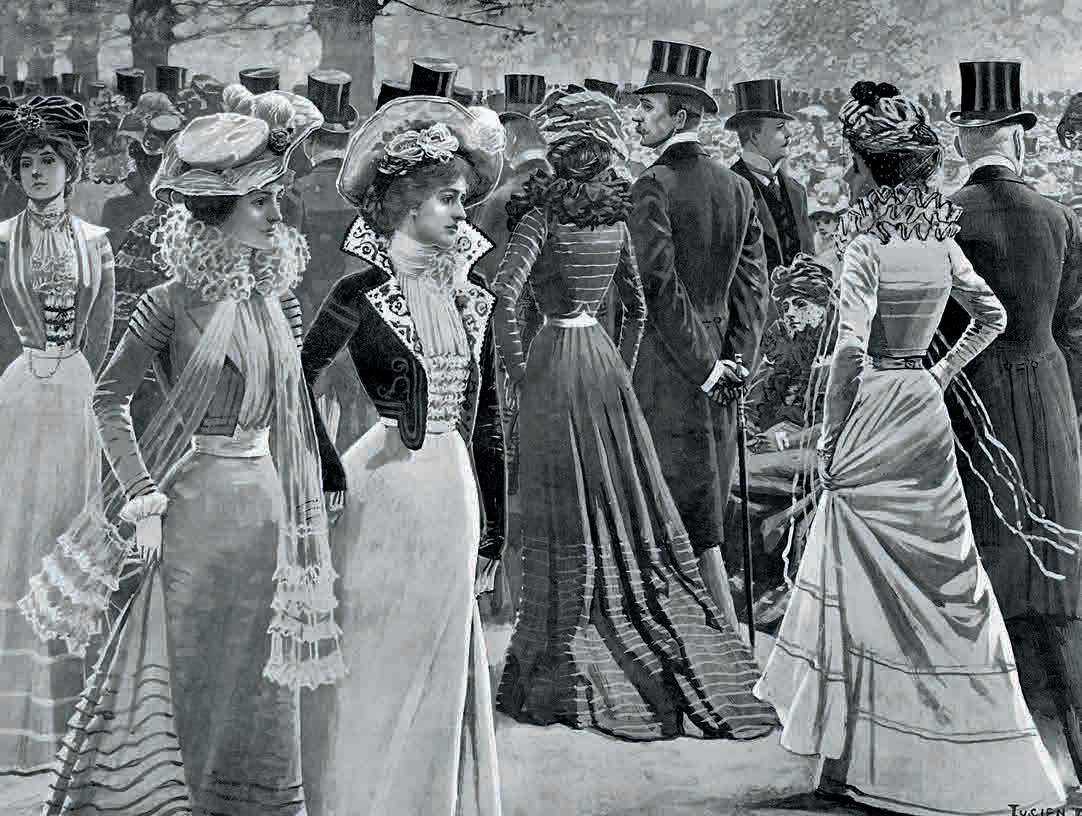
court presentations at Buckingham Palace, the Mall would be crowded with Londoners and day-trippers along the length of the processional route, there to gawp at the debutantes and their chaperones sitting in their carriages (or cars, depending on the date), as they inched painfully slowly towards the palace gates. It was a sight to see back then. A glamorous spectacle. A newsworthy event. A pin stuck in the social calendar. or shy debutantes, if the prospect of curtseying before The King or Queen wasn’t nerve-inducing enough, it was a further ordeal to have hundreds of eyes fi ed upon you for several hours beforehand. ut for the more confident ones, it was their moment in the spotlight. Press photographers liked to snap the debs passing the time as they waited in their cars, so those who were knitting, doing a crossword, playing backgammon or listening to a portable gramophone, had more chance of getting their pictures published in the papers. What was done in answer to the call of nature during these long hours remains a mystery, although in Queen Victoria’s day, a chamber pot behind a screen once ladies were in the palace was one, rather unsatisfactory solution. fter all the build-up, the moment of presentation was brief. lady would wait in the crush of an anteroom before handing her all-important presentation card over to an o cial. Daughters of peers went first, followed by the rest, walking sedately into the ballroom to give a deep curtsey (practised relentlessly at deportment lessons) in front of the royal party. Depending on the number of oyal amily members present, she would be obliged to give several more curtseys before


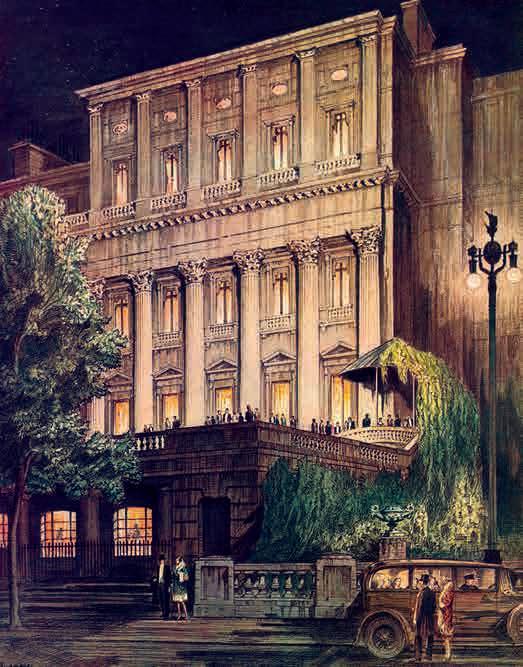
Facing page: All dressed up to promenade in Rotten Row in 1901 and a 1963 Tatler cover, featuring model Jean Shrimpton, to announce the onset of the London Season
Left: A page from The Sphere shows how debs whiled away the time in The Mall waiting to reach Buckingham Palace and below , the Gala of the Ton on Carlton House Terrace
Previous pages: A 1922 cover of The Sphere by Fortunino Matania showing debutantes being presented to King George V and Queen Mary, and Laurits Tuxen’s painting of Queen Victoria’s Diamond Jubilee garden party in 1897. The painting forms part of the exhibition, ‘Edwardians – Age of Elegance’ at the King’s Gallery, Buckingham Palace until 23 November
backing away as gracefully as a heavy satin train allowed. Queen Victoria found these lengthy events draining, and often left halfway through, leaving either The Princess of Wales or Princess Christian to preside. For the poor debutantes of 1936, Edward VIII decided that presentations in the palace’s garden would be a more modern alternative, and they were advised to wear day dresses and hats instead of court gowns and feathers. Unfortunately, midway through the ceremony, the heavens opened, causing everyone to run for shelter, more akin to drowned rats than social butterflies. Those who had not managed to make their curtsey must have been disappointed to receive a letter some days later telling them they should consider themselves presented.
The history of court presentations has no fi ed origin. Instead, it evolved as a result of shifting rituals and courtly obligations dating back to the Tudor and Stuart eras, when being present at court was essential for forging alliances, and for maintaining power, status and favour. By Queen Anne’s reign, young aristocratic women would have their entry into adulthood symbolically announced by an introduction to the monarch, and in the Georgian era, as Britain’s parliamentary system began to adhere to a formal calendar, aristocratic families would spend fi ed times in London. ecause 18thcentury roads were atrocious during winter, it made practical sense for this migration to take place in the spring when the weather was more conducive to travel. With the emergence of the the ton’ (the most elite and fashionable stratum of society), the London eason began to take shape. amous hostesses such as Lady Jersey and Vicountess Castlereagh, part of the Prince Regent’s ‘Carlton House Set’, took control of the smartest social occasions, notably midweek balls at ‘Almacks’, the assembly rooms in St James’s. They ensured only guests of the finest pedigree were accepted, and undesirables were kept out. By the time of Queen Victoria, high society had fully assimilated to follow and participate in a number of social functions forming what we broadly recognise today as the Season. Besides court presentations, drawing rooms, garden parties and levees, the essential dates in society’s summer diary included the opening of the summer e hibition at the Royal Academy, the opera season at Covent Garden, the Royal Caledonian Ball, racing at Ascot and Goodwood, the Eton v Harrow cricket match at Lord’s, regattas at Henley and Cowes, the All England Lawn Tennis Championships at Wimbledon, and by 1913, Chelsea Flower Show. Glyndebourne Festival came a little later, in 1934. Added to this was a daily round of social mingling; riding in Rotten Row and promenading in Hyde Park, trips to the theatre, polo matches, tea on the lawn at clubs like Ranelagh and attending glittering balls in one of London’s great aristocratic mansions.
While the participants in this social whirl represented a small fraction of the population, the interest in the season
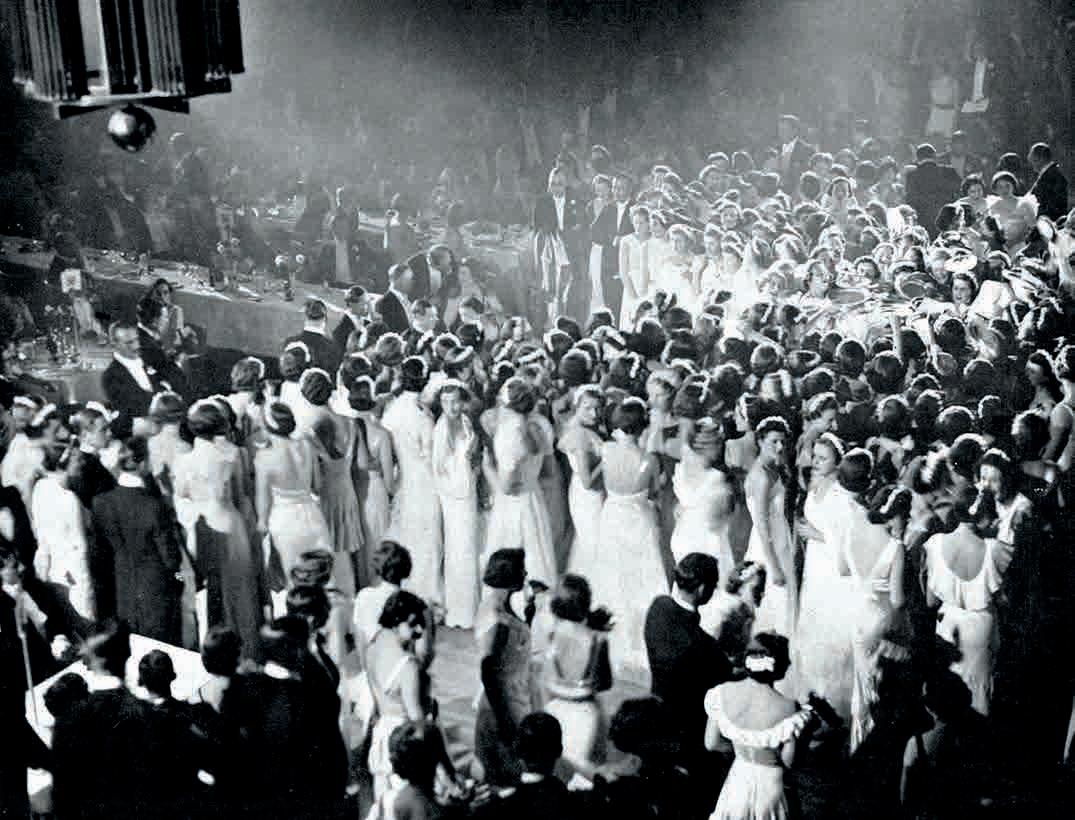
and its spectacle was more widespread. The public enjoyed the display, atmosphere and gossip, and behind the scenes, a whole industry made a healthy living from the eason florists, caterers, musicians, dressmakers, hairdressers, cab drivers and hotels. Today, most of the Season’s events are accessible to anyone who pays for a ticket. But even if we don’t actually go to Chelsea, many of us watch the television highlights, especially the first day when celebrities and members of the Royal Family tour the show. In 1903, a contemporary handbook, ondon o da , described the Royal Enclosure at scot as filled with elegantly dressed ladies, whose chief object would seem to be to rival each other in the richness and splendour of their costumes”. Little has changed in the intervening 120 years. Today, we’re compelled to scroll online, looking at best-dressed at scot round-ups and scrutinising the outfits and hats. Most of us, if only on a vicarious level, can take part in the Season if we wish to.
A deb’s Season ran in tandem with these events, but followed a di erent pattern, with a packed diary of balls, luncheons and cocktail parties. These events were meticulously organised by society women for their daughters and family friends; fathers had little involvement other than writing cheques. Parties gave girls an unprecedented opportunity to come into contact with eligible members of the opposite sex, and perhaps to form a romantic attachment. In essence, the Season was an enjoyable way for the upper classes to forge dynastic alliances. Little wonder Lord Byron called the eason in his day the Marriage Market .
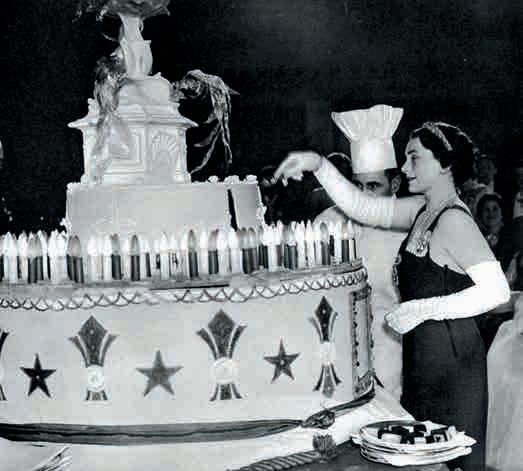
Doing the eason’ re uired a new wardrobe for every social occasion, and of course, the allimportant court dress, which up until the econd World War, was usually worn with a lappet or veil and feathers secured in the hair, intended to represent The Prince of Wales. ach year, the Lord Chamberlain’s o ce would display a gown showing the correct length of skirt and train. More often than not, the dress on display was supplied by court dressmakers, eville. This summer, visitors to Kensington Palace can see a 1 0s eville court dress in Dress Codes’, an e hibition of 3 pieces from the oyal Ceremonial Dress Collection which e plores the power of clothes and the messages they send. mong the outfits worn by Queen Victoria, Queen le andra, the Duke of Windsor and Diana, Princess of Wales, are others worn by non-royals for court functions and ceremonies. In 1 , nnie, Lady olcroft, wore the striking
eville beaded, black-and-white dress with a spectacular train to be presented at court. debutante would have been e pected to wear something more delicately coloured but Lady olcroft, a married woman, could choose to be more adventurous. eville, who made Queen Mary’s coronation gown, were known for their lavish but generally conservative designs, so this is an unusual e ample. Three decades later, in 1 8, eorgina Milner, whirled through a summer of balls and parties wearing a strapless, slipper pink tulle dress studded with organ a roses by Worth. This youthful, romantic confection, ideal for a debutante can also be seen in the e hibition. eorgina shared a coming-out dance with her cousin, le andra ridgewater at the yde Park otel on une. It’s likely her Worth gown was worn then. ‘Dress Codes’ is at Kensington Palace until 30 November 0 hrp.org.uk
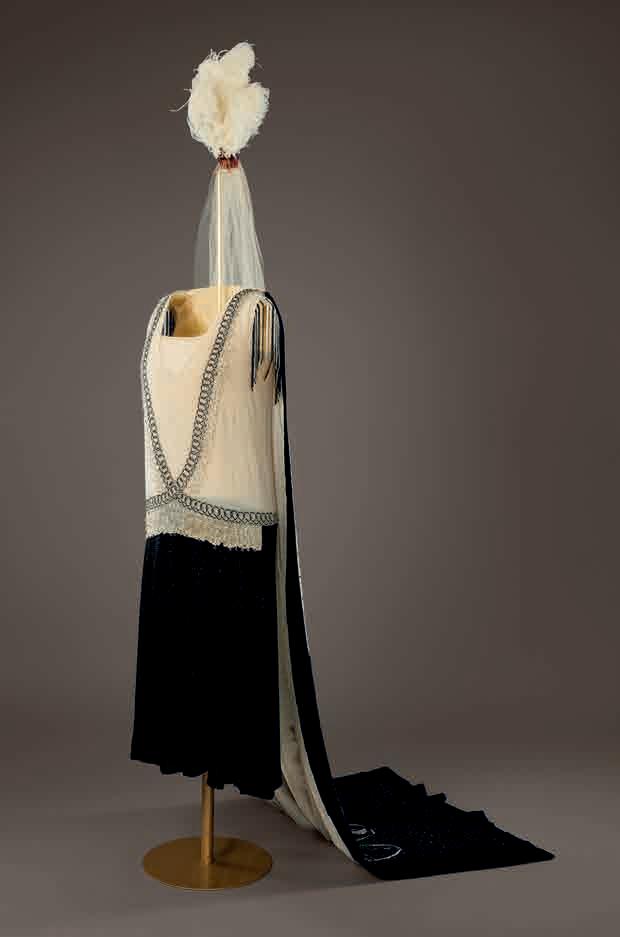
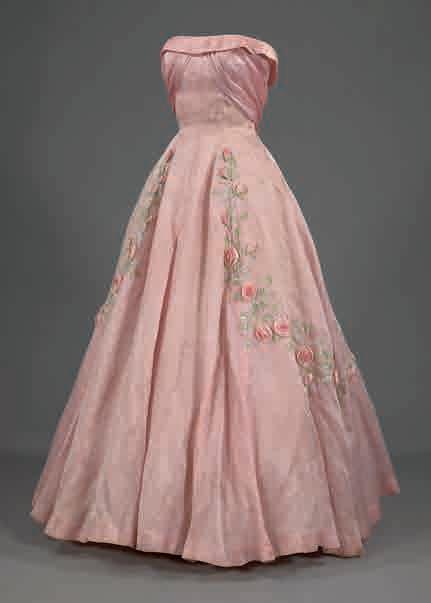


When the death knell of court presentations was sounded in 1958, for those who made a living from the eason, it was time to display a sti upper lip and carry on regardless. The Tatler’s social editor, Jennifer, aka Betty, Kenward, took a stoic view of the situation, claiming “the Season will go on just the same”. To an extent she was right, and other events began to be viewed as a focal point of the deb’s Season instead. There was the Berkeley Dress Show and Queen Charlotte’s Ball, a bizarre event introduced by Lady Howard de Walden in 1925. Inspired by Queen Charlotte’s desire to have her maids-of-honour around her each year on her birthday, the ball, often held at the Grosvenor ouse otel (which had the capacity) was attended by each year’s debutantes, all dressed in virginal white, with a selection of the most popular chosen to wheel in a huge ‘birthday’ cake. After all the girls had curtseyed to the cake in snowy unison, it would be cut by the Dame d’honneur’ – sometimes a royal duchess.
The attendance of royalty at one of the Season’s events gave it a palpable sense of occasion. It still does. Those lucky enough to have attended a garden party at Buckingham Palace will know the ripple of excitement as the royal party make their way among the guests, close by but separated thanks to a subtle bit of choreography by the Royal Bodyguard of the Yeoman of the Guard. In their uaint costume of doublet, ru , red stockings and buckled shoes, they line up to create lanes for the Royal Family to walk through as the guests, a kind of audience, point their phones and record the
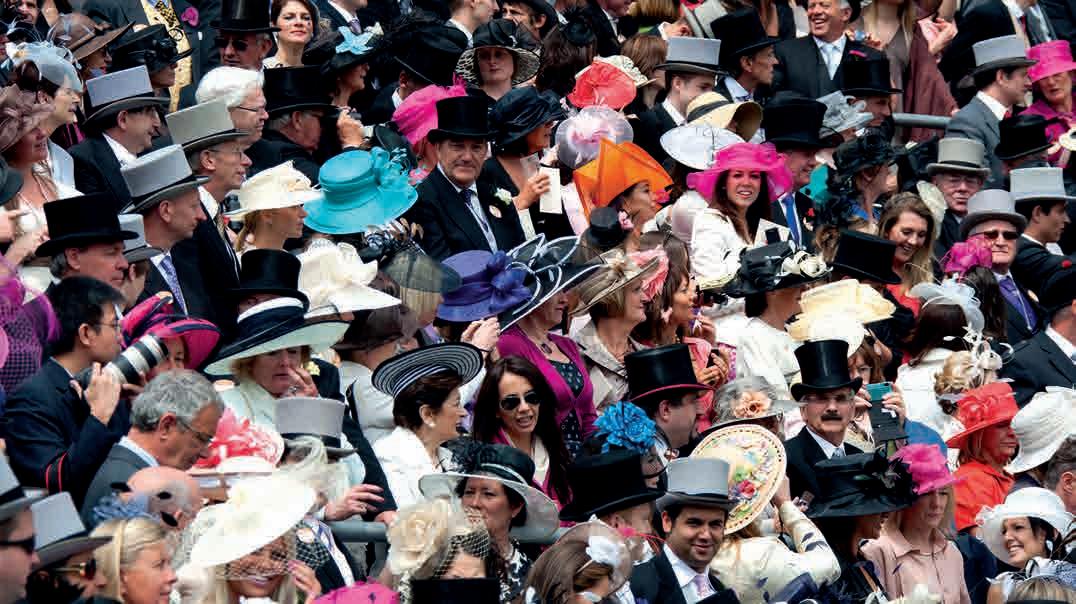

day for posterity. The procession of royal carriages down the course at Ascot, initiated by George IV in 1825, elevates the occasion above other race meetings. There are also the royal ceremonies that take place throughout the season. The medieval Order of the Garter ceremony, and Trooping the Colour, marking the monarch’s o cial birthday, both take place in June.
It’s 67 years since the debutantes of 1958 made their curtsey at the palace, and Jennifer of Tatler fame might be relieved to learn that her prediction was not too far from the truth. There has been a revival of Queen Charlotte’s Ball in more recent times, but one with a modern angle. Granted, the girls are chosen from two exclusive London schools, and the sponsors are drawn from the luxury sector, but the emphasis is on charity fundraising and doing something impressive in one’s gap year. The debutante of old, the ingénue who was plucked from the schoolroom and dropped into the ballroom, is now obsolete. Gone are the days when young women went to parties with their mothers in the hope of ensnaring a nice young man for a husband. But arguably the best bits of the eason – the sporting and social fi tures – remain.
Full of colour, glamour, history, pomp and pageantry, the 1st-century eason seems very much alive and well. But if you’re taking part this summer, remember those debs of 1936 and don’t forget your umbrella. This is Britain, after all Lucinda Gosling is author of ‘Debutantes and the London Season’ published by Shire Books’
The famously hard-working Princess Anne’s role has become ever more vital during a challenging year for The King. Royal author Robert Hardman provides insight as she approaches a milestone birthday
Soon after the procession had arrived back at Buckingham Palace following the coronation of Charles III, the royal party assembled in front of the o cial photographer, Hugo Burnand. The family group portrait, in particular, attracted much media comment, mainly because of two absentees, the Dukes of York and Sussex (both had been at the service in Westminster Abbey but were not in the o cial portrait afterwards).
More telling, perhaps, was the placement of those who were actually in the photograph. For who do we see immediately next to The King? Queen Camilla is on one side, of course, standing to the monarch’s left. His right hand man’, however, is the Princess Royal. And given the turn of events since, she has more than earned that accolade.
For time and again, when both The King and The Princess of Wales (and, by extension, The Prince of Wales, too) were unable to carry out important royal duties all through the profoundly challenging year which followed, the rest of the family had to step up and plug the gaps.
Very often, it was The Princess who was to be found doing the heavy lifting. A typical example was back in those dark days of February 2024. The King had ust revealed that he was undergoing treatment for cancer while The Princess of Wales had yet to announce her own diagnosis.
Suddenly, came news of the death of the President of Namibia, an important member nation of the Commonwealth (of which The King is Head). A very senior representative would be expected at the funeral. ormally, it would fall to the heir to the throne, who is always the K’s de facto chief mourner’ ( ust as The King was in his days as Prince of Wales). Prince William, very understandably, told his father that he should be looking after his wife.
Step forward The Princess Royal. As the long serving patron of the Scottish Rugby Union, she was supposed to be attending the most eagerly anticipated rugby match of the year, the Calcutta Cup between Scotland and England. There was considerable surprise and disappointment among the rugby fans at Murray eld when she failed to appear, though no one, surely, was more disappointed than The Princess herself. Duty had trumped rugby and she was on her way to Namibia for the weekend, returning on an overnight flight in order to be back in time for engagements on Monday. one of this made the newspapers. Public recognition has never been a priority for a princess who is endearingly reluctant to blow her own trumpet. Her position in the line of succession may have fallen to number 18, following the recent birth of a second daughter to Princess Beatrice. Within the Royal Household, however, no one is in any doubt. As she

The Princess Royal at the presentation of the new Sovereign’s Standard to the Blues and Royals at Buckingham Palace in June 2023. She has quietly stepped up during a challenging year for both The King and The Princess of Wales
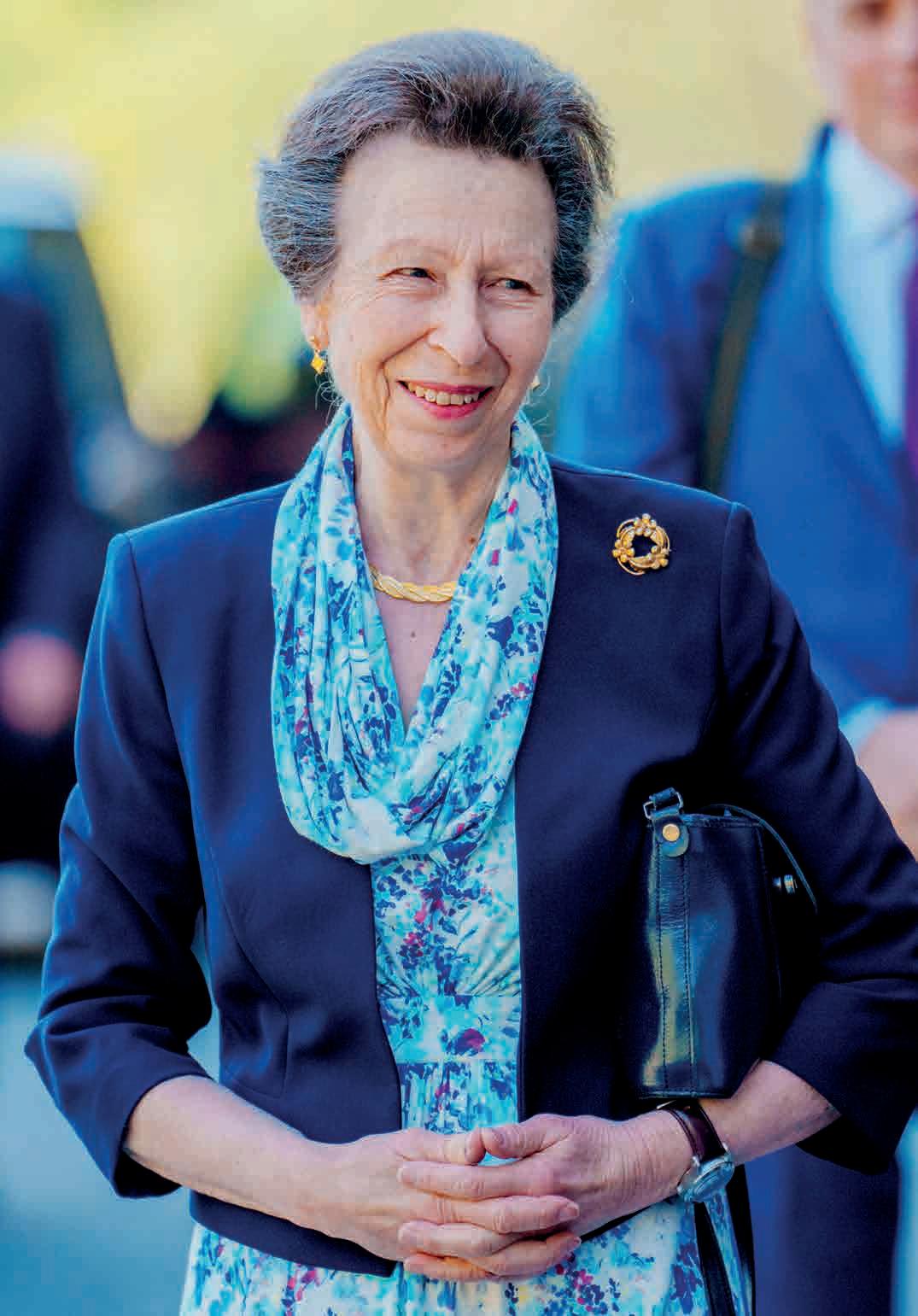
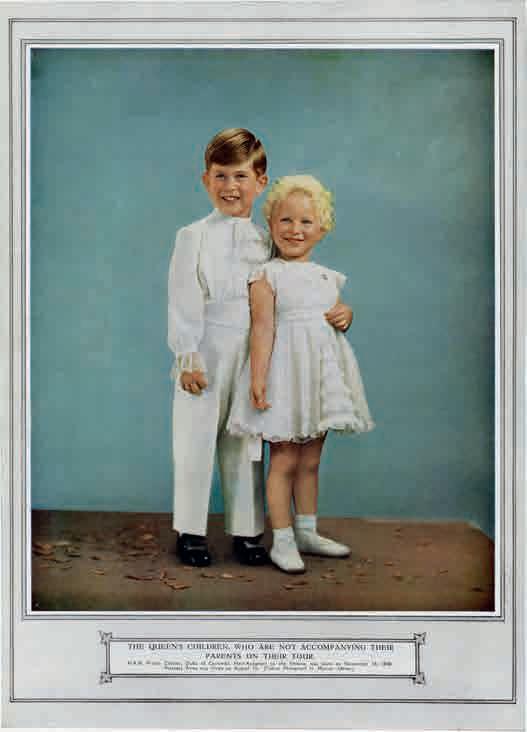

prepares to mark her 75th birthday, The King’s sister is central to the daily operation of the modern monarchy, especially one as slimmed down’ as the House of Windsor.
Year after year, any chart or league table of royal engagements shows The Princess to be among the busiest working members of the family, a fact which is not lost on the general public. Her programme is run from a surprisingly small o ce at St James’s Palace, but then The Princess is famously low maintenance. As her son, Peter Phillips, once told me, the secret to her indefatigability is the kiwi fruit she has on standby in her handbag.
All through 2024, when royal medical crises were threatening to derail the distribution of honours, it was The Princess Royal who stepped up. Apart from The King and The Prince of Wales, she is the only member of the family ga etted’ (entitled) to present honours and decorations on behalf of a grateful nation. So, she would often preside over one investiture after another, sometimes presiding over two of these lengthy ceremonies on the same day. When senior royal representatives were needed on both sides of the Channel to mark the 80th anniversary of D Day in June 2024, it was The Princess who led the advance to ormandy.
But this is nothing new. With the exception of The King himself, no one else in Britain has been as active in national
and international life for as long as The Princess. Along with her brother, she is the only other person alive who was at Sandringham House on the morning of 6 February, 1952 when George VI was found to have died in his sleep. At that very moment, their mother – far away on tour in Kenya – became ueen and all their lives were turned upside down.
Prince Charles, aged three, and Princess Anne, then ust one, had been left in the care of their grandparents while their parents undertook a round the world Commonwealth tour. To her eternal irritation, Charles was permitted to attend the subsequent coronation of Eli abeth II. Anne was still deemed too young and had to remain at Buckingham Palace and watch from a window. Soon after that, their parents disappeared on another globetrotting trip to visit many of The ueen’s new realms. The Coronation tour was the longest in history and it would be six months before Charles and Anne sailed out in the brand new Royal Yacht, Britannia, to meet their homeward bound parents in north Africa.
While Prince Charles famously did not en oy his schooldays at Gordonstoun, The Princess was very keen to go away to boarding school, as she told me when I interviewed her at the time of her 0th birthday. I was thrilled, frankly,” she said.
Compared to the limited’ education she had experience in the hands of a Palace governess, her days at Benenden School in
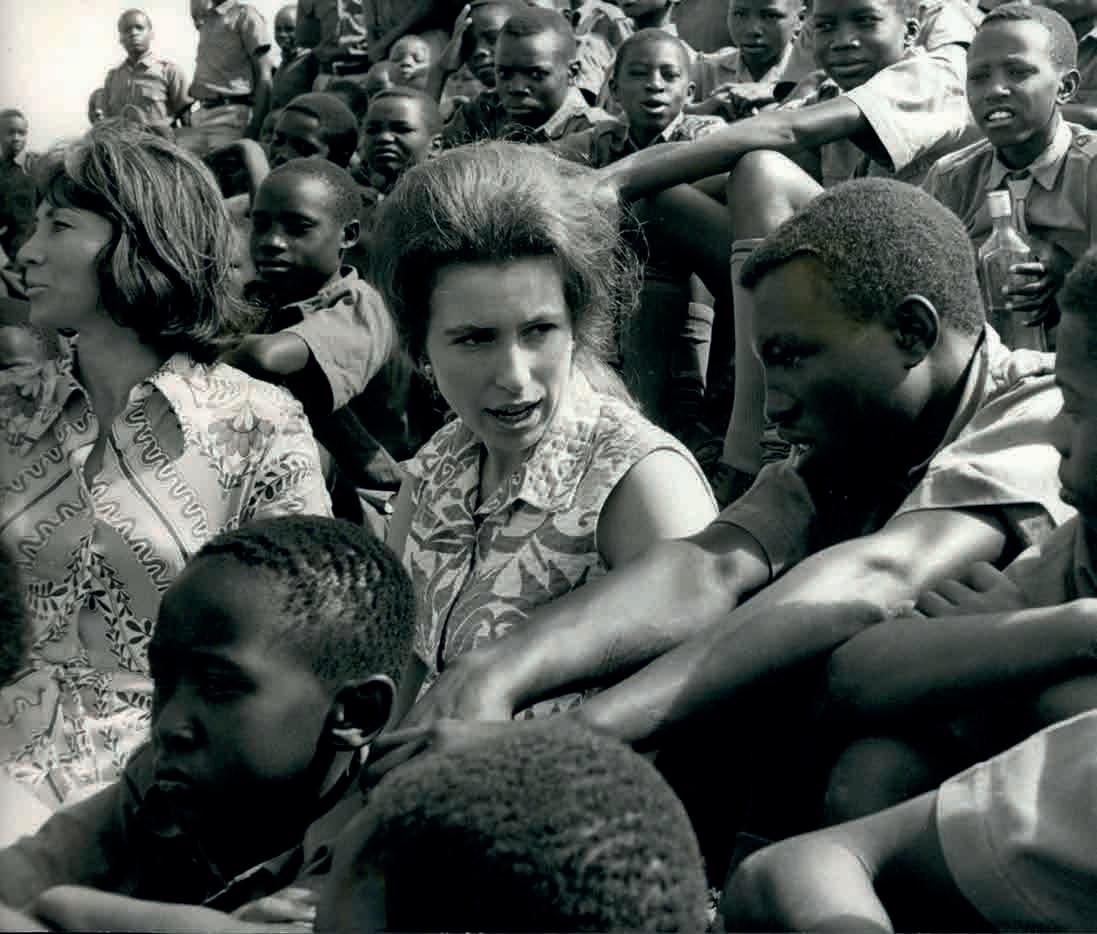
Kent were ‘a major bonus’. She gained perfectly respectable exam results in her A levels but, at the age of 18, had no desire to go to university. Instead, she embarked on two parallel paths. She would undertake o cial royal duties and she would pursue a competitive equestrian career – as, indeed, she did. Having become European three day event champion in 19 1, she was voted BBC Sports Personality of the Year (footballer George Best was runner up) and went on to represent Britain at the 19 6 Montreal Olympics.
Married to fellow Olympian Captain Mark Phillips in 19 3 (with whom she survived an horri c kidnap attempt a year later), she gave birth to a son, Peter, in 19 , making The Queen a very happy grandmother in her Silver Jubilee year. Four years later, she gave birth to a daughter, Zara, who would eventually go on to follow her parents to Olympic glory (and a silver medal) at the 2012 London Games.
The late Queen elevated Princess Anne to Princess Royal (an honorary title going back nearly 400 years) in 198 . For more than half a century, The Princess’s assiduous devotion to a core group of charities – including Save the Children and Riding for the Disabled – has been a constant in her life. It was The Duke of Edinburgh who advised her to concentrate on making a di erence at the outset. My father did suggest very strongly that you only pick one or two that you really felt


Above: Princess Anne on Goodwill during a cross-country event at the Montreal Olympics in July 1976 and, below , just after her first irthday ith her mother then Princess li a eth and Princess Margaret in the grounds of Balmoral Castle in August 1951
Facing page: The Princess in Kenya in at a airo i school uilt y ave the Children and on a visit to the Riding for the isa led Association in he is Patron for oth charities
that you could get involved with in the early stages,” she told me. Many more have followed since.
Through it all, though, her priority has been to represent the Sovereign, whether on royal tours right across the globe (she was the rst royal visitor, for example, to Outer Mongolia) or in support of the armed forces. Having been Colonel in Chief of the King’s Royal Hussars since 1969, she has now been actively involved in regimental life for far longer than anyone else, with the result that she can tell one of today’s serving soldiers of the time she met his grandfather. She retains many links with all three services not just in the K but other realms, too (from her position as Colonel in Chief of the Royal Australian Corps of Signals to the Royal Canadian Medical Service).
Remarried in 1992, to Vice Admiral Sir Timothy Laurence, she has always had a great love of the sea, inherited, no doubt, from her late father. When asked to choose where she wanted to hold her 21st birthday, The Princess had spurned Buckingham Palace, Windsor or Balmoral in favour of Portsmouth. She explained that she wanted to mark the occasion on board the Royal Yacht. To this day, her idea of a perfect holiday is aboard the sailing boat she keeps on the west coast of Scotland. Given that The Princess holds an even higher (honorary) naval rank than her husband, her children


chuckle irreverently at the prospect of being stuck on a boat commanded by two admirals. “You wouldn’t go on a boat with them!” joked Zara.
Family remains at the heart of her life, with her children and grandchildren all living on or close to her Gloucestershire estate. Equally important is the broader Royal Family, and most notably the Sovereign.
In her nal years, The late ueen grew ever close to her only daughter, particularly after the death of Prince Philip. It was The Princess who was staying at Balmoral Castle on the day Her late Ma esty died, who escorted her co n all the way across Scotland and back down to London. Come the Coronation, she chose not to travel to Westminster Abbey in a coach or car like all the other members of the family. As the Colonel of the Blues and Royals, she holds the honorary title of Gold Stick, a position which dates back to Tudor times when the holder was the monarch’s bodyguard. As such, she was going to ride alongside her elder brother, armed with stick and sword.
They were the earliest senior personal protection o cer, your last line of defence,” she said afterwards, explaining the role of her predecessors. “Whether the gold stick was ever really designed to do much damage, I’m not quite sure. But it was certainly an indication of who you were.”
If there is one person who has no need of a gold stick to remind us of her position in British life, it is surely Princess Anne.
Robert Hardman is the author of the new biography, Charles III. New King. New Court. The Inside Story, and writes for the Daily Mail

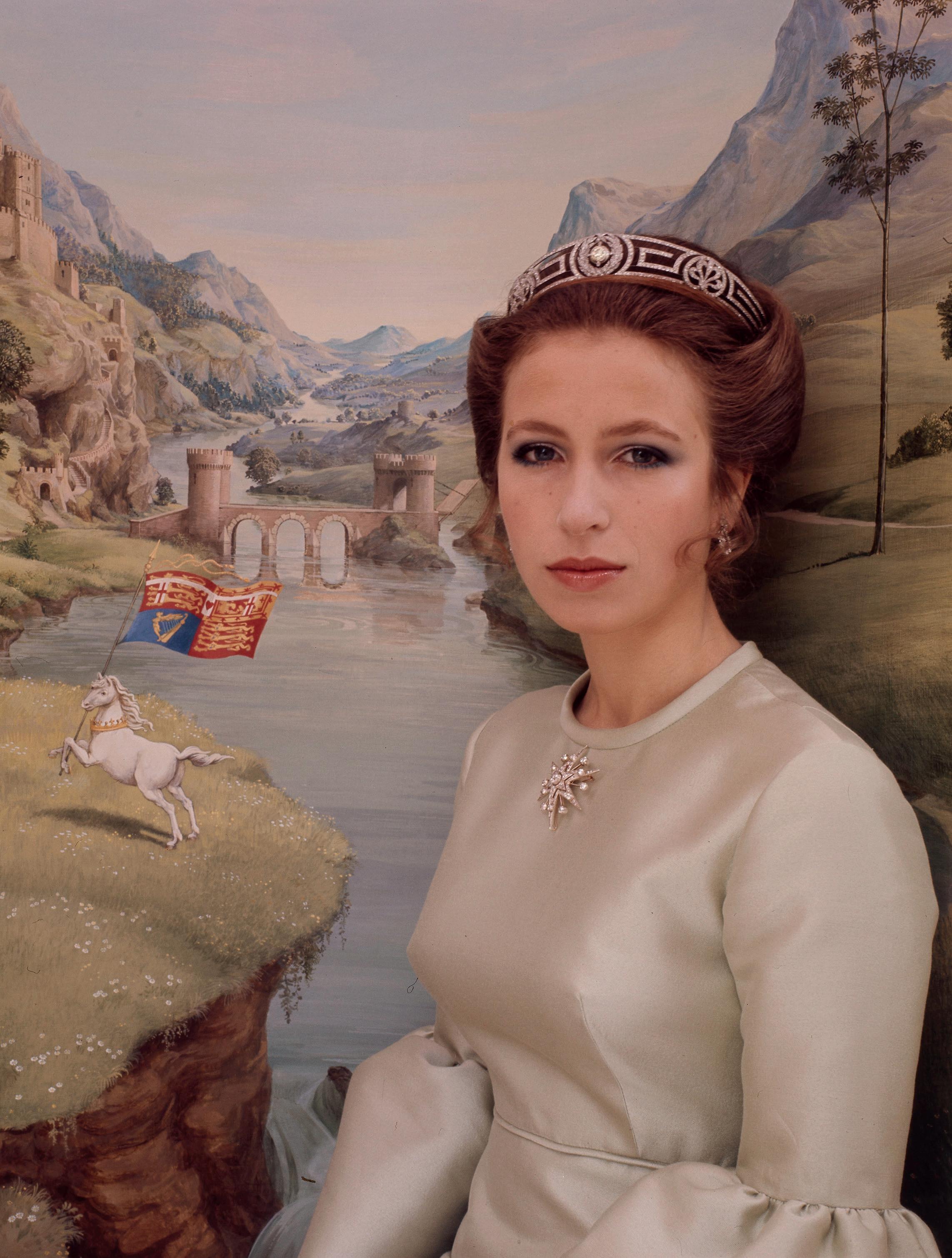

Champagne Bollinger is the only Champagne House to hold a Royal Warrant for 140 consecutive years. Chairman and Chief Executive, Étienne Bizot, explains the key to Bollinger’s success and what the new Royal Warrant means to the family and firm y isa arnard
Atremendous milestone occurred for Champagne Bollinger in December 2024. It was not just the end of a successful year; it was when the Maison learned the welcome news that King Charles had bestowed his Royal Warrant on it. It was especially signi cant for Champagne Bollinger, because it marked precisely 140 years since The King’s great great great grandmother, ueen Victoria, rst granted Champagne Bollinger a Royal Warrant in 1884. Bollinger has been appointed to The Royal Household of every reigning monarch since Victoria, making it the only Champagne House to hold this honour continuously over such a lengthy tenure.
The heritage of Champagne Bollinger goes back to 1829, and it is one of the few ‘Grandes Marques’ which continues to be family owned. At the helm is tienne Bi ot, Chairman and Chief Executive, and the Grantee of the Royal Warrant – Warrants are always granted to an individual. Asked how he felt when he received the news of the appointment by The King, Bi ot speaks with immense pride It was a great, great, great satisfaction. The Royal Warrant is part of the DNA of Bollinger. It’s a pillar of the brand and an important part of our story. Holding the Royal Warrant for 140 years is a key element, not the only element, of Bollinger being so strong in the UK.”
Despite the unmatched track record among Champagne Houses, Bi ot is not complacent Being a Grantee is not something you can take for granted. I have never considered
that it’s a given. As the Grantee, I am just ‘passing by’, a custodian. We are proud to display the Royal Arms on every bottle of Champagne. For me, the Royal Warrant is a recognition of the quality of the job that all the team is doing.”
To mark the milestone, Bollinger is collaborating with The ueen Eli abeth Scholarship Trust ( EST), the charitable arm of the Royal Warrant Holders Association, to launch a craft competition in 2025. This will engage EST Scholars to design a bespoke piece for a new boutique hotel at the House’s historic home in Aÿ in France’s Champagne region.
Bollinger has a long and distinguished track record in the K. It was rst introduced to the British market in 1858 by the London wine merchant, Ludwig Ment endor , who became Champagne Bollinger’s agent. Today, Bollinger is a majority shareholder brand in the agency, so has direct involvement in the K market. Bi ot also attributes Bollinger’s success in Britain to the style of the wine It is a full bodied wine with a lot of personality. We call it le go t anglais’ – English taste. A French ournalist once said to me, ‘Bollinger is a British brand which has been dislocated in France!’ He’s not wrong!” The wine even has its own nickname in the K, a ectionately known as Bolly’.
Bi ot plays tribute to the commitment of the Bollinger family to the UK market over decades, indeed centuries. His great aunt, the celebrated Madame Lily Bollinger, was in his words, very connected with the market. She was the rst woman to be welcomed at the Wine Trade Benevolent

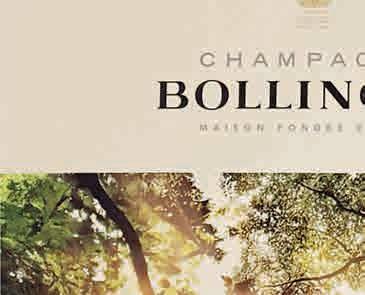
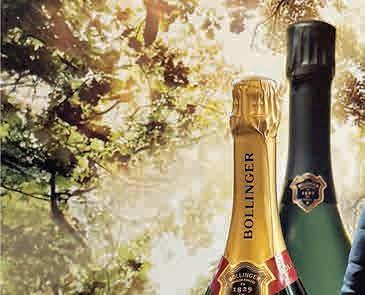
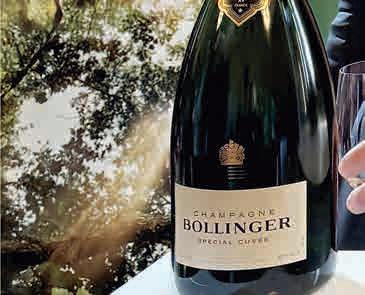
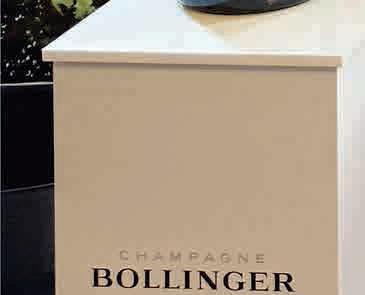

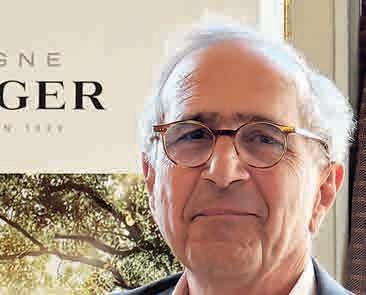
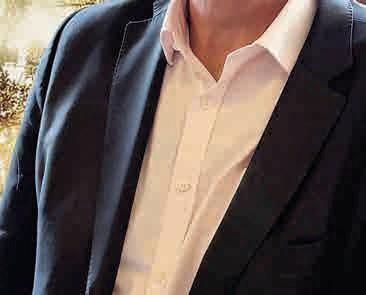

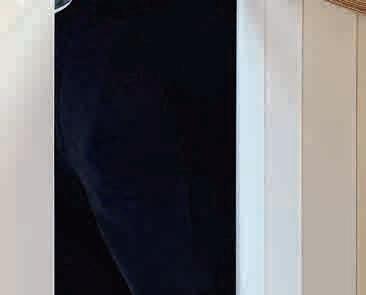
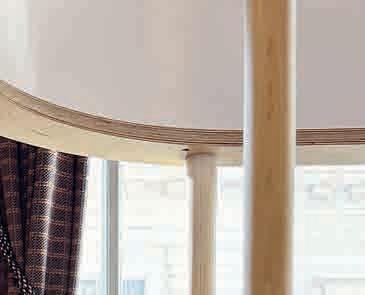
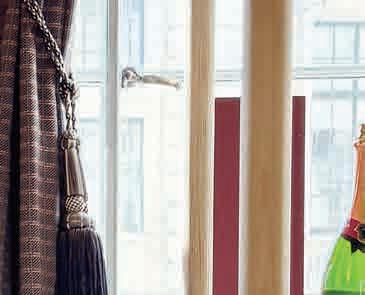
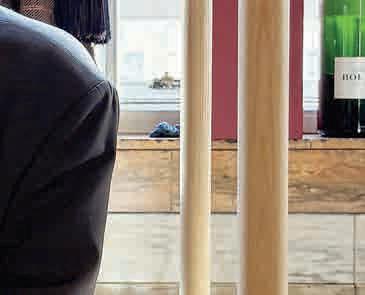
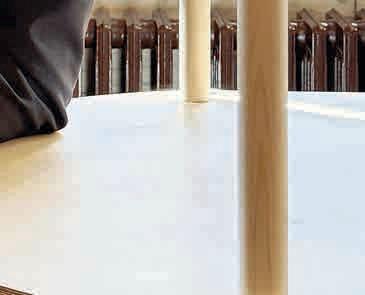





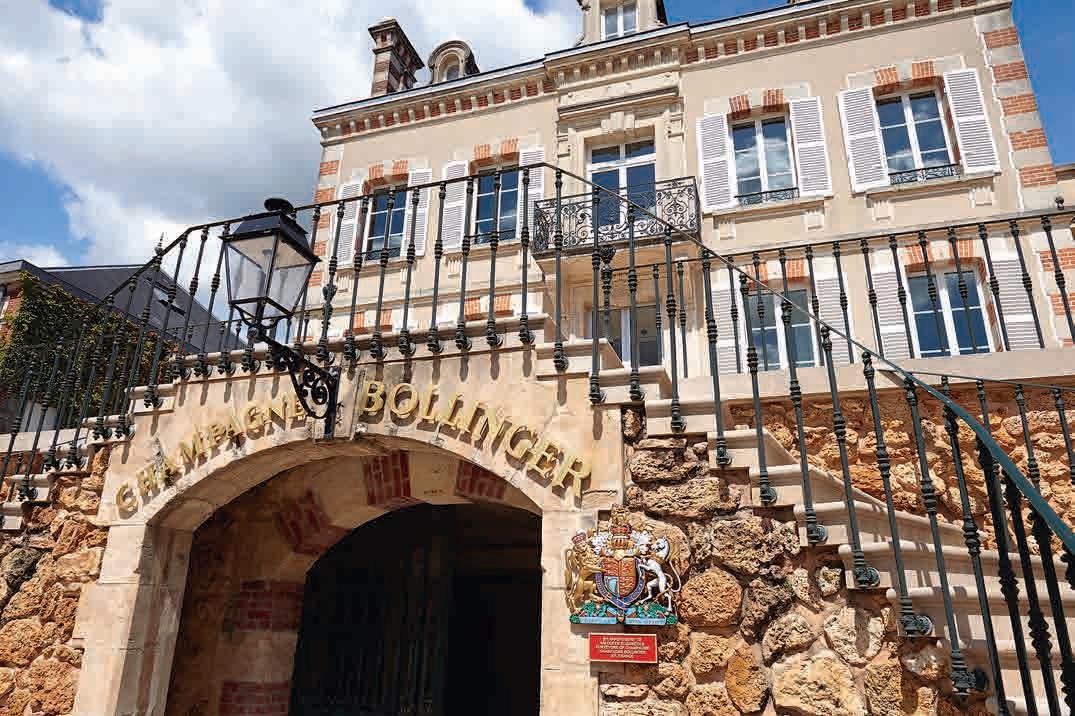
Dinner.” His late father, Christian Bi ot, a highly respected gure in the Champagne business, spent a great deal of time in the K. His son is following suit and takes a long term view To develop the right position in this market is not done overnight. It is a long work.”
Asked what he would highlight from Bollinger’s heritage as the key ingredient to longevity and success, Bi ot is unequivocal There is one word consistency. Consistency in the quality of the wine, which depends on our vineyards, the cask fermentation, the reserve wines which are matured in magnums and the Pinot Noir style. Our vineyards are 65 to 70 per cent Pinot Noir. It would be impossible for a winemaker to change the style of Bollinger.”
The consistent style is found across the whole range from Special Cuvée to La Grande Année through to Bollinger PN and Bollinger R.D., which was boldly invented by Madame Bollinger as a prestige cuvée with the date of disgorgement on the label. For Bollinger Grande Année, made only in exceptional vintage years, and Bollinger R.D. about 95 per cent of grapes come from Bollinger’s own vineyards and for Special Cuv e, approximately 65 per cent. This helps the winemaker to make a consistent wine,” says Bi ot.
Consistency is certainly demonstrated by the uninterrupted renewal of Royal Warrants, and also by the famous partnership built up over 45 years with the Broccoli family around the James Bond franchise, a relationship cultivated by Christian Bi ot. Bollinger is always sipped and savoured by James Bond. ow that Ama on has taken over the franchise, it’s clear that Bollinger is integral to the DNA of 007 and he must continue to enjoy his favourite Champagne.
There is a clue in the name of Bollinger Special Cuvée that it is no ordinary non vintage Champagne. Bi ot explains
its Royal Warrant;
, Bollinger is fermented in cask and is the last Champagne House with its own resident cooper
Facing page: Bollinger wines are made principally from Pinot Noir grapes from its own vineyards; Champagne Bollinger should always be served in style

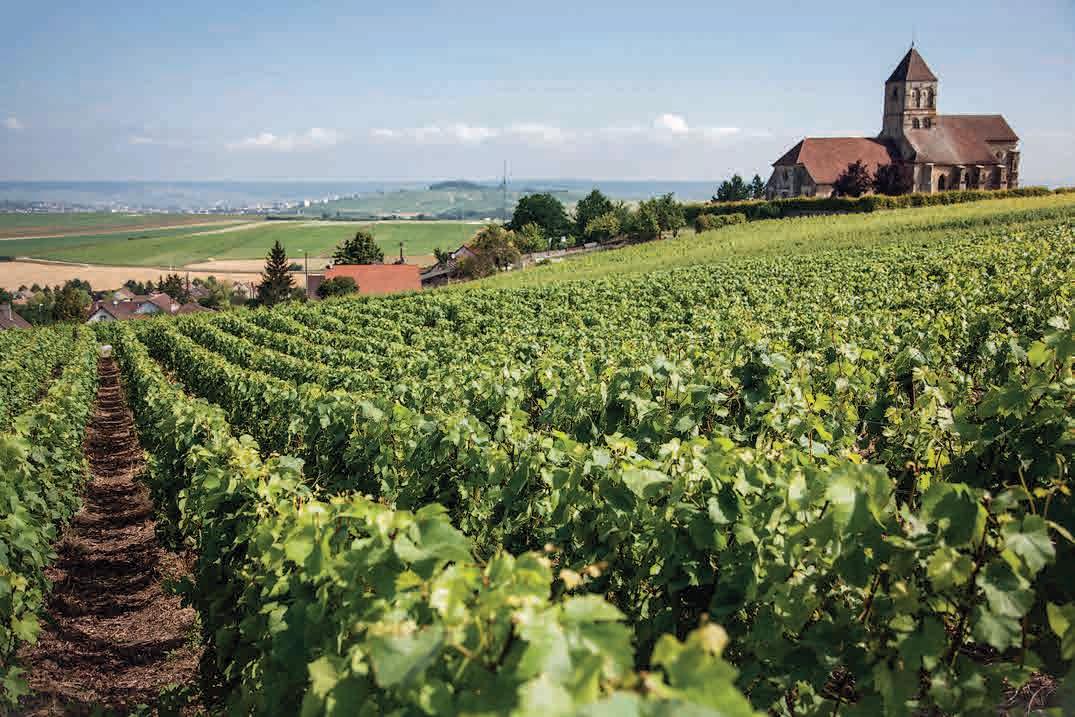
what’s so special about it When you press grapes, you take 4,000 kilos, you get 2,500 litres of juice. These 2,500 litres are split into two the rst 2,000 litres or so is la cuv e’, which is the best part, and the last 500 litres are ‘la taille’, which is not so good. That’s the meaning of ‘Special Cuvée’, we only use the best juice. What I’m telling you about ‘cuvée’ is not just consistency for Special Cuvée, it’s for all our wines.”
Now that King Charles is the principal Grantor, it is no surprise that sustainability has been a key criterion in the recent granting of Royal Warrants. As part of its dedication to standards in wine growing and wine making, Champagne Bollinger has been committed to sustainable viticulture for many years. In 2023, it became one of the rst Champagne Houses to obtain international B Corp certi cation, the most rigorous test in social and environmental responsibility.
Bollinger has been a Living Heritage Company since 2012, which means it maintains traditional methods. This includes planting vineyards with ungrafted vines, training vines ‘en foule’ (planting in droves’ in rows close together) and working the vineyards by hand. It is the last Champagne House to employ a resident cooper, who tends to 4,000 barrels. The process of remuage’ (the tilting of bottles in racks to move sediment) and disgorging are also done by hand.
So what is the next milestone for Champagne Bollinger? In 2029, the Maison will be celebrating its 200th anniversary and has already set out an ambitious plan. It is renovating its historic site, developing a boutique hotel and has many other initiatives in the pipeline, many related to sustainability and nurturing its people. And the next 100 years? Hopefully it will still be bearing a Royal Warrant, although we have no idea who the Grantor will be and Bi ot is not taking it for granted. C am a ne- oll n e .com

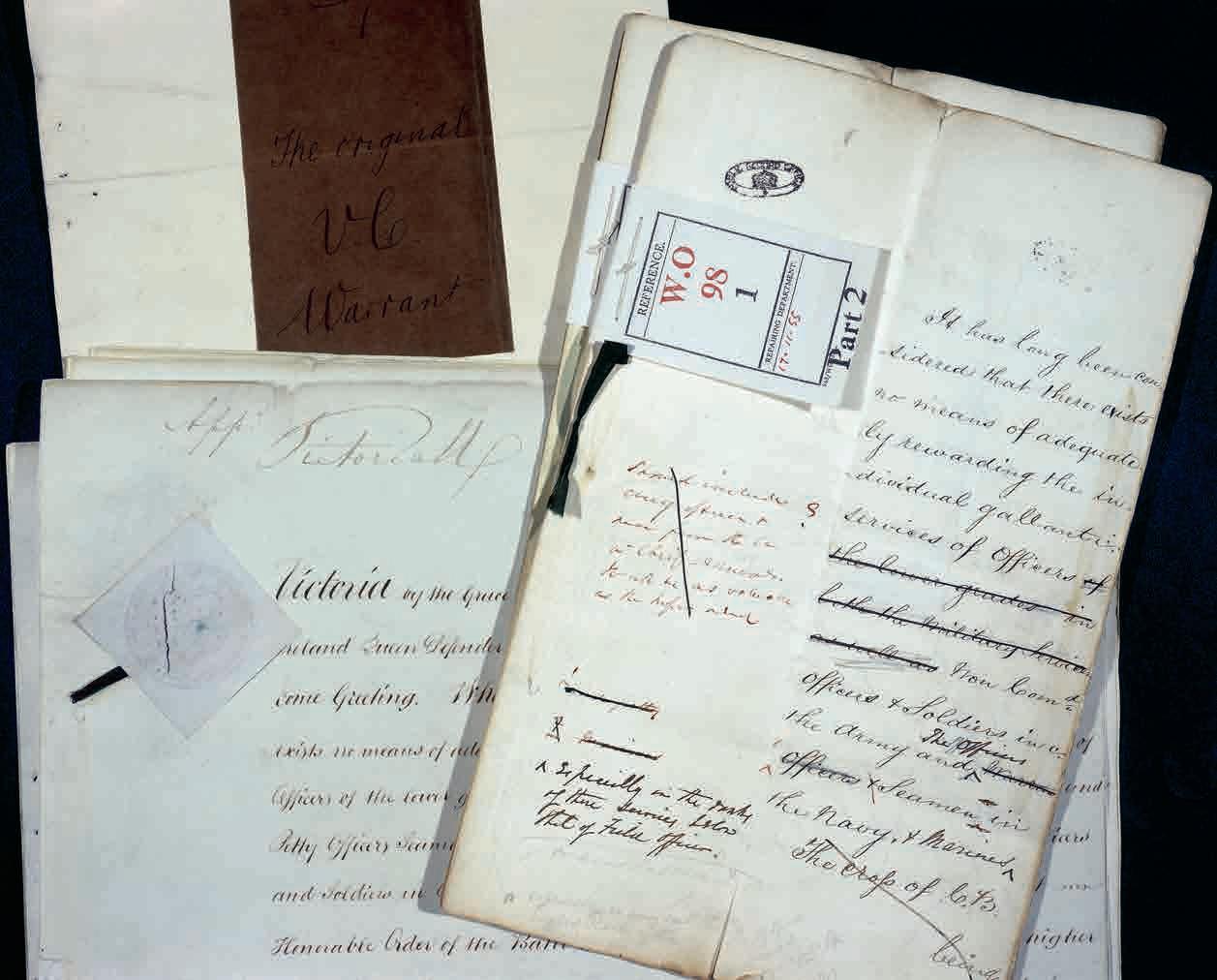

The granting of a Royal Warrant is a source of immense pride for those businesses fortunate enough to be chosen, but it also offers a glimpse into the enthusiasms of The King and The Queen, with craftsmanship, sustainability and tradition front and centre. By Simon Brooke
This page: Corgi Hosiery has made socks to match a selection of The King’s regimental ties –including this pair inspired by The Queen’s Own Yeomanry Regiment Facing page: An original Royal Warrant, signed by Queen Victoria, instituting the award for meritorious distinction, 1856

The latest collection of Royal Warrants, announced in December last year, provides an insight into the issues that HM The King and HM The Queen hold dear. It tells us something of the preferences and enthusiasms of two hugely prominent gures who are also, especially in the context of today’s celebrity culture, private people.
Their Majesties’ second set of Royal Warrants of Appointment of the new reign saw grants made to 386 companies drawn from those who previously held a single Royal Warrant of Appointment to The late Queen Elizabeth II. Added to this list are seven companies that have an established trading relationship with Queen Camilla. These latest grants follow 152 Royal Warrants granted by Their Majesties last May to existing Warrant Holders of The King as Prince of Wales, making about 540 in total.
A quick look through the new and existing Royal Warrant Holders, with their mix of household names, small founder led businesses, high end heritage brands and companies providing everyday services, reveals how craftsmanship, sustainability and local food producers are clearly very important to Their Majesties.
As well as classic names such as Champagne Bollinger, granted its rst Royal Warrant by ueen Victoria, and Fortnum & Mason, which was granted a Warrant by The Queen in her own right last year, the current list of Warrant Holders includes small regional food and drink companies.
Potted shrimp maker James Baxter & Sons, based in Flookburgh, near Grange over Sands in Cumbria, is a great example of Their Majesties’ enthusiasm for locally made foods. “We were very happy when we were granted the Royal Warrant from The King,” says the company’s owner, Clare Holland. Potted shrimps were a favourite of The late Queen Elizabeth II. There’s an element of luck involved in creating this niche product, as Clare explains.
“As we only use local shrimps in our pots, we can only produce them when the shermen are catching brown shrimp and so at certain times of the year the supply is limited and – as we found out earlier this year – sometimes non existent. We only supply our potted shrimps to our existing customers and then, if we do have any surplus shrimps, we have customers who are on our waiting list. We don’t mass produce, and each pot is produced by hand to the highest standard.”
The granting of a Royal Warrant to Natoora bears witness

to The King’s long standing interest in organic food and sustainable agriculture. It’s given us an enormous sense of pride,” says Franco Fubini, founder and CEO. It’s a testament to the dedication of our entire team and the growers we work with, who are committed to revolutionising the food system through radical seasonality, diversity, transparency and responsible farming. Sustainability is at the core of atoora’s mission. We strive to protect the environment and improve food systems by working with small scale growers who focus on biodiversity, soil health and sustainable farming practices.”
Less obviously, environmental concerns are also relevant to Flying Colours Flagmakers, which was rst granted a Royal Warrant by The late ueen. We have to prove our sustainability when we manufacture, produce and deliver our flags, banners and other goods to the Royal Households,” says managing director Andy Ormrod. He describes the feeling of immense relief” when the grant was continued.
I look at it as a reward for the e ort and skills from our dedicated skilled workforce in manufacturing these intricate, fabulous heraldic designs. They’re mostly hand sewn, and, in some cases, it takes up to a hundred hours to manufacture one large standard,” he explains. We have never ever taken our Warrant for granted and never will do.”
A respect and deep a ection for the regions and nations is another important element of the choice of Royal Warrant grantees. Corgi Hosiery is proud of its Welsh heritage and connection. Chris Jones’s father and uncle had already been supplying The former Prince of Wales for some time when it was suggested that they apply for a Royal Warrant which, to their delight, was granted and has now been transferred to
Chris’s sister Lisa Wood, representing the company. The King sent over a selection of his regimental ties so that we could create matching socks,” he explains. He decided which ones he liked, and these designs are now among our most popular ranges.” Every pair of these socks sold also helps the charity Combat Stress, which supplies specialist treatment and support for military veterans. So far, we’ve raised over 15,000 and The King has been very supportive.”
As teenagers, Princes William and Harry even designed a number of socks and the relationship with the Royal Family, as emphasised by the renewal of the Warrant, continues to be close. When I met ueen Camilla, she asked what I did and I mentioned Corgi and she immediately said Oh, you’re those wonderful sock makers.’ The Princess of Wales visited our workshop recently – the sta loved her. It was a great day.”
The renewal of the Royal Warrant is extremely important for the company’s ongoing success, Jones explains It’s what sets our product apart from those in Italy and Germany. It’s our quality mark and says to our customers they can trust and rely on us. It cannot be overstated how important it is to us. It’s a big boost and gives pride to all our workers.”
A number of Scottish distilleries have long been Royal Warrant Holders. Just a mile from Balmoral Castle, the Royal Lochnagar Distillery sits at the foot of the Cairngorm mountains. The distillery, which has been visited three times by The King as Prince of Wales, Duke of Rothesay, is certi ed carbon neutral and all co products are reused, with local wildlife and biodiversity integral to its culture since the establishment of a nature reserve in the 1990s.
The King also supports other food and drink businesses in

Above: The Royal Lochnagar Distillery sits at the foot of the Cairngorms, just a mile away from Balmoral
Right: Florist Lottie Longman is continuing her family’s business, which dates back to 1898
Facing page: Potted shrimp-maker James Baxter & Sons uses only local Cumbrian shrimp in its product


his beloved Scotland. Something of an Edinburgh institution, Valvona & Crolla, is an Italian family food and wine shop and restaurant, established by Alfonso Crolla in 1934. It was rst granted a Royal Warrant by Queen Elizabeth II in 2005 to supply ne cheese to the Royal Household.
“There was huge anticipation among the family and all of our work colleagues during the latter part of 2024 while we waited for news of our application,” says Cavaliere Philip Contini, grandson of Alfonso and recent President of the RWHA. “When the letter arrived, we immediately informed all our team. We then broadcast the good news to our customers via email, social media and on our website. We received many messages of congratulations. To be voted as President of the Royal Warrant Holders Association for 2024 25 was simply the sweetest icing on the tastiest cake.” Florist Lottie Longman’s family business dates back to 1898, and is based in East Lothian, having relocated from London. “I was extremely lucky, in 2015, to be introduced to Judy Reid, a past Warrant Holder, who was looking for another florist to join her team at Holyrood Palace,” says Lottie. “She kindly mentored me and when she retired, I took over the business and became the grantee. When we were invited to apply for a new warrant under The King, I changed the name of the business to Lottie Longman.”
The Royal Warrant is a motivator for her as a businesswoman, she says. “I was so excited, honoured and privileged to be asked to work for The King and still feel the same way every time I walk into the Palace. I strive to apply the aspects of being a Royal Warrant Holder to all the areas of my business. I have always been very focused on being sustainable and continue to keep this in the foreground.”
Other grants demonstrate His Majesty’s passion for

Clockwise from above: Edinburgh’s Valvona Crolla as first granted a arrant y ueen li a eth in ecutive Chairman of alvona Crolla Phili Contini has een President of the Royal arrant olders Association for The ethos of greengrocer atoora dovetails ith The King s interest in organic food and sustaina le agriculture a an ame and Conservation s ecialise in ha itat creation on farmland



conservation and the natural world. “We were delighted to receive the Royal Warrant to King Charles, who has been a big influence on sustainable farming and conservation across the world. In our small way we hope to encourage and assist more farmers and landowners to deliver more for our soils, for air and water quality and for biodiversity. It is not only an acknowledgement of our work but also gives us huge kudos in our industry,” says Tim Furbank, Director of Oakbank Game Conservation Ltd in Huntingdon, Cambridgeshire.
The philosophy of Botanica International Ltd, based in Warrenpoint, orthern Ireland, is to utilise the wonders of nature’s herbal energy”. nusually, the company’s herbal washes, creams and sprays have been formulated using natural ingredients, for both humans and animals, including horses.
The King’s support for traditional crafts and skills is well documented and it is celebrated with the presence of Cole Son. Founded in London in 18 5, as a manufacturer of block printed wallpaper, the company now produces wallpaper, fabrics and accessories.
When his father, a maker of traditional besom brushes, and a Royal Warrant Holder, passed away in 2004, Bradley ash pledged that he would not let the ancient craft disappear.
There are customers who seek an alternative to a mass produced broom and are looking for a more sustainable product,” explains Bradley, who received his own Royal Warrant in 2012 and who now runs ash Contract Services.
Then there are customers who follow Harry Potter and knowing that I supplied brooms for the lm Goblet of Fire has had an appeal. We’re requested to supply brooms, and pea sticks in the springtime, and I deliver them to the Palace.”
Broom making has been in his family for more than 300 years and for Bradley, the appeal endures. The materials are a natural product coppiced from the land and the whole process of assembly is through your hands.”
The natural world, local pride, artisan food and traditional skills speak to us and connect with us in a way that is both unique and deep seated – as does the monarchy itself.
Royalwarrant.org
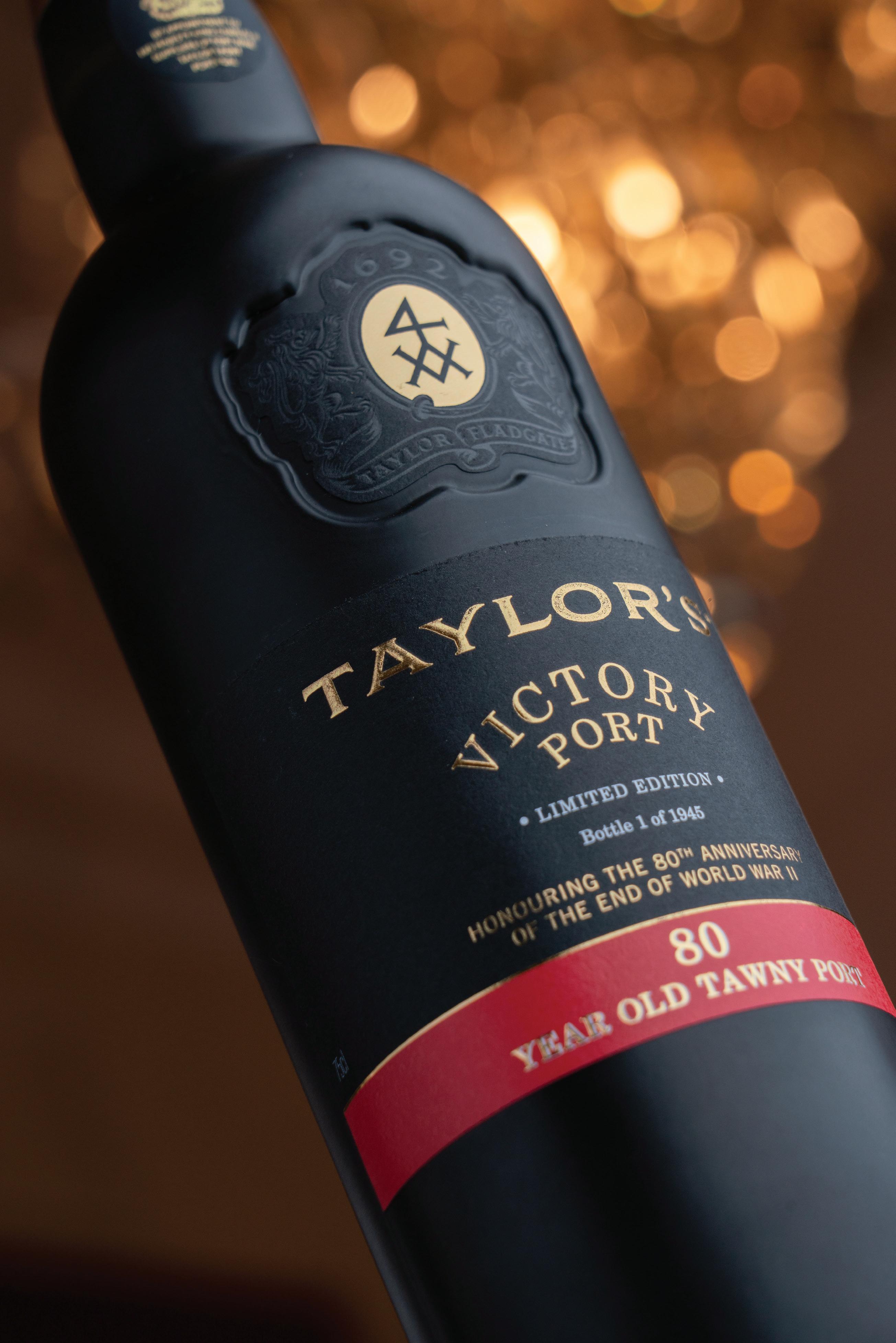

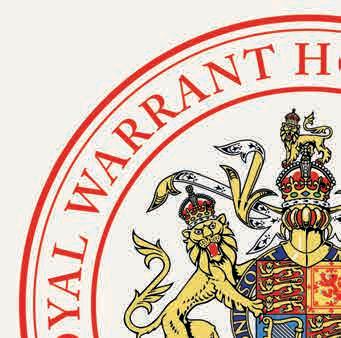



Becoming a Royal Warrant Holder is the crowning achievement for any company: a great honour and a recognition of the high standards achieved in the supply of goods and services to the Royal Household and beyond. The new Royal Warrants granted by Their Majesties The King and The Queen were announced in 2024. Over the following pages, we ‘Spotlight’ a selection of Members of the Royal Warrant Holders Association, who share the stories of their heritage and the secrets of their success.
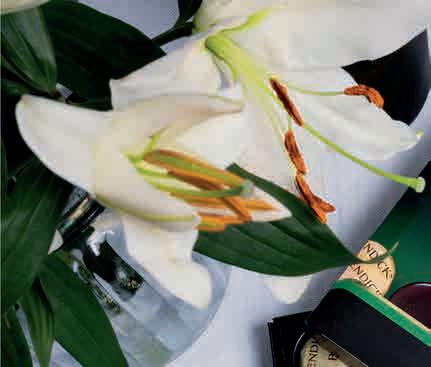
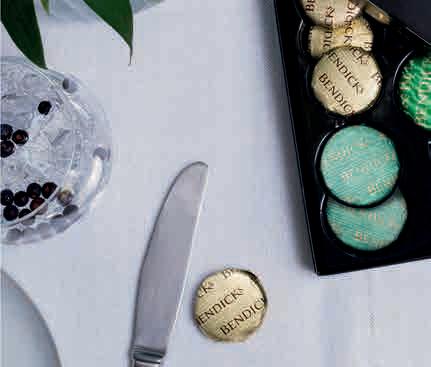



The Bendicks story began in 1930, when Mr Oscar Benson and Colonel Dickson started a small confectionery business on unassuming Church Street in Kensington, producing chocolates in a tiny basement beneath the shop. A few years later, Bendicks was developing an enviable reputation for quality and a Bendicks store opened in the heart of London’s exclusive Mayfair.
The rich and fashionable frequently visited the shop to enjoy the intense taste of a strong mint fondant, accompanied by per cent dark chocolate made from the finest cocoa beans. Known as the Bittermint, it was a phenomenon from the start and was to make Bendicks famous around the world.
The unrivalled reputation of Bendicks continued to grow and over 60 years ago in 1962, Bendicks was awarded a Royal Warrant, By Appointment to Her Majesty The Queen, a prestigious stamp of quality that has adorned every one of the beautifully distinctive chocolate boxes ever since.

Bendicks continues to build on its reputation and rich heritage, still paying the same attention to every detail at its factory as it did when the chocolates were made in the basement beneath the shop in Kensington. Today, Bendicks is the premium after-dinner mint, delivering the perfect finishing touch to any meal or entertainment occasion.
Crafted with only the finest ingredients, the iconic Bittermint is still made using the same original recipe today, a testament to their commitment to the company’s traditional methods and artistry, passed down through the years. Bendicks has earned the loyalty of chocolate lovers and royalty alike and was awarded a Royal Warrant By Appointment to His Majesty King Charles III in 2024. Quality and tradition are fundamental to the longevity of the company’s success and Bendicks looks forward to many more years of producing its famous chocolate mints and continuing to delight the most discerning customers. bendicks.co.uk

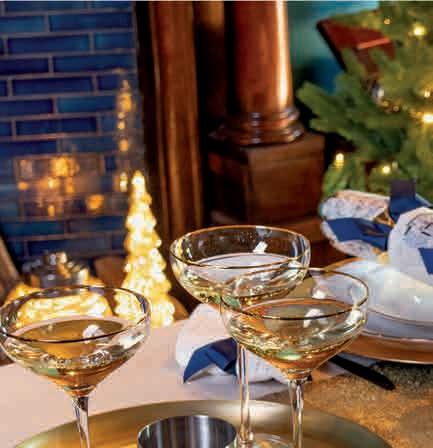

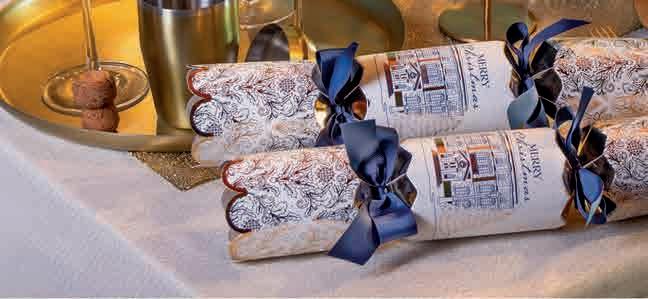


For more than 175 years, Tom Smith™ has been at the heart of British Christmas celebrations. As the original creator of the Christmas cracker in 1847, our legacy is woven into the fabric of festive tradition – bringing joy, magic and beautifully crafted design to homes across the UK and beyond.
Today, Tom Smith™ is the world’s largest Christmas cracker brand, recognised for our commitment to quality, creativity, and heritage. Our extensive range includes crackers, wrapping paper, gift bags and cards – each thoughtfully designed to capture the true spirit of Christmas.
Distributed across the UK, Europe, the USA, Australia, Mexico, Canada and beyond, our products reach millions of homes every year. s part of I Design roup K Ltd – the UK’s leading designer and manufacturer of seasonal products – we continue to set the standard for Christmas.
We are equally passionate about making a positive impact beyond the festivities. Our continued partnership with The Trussell Trust – a K-wide anti-poverty charity and network of food banks – has helped support communities nationwide. We are also committed to sustainability through our long-
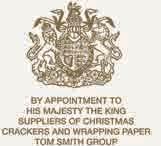
standing partnership with the Woodland Trust, supporting woodland creation and carbon o setting via the Woodland Carbon scheme. All Tom Smith™ products are fully recyclable and free from single-use plastic.
Tom Smith™ has recently been awarded a new Royal Warrant of ppointment to is Majesty King Charles III for the supply of Christmas Crackers and Wrapping Paper.
This prestigious honour dates back to 1906, when we received our first oyal Warrant, and has since been granted by King George V, Queen Elizabeth II and Queen Elizabeth The Queen Mother.
This milestone rea rms Tom mith’s position as a trusted supplier to the Royal Household and a beloved brand for families across the world.
The new oyal Warrant of ppointment to is Majesty King Charles III is a proud chapter in Tom Smith’s storied history – one that celebrates over 177 years of festive tradition and craftsmanship, and a continued commitment to excellence. ooted in heritage, inspired by the future – Tom mith remains the home of Christmas.




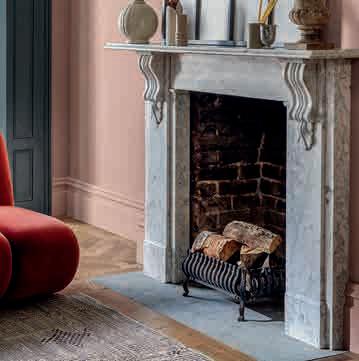


At Crown Paints, we’ve proudly held the Royal Warrant for over 70 years, no small feat! But for us, it’s about much more than a shiny badge. It’s a reminder of our commitment to quality, creativity and craftsmanship, values we’re passionate about passing on. That’s why we’ve partnered with the Queen li abeth cholarship Trust (Q T), donating 10 per cent of proceeds from our Crafted™ by Crown range to support the next generation of talented artisans.
We’re so excited to sponsor two amazing creatives: Alice, a stone sculptor from omerset, and oseph, a London-based artist whose murals make a real impact. Through QEST, Alice and Joseph are sharpening their skills, creating art that tells stories and contributing to the future of British craftsmanship.
Now, let’s talk about Crafted™ by Crown, the collection that celebrates the same artistry and craftsmanship. Inspired by British artisans, this range combines Crown’s 200 years of e pertise with modern, lu urious finishes that bring your home to life.
Luxurious Flat Matt: flatter finish than your standard paint emulsion, this one gives walls a beautifully smooth and subtle elegance that lets the colour do all the talking.
Suede Textured: Picture your walls with a soft, captivating texture, thanks to natural olive stones that create a brushed, subtle te tured e ect.
Lustrous Metallic: This finish adds a little bit of magic, catching the light and creating a sophisticated shimmer that brings any room to life.
With Crafted™, you’re not just picking a colour, you’re helping to shape the future of British artisans, giving them the opportunity to perfect their craft and contribute to the world of creativity.
By supporting QEST, we’re not just painting walls, we’re helping to write the next chapter of British artistry.
At Crown it’s not just paint, it’s personal.

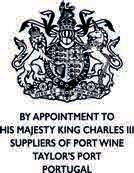
The Royal Warrant Holder commemorates the eight decades since VE Day with its limited-edition 80-year-old Victory Port, launches a colheita tawny to recall another ‘hot summer’ and reveals a refreshing aperitif. By Richard Mayson
The year 1945 was the ‘Victory Vintage’. Searing midsummer heat in the north of Portugal produced rich, powerful, concentrated wines and the year was declared as a vintage by nearly all the Port houses. Combined with VE Day in May and VJ Day in August, it gave Port wine shippers something to celebrate.
Taylor’s 1945 is one of the great wines of the 20th century; one of only a handful of vintage Ports that has repeatedly received full marks from me in comparative tastings. Happily the wine is still drinking well 80 years later and is likely to last well past its centenary. Such is the extraordinary resilience of a well made, top quality Port.
It is hard to nd a bottle of 1945 vintage Port these days as most have now been uncorked, consumed and are now a fantastic memory. So, in order to mark the eight decades that have elapsed since VE Day, Taylor’s has released Victory Port, an 80 year old tawny. To create this extraordinary commemorative blend, Taylor’s has drawn on its extensive reserves of cask aged Ports held in its historic Port lodges in Vila Nova de Gaia, on the opposite side of the river from the city that gave its name to Port, Porto.
Adrian Bridge, Managing Director of Taylor’s, emphasises that “we are sitting on about 40million litres of stock in total and that we lose the equivalent of about 1,000 bottles a day in evaporation” – the so called angels’ share’. It is the years of calm ageing and steady evaporation from cask that make this Victory Port so unique (there are ust 1,945 bottles in total). It is important to emphasise that this is a nely tuned blend
with wines older and younger than the 80 years on the label, coming together to produce something truly greater than the sum of its parts. As Adrian Bridge explains: “The blend has been put together with some much older components – the oldest coming from the end of the 19th century – and some younger than 80 years old.”
Very old tawnies can be unctuously sweet and often have high acidity, which has a shortening e ect on the palate, unbalancing the wine. “By selecting wines around 50 years old, that have lower acidity and are drier, we have been able to create a Port that is 80 years old on average with layers of complexity and length of flavour,” says Bridge. Taylor’s Victory has the distinction of being the rst wine to be released under the Port and Douro Wine Institute’s 80 year old category which follows on from the 10, 20, 30, 40 and 50 year old categories of tawny Port already authorised by the Institute.
The release of Taylor’s Victory Port coincides with the granting of a Royal Warrant of Appointment by His Ma esty King Charles III. Taylor’s was established as a shipper in 1692 when William and Mary were on the throne and has supplied many royal houses in its 333 years of history. Over that period (a third of a millennium) it has the distinction of being the only British Port shipper to have been handed down through the generations without ever having been sold, bought or taken over.
Like many Port shippers, Taylor’s began as a general trading rm and the enigmatic 4 symbol that is still used on the company’s wine labels originated as a wool mark.
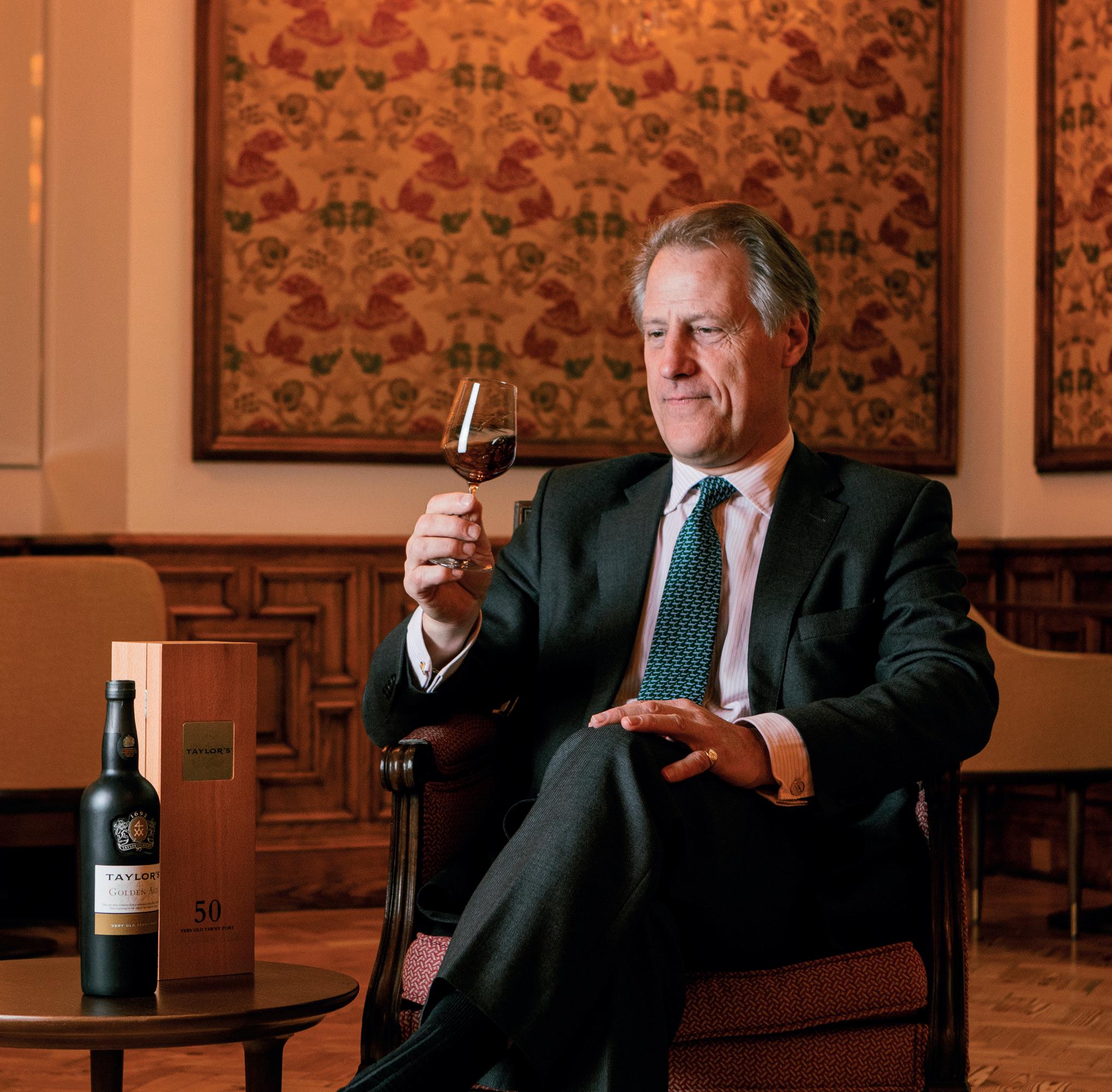
Joseph Taylor entered the rm in 1816 and was oined in the partnership a few years later by John Fladgate and Morgan Yeatman, whose surnames still make up the company moniker, Taylor, Fladgate and Yeatman. Adrian Bridge, who holds the new Royal Warrant personally, became Managing Director of Taylor’s in 2000 on the retirement of his father in law Alistair Robertson, a descendent of Morgan Yeatman.
Taylor’s held a Royal Warrant from Her Ma esty ueen Eli abeth II and Adrian Bridge expressed his pride in the new Royal Warrant. This is a truly signi cant moment in Taylor’s long and distinguished history. It is a testament to the dedication and commitment of our team, whose unwavering pursuit of excellence has made this honour possible”.
The King is well known for his deep interest in the environment and sustainability. This is an area where Taylor’s, as chief sponsor of the Porto Protocol, is world leading in the wine sector. The protocol is a global movement that provides a platform for sharing solutions to climate issues in all aspects
of the wine trade. It now spreads to 20 countries with about 500 wineries and stakeholders in wine including logistics and cork suppliers. As Bridge goes on to explain The protocol covers about 5,000 hectares of vineyards across the world and one of the interesting and very pioneering things we’re doing at the moment is something called the Living Vineyards Pro ect. This is taking some of these solutions and rather than looking at these issues singularly (for example, water or pesticides on their own), we are actually taking a very holistic approach in 40 di erent vineyards in 14 countries.”
At the same time as releasing the Victory Port, Taylor’s is launching a single harvest colheita Port from 19 5. This was another hot summer’ in the north of Portugal, both literally and metaphorically, as it coincided with the period of revolution in the country known as the Ver o uente.
Having aged rather more peacefully in cask over the ensuing half century, this suave, elegant wine is a sure and certain way to celebrate a 50th birthday in 2025. Taylor.pt
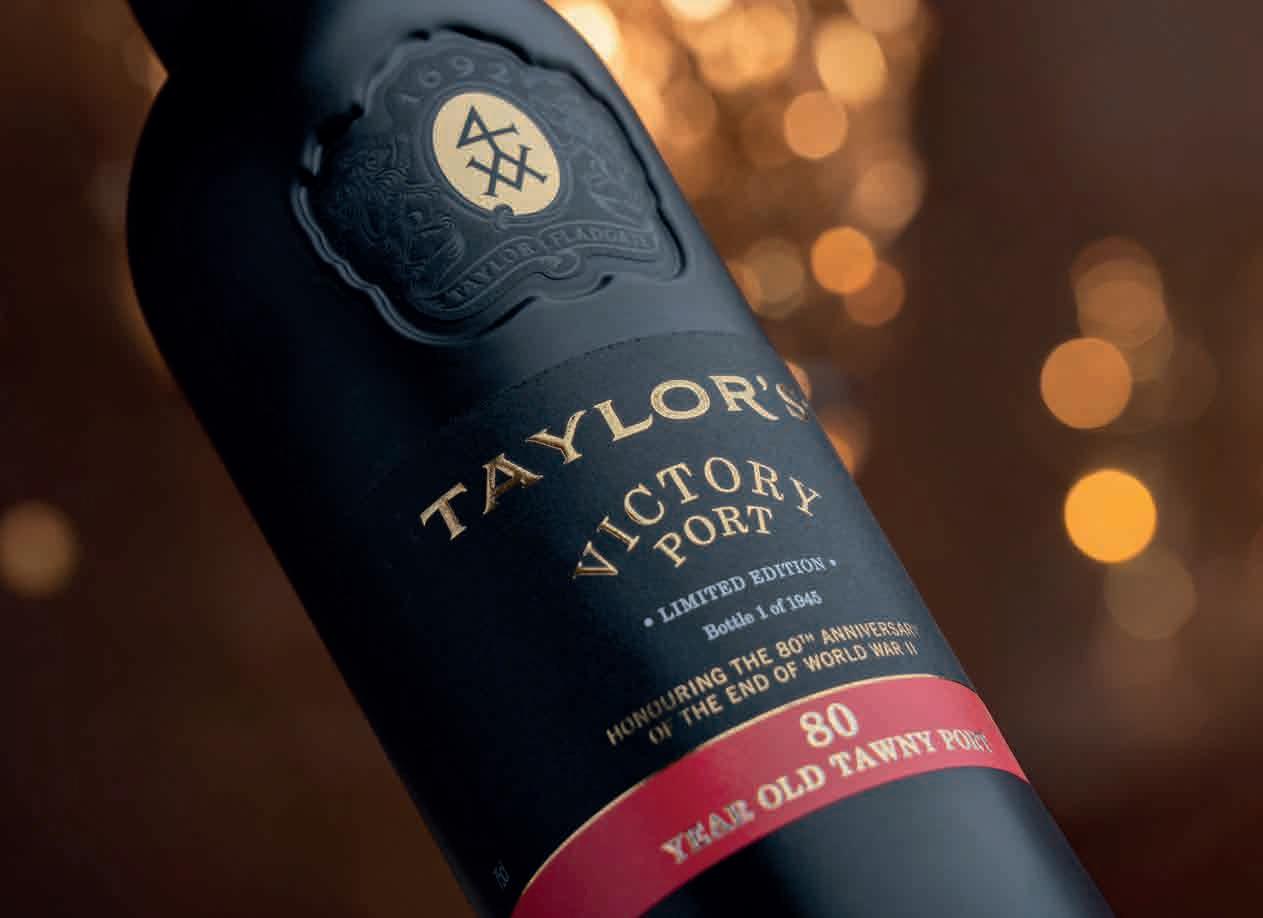

Port is often thought of as a winter drink for northern climes but it can be enjoyed equally in summer, as it is by the Port shippers themselves in the heat of the Douro Valley in northern Portugal.
White Port and tonic:
The so called Portonic’ is a thirst quenching mixer made with a generous measure of dry white Port topped up with tonic water and ice, then served with a slice of lemon and a sprig of mint. Try making it with Taylor’s Chip Dry White Port and serve as an aperitif.
Aged tawny Port: A glass of smooth, aged tawny is positively refreshing when served cool from the fridge in summer, reminding me of long summer afternoons sitting overlooking the River Douro, glass in hand. Be sure not to over chill the wine as this will mask its delicacy. This is best served cellar cool’ (10 to 12 C). Taylor’s 20 year old tawny would be a good choice for this.
Glorious mahogany colour with a glint of red, grading to amber tawny on the rim; beautifully lifted on the nose, rich raisin and sultana fruit with a waft of roasted co ee bean and allspice complexity similarly opulent and mellifluous initially on the palate with seamless transition from quince and dried g intensity to spicy complexity combined with a touch of savoury creamy Bra il nut mid palate. Long and suave with notable grace and freshness evident on the nish (remarkable for this elevated average age), perfectly poised overall and utterly magni cent.
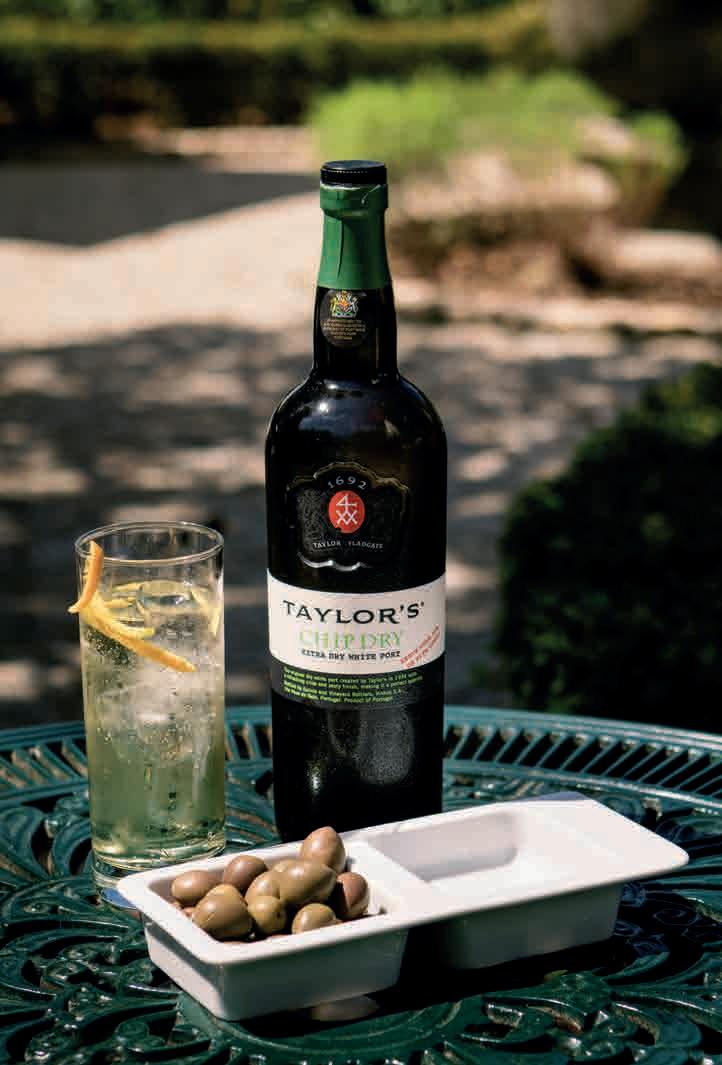
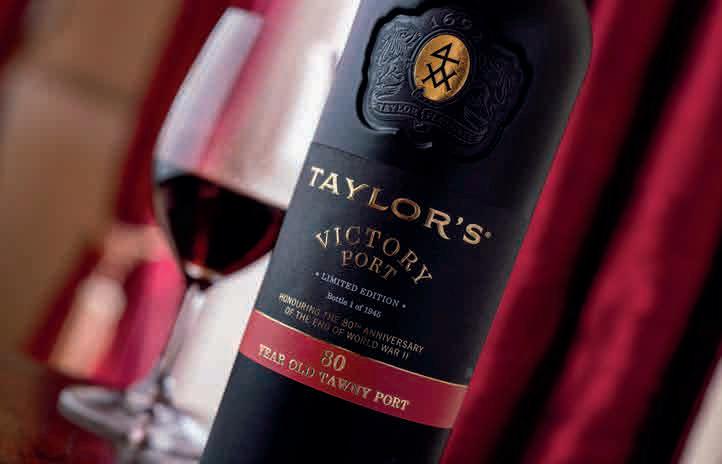

KYNREN’S HISTORICAL
n en n c ale o n land, the breathtaking, outdoor live action spectacle in Bishop Auckland, Co. Durham returns for its 10th anniversary in 2025. The show sweeps audiences through 2,000 years of history, myth and legend, brought to life by a cast of 1,000 volunteers on a vast, seven and a half acre stage history lessons were never like this at school. From the Roman Conquest to the glory of ueen Eli abeth I, the thread of royal history is woven throughout. Witness King Harold’s fateful battle in 1066 and be part of the celebration at ueen Victoria’s Diamond Jubilee, all told with da ling pyrotechnics, stunning choreography and equestrian feats. Running every Saturday from 19 July to 13 September, the 10th anniversary show features an exciting new tribute to the 200th anniversary of the Darlington and Stockton Railway, as the celebrated Locomotion o.1 roars across the stage. To experience the most ma estic event of the summer, visit n en.com
ROYAL STYLE IN THE MAKING
Historic Royal Palaces has brought its acclaimed exhibition Royal Style in the Making to Hillsborough Castle this spring. Originally shown at Kensington Palace in 2021, this abridged version offers a glimpse into the world of the royal couturier and the working relationship between fashion designer and royal client. Star attractions include a salmon pink and gold Hardy Amies evening dress, worn by The late ueen to a film remiere in 1979, an 18th century-style ballgown designed by Oliver Messel for Princess Margaret to wear to a charity ball at London’s Mansion House in 1964 and an elegant calico toile created by Elizabeth Handley-Seymour for the Coronation of George VI in 1937. Until 4 January 2026; hrp.org.uk

A new special commemorative display of ceramic poppies installed at the heart of the Tower of London marks the 80th anniversary of the end of the Second World War. The display, featuring nearly 30,000 of the original poppies made for the 2014 installation, Blood Swept Lands and Seas of Red, created by artist Paul Cummins and designer Tom Piper, returns to the Tower to mark the sacri ces made by so many during the Second World War. You can visit the installation, which opens on 6 May, throughout the summer, including on the anniversary of VJ Day on 15 August, until 11 November, Armistice Day. hrp.org.uk

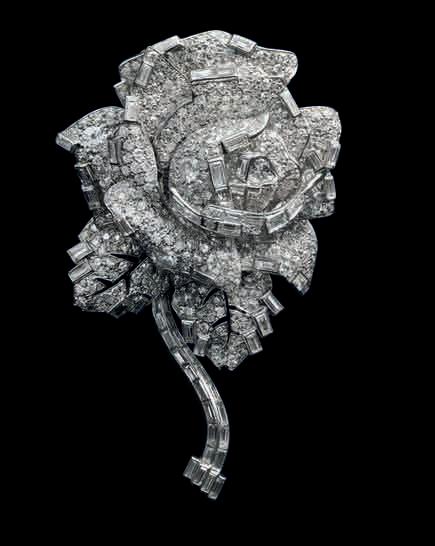
All that glitters is not gold. It’s an old adage but is more than true of the V&A’s blockbuster exhibition. There is plenty of gold to mesmerise visitors, but there is also a wealth of diamonds, rubies, emeralds and many more precious sparklers, crafted into some of the world’s most covetable pieces by the workshops of Cartier. The prestige of Cartier was such that they were often proclaimed “the jeweller of kings and the king of jewellers”, and among the 350 objects on display, there are plenty with a royal connection, including Queen Elizabeth II’s Williamson brooch, Princess Margaret’s rose clip brooch, the stunning art deco Tutti Frutti bandeau belonging to Lady Louis Mountbatten, the Maharajah of Patiala’s necklace and Grace Kelly’s engagement ring. It’s the rst ma or exhibition in almost 30 years dedicated to Cartier jewels and watches, so take your sunglasses and prepare to be dazzled. Cartier is at The Sainsbury Gallery, V&A South Kensington until 16 November 2025; vam.ac.uk
Soldiers from the Indian Army camped at Hampton Court Palace on a number of occasions in the early 20th century, including for the coronation celebrations of Edward VII (1902), George V (1911) and George VI (1937). Discover the forgotten story of the soldiers who made their temporary home at the palace through a new exhibition of previously unseen objects, hotogra hs films and ersonal stories. The Indian Army at the Palace is at Hampton Court Palace until 28 September 2025. For more information, visit hrp.org.uk

Do you know someone whose passion for books has inspired a love a reading among others? Launched this spring, the Queen’s Reading Room Medal celebrates individuals who have championed reading, books and literature in their communities. ow in its third year, and rst year as a charity, the ueen’s Reading Room works to promote the power and bene ts of reading, and has recently released ndings of a neuroscience study proving the positive impact of reading on mental wellbeing. To nominate a book champion who deserves recognition visit thequeensreadingroom.co.uk
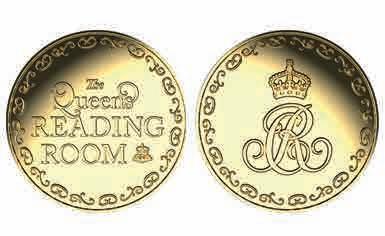


Cole & Son’s exquisite wallpaper designs have adorned many a room for 150 years. The proud holder of a Royal Warrant since 1961, the company is evolving while keeping its heritage and tradition at the heart of all it does. By Fiona McCarthy

It is no mean feat to hold a Royal Warrant of Appointment for nearly 70 years. Prestigious British wallpaper company Cole Son was rst granted its warrant in 1961, under ueen Eli abeth II. ow, as the brand celebrates its 150th anniversary, it has been awarded a renewed Royal Warrant by King Charles III, a huge honour in part received for its service to the Royal Household, where the design house’s wallpapers hang in some of the UK’s most important stately buildings, including Chatsworth House, Blickling Hall, Buckingham Palace and the Houses of Parliament.
To receive a Royal Warrant in 2024 requires an unwavering commitment to the highest standards of quality and craftsmanship,” says Marie Karlsson, Cole Son’s Creative and Managing Director. Cole Son’s passion for preserving the arts through the marriage of traditional techniques with contemporary innovation drives everything it produces, much as it did when block printing specialist John Perry founded the company in a wallpaper mill in Islington in 18 5. Even in the late 19th century, Perry was forward thinking, pushing boundaries he revived the art of hand flocking, a process that imitates cut velvet. Perry’s most notable contributions to the interiors industry were the creation of a process to imitate the look and feel of lustrous silk, and developing a single colour surface printing machine to replicate the block printing process in a rotary style.
Sustainability was one of the Royal Household’s key criteria when it came to handing out Warrants late last year to more than 500 companies, from dry cleaners and shmongers to cobnut growers, roofers and co ee suppliers. This focus
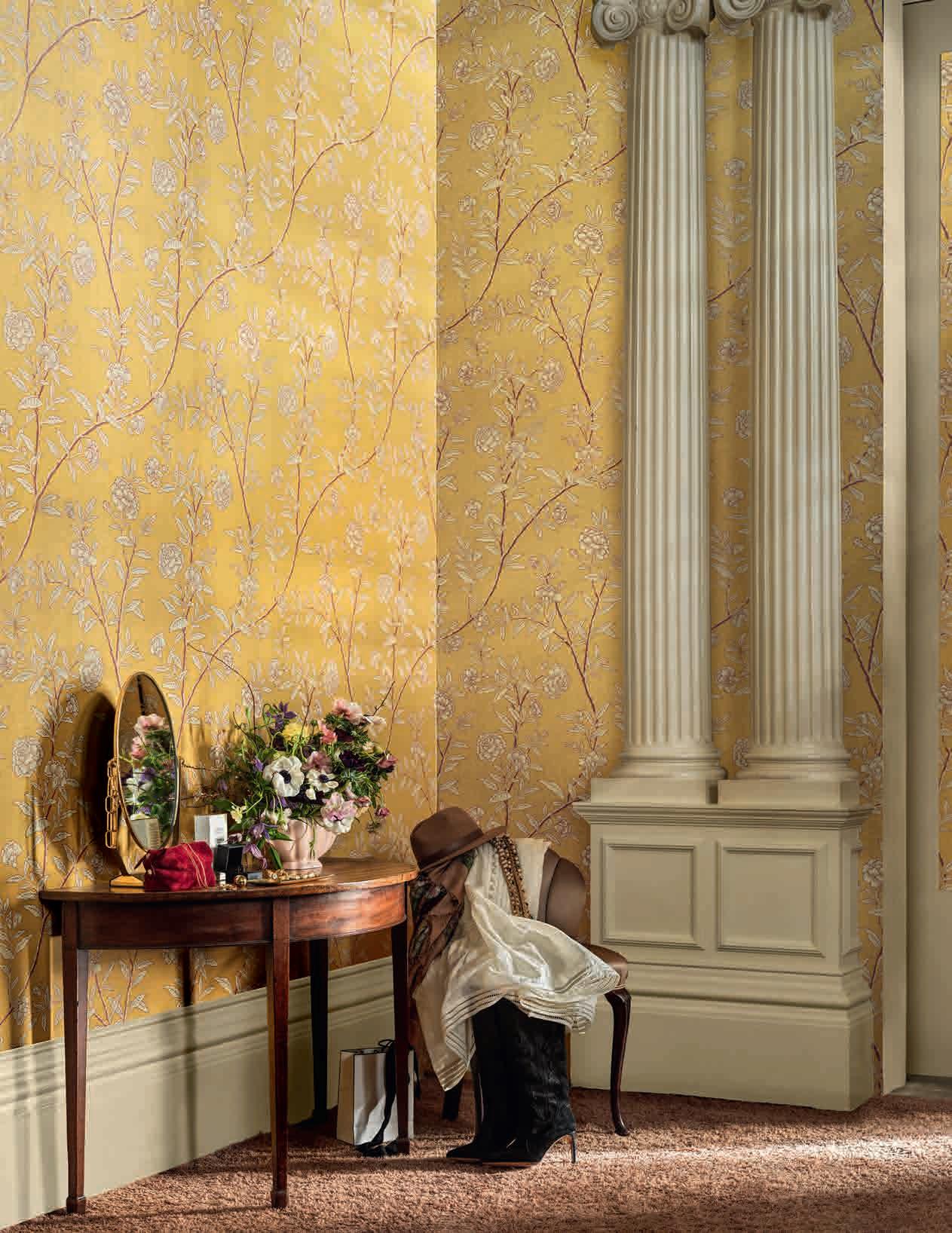

in?” Karlsson teases. While the rest of the world is scrabbling with embracing AI, the Cole & Son team has returned to how things were done over a century ago. “This is what makes Cole & Son unique. To maintain our craft, we need to create our own original designs, to keep propriety of those patterns. That is what people will pay extra for – they’re buying into British history and the stories of all those people, past and present, who have carried this company for generations.”
Cole & Son’s papers not only line the walls of castles and palaces, however, but also “loos and nightclubs”, Karlsson laughs. “A lot of people have been dancing against the beauty of a Cole & Son backdrop,” she winks. Of course, the Royal Warrant not only recognises the brand’s historical past, but it also celebrates its present. “While we need to be authentic in looking after our heritage, we also need to evolve,” she says. So alongside the forthcoming Classics Collection Vol I, a series of ‘analogue’ patterns such as Acanthus, Strawberry and Willow Branch – drawn from the brand’s iconic archive of more than 2,000 block print designs and 500 screen print patterns, re ned and recoloured, making them relevant for our audience today and tomorrow” – there are striking modern day collections including a third collaboration with South African design studio Ardmore, founded by Zimbabwean ceramic artist Fée Halsted in 1985.
was very good for companies like us, because wallpaper is a sustainable resource in that you don’t wallpaper every day. You maybe do it every seven or 10 years. Some people do it more often, most of us don’t.” It was also an opportunity for Karlsson to shine a light on Cole Son’s award winning ‘Fungi Forest’ wallpaper collaboration with British fashion designer Stella McCartney, used as the backdrop for her Future of Fashion exhibition held at Salone del Mobile in Milan in 2022. Printed on a new eco substrate derived from 9 per cent renewable bres whose manufacturing process uses 30 per cent less greenhouse gases than traditional non woven wallcoverings, it has proven to be Cole & Son’s, and the interior design industry’s, most sustainable wallpaper to date.
Intrinsic to Cole & Son’s values is staying true to its traditions. As a Royal Warrant holder, consistency is essential. You can’t do your craft in a di erent way, it has to be done as it was done, or at least as close as you can possibly do it,” Karlsson says. This doesn’t mean you can’t evolve, but there is an advantage in holding on to your heritage. In recent years, Cole & Son, as ‘an art atelier’, has taken an unusual step backwards, upping its traditional techniques such as hand drawing and painting their designs. “Isn’t that an interesting innovation in the most fast moving time we have ever lived
“This represents a quirky Cole & Son, where we have taken the savanna narrative hand painted onto hand thrown pieces by Ardmore’s Zulu artists to a whole new level with our own hand drawings and paintings.” The Baobab Tree’ design, shown during Paris Design Week in January in a beautiful apartment overlooking the Jardin du Palais Royal, is alive with a riot of exotic, colourful birds tucked between the flowers and fruit hanging from fat, sprawling branches of Africa’s most ancient tree. “In this, we really live art!” enthuses Karlsson. This summer, ‘Couture Carousel’, an illustrated fashion pattern in repeat, inspired by Harrods’ vintage magazine covers, will launch in honour of the famous department store’s 175th anniversary; in the autumn, there will be a collection featuring “a beautiful magnolia that I know is going to dress so many beautiful rooms all over the world”, she says. What is essential in any Cole & Son collection, Karlsson reassures, is that it will always be grounded in original designs dreamt up by her team. “These days, we are overloaded with images. Everything is pictures. We read in pictures. We speak in pictures. How many of us read what’s in the caption?” she says of our 21st century obsession with social media platforms such as Instagram and Pinterest. “But Cole & Son is telling stories through its collections, so we need to bring new stories. We can’t look at what everybody else is doing, we need to bring new ones to the table,” she asserts.
A trip to gardens and forests in Japan with her design team, for example, inspired last autumn’s ‘Shinrin YOKU’ ( Forest Bathing’) collection of 12 designs, hand painted with Japanese traditional watercolours and calligraphy pencils and brushes. It oo es with ikigai’, the Japanese ethos of nding meaning and joy through purpose and passion. Bonsai and traditional chinoiseries intertwine with kimono embroidery and meditation patterns, printed on natural materials such as Paperweave, Grasscloth and Natural Silk. “It’s so important for the team to travel, to see things in 3D, to spot new movements, new repeats, to experience new leaves, new flowers, new gardens, new perspectives, new colours,” she says. “Our mission in life as a brand is to bring new things for people to play with and those things need to come from an organic perspective. That is the future.” Cole-and-son.com
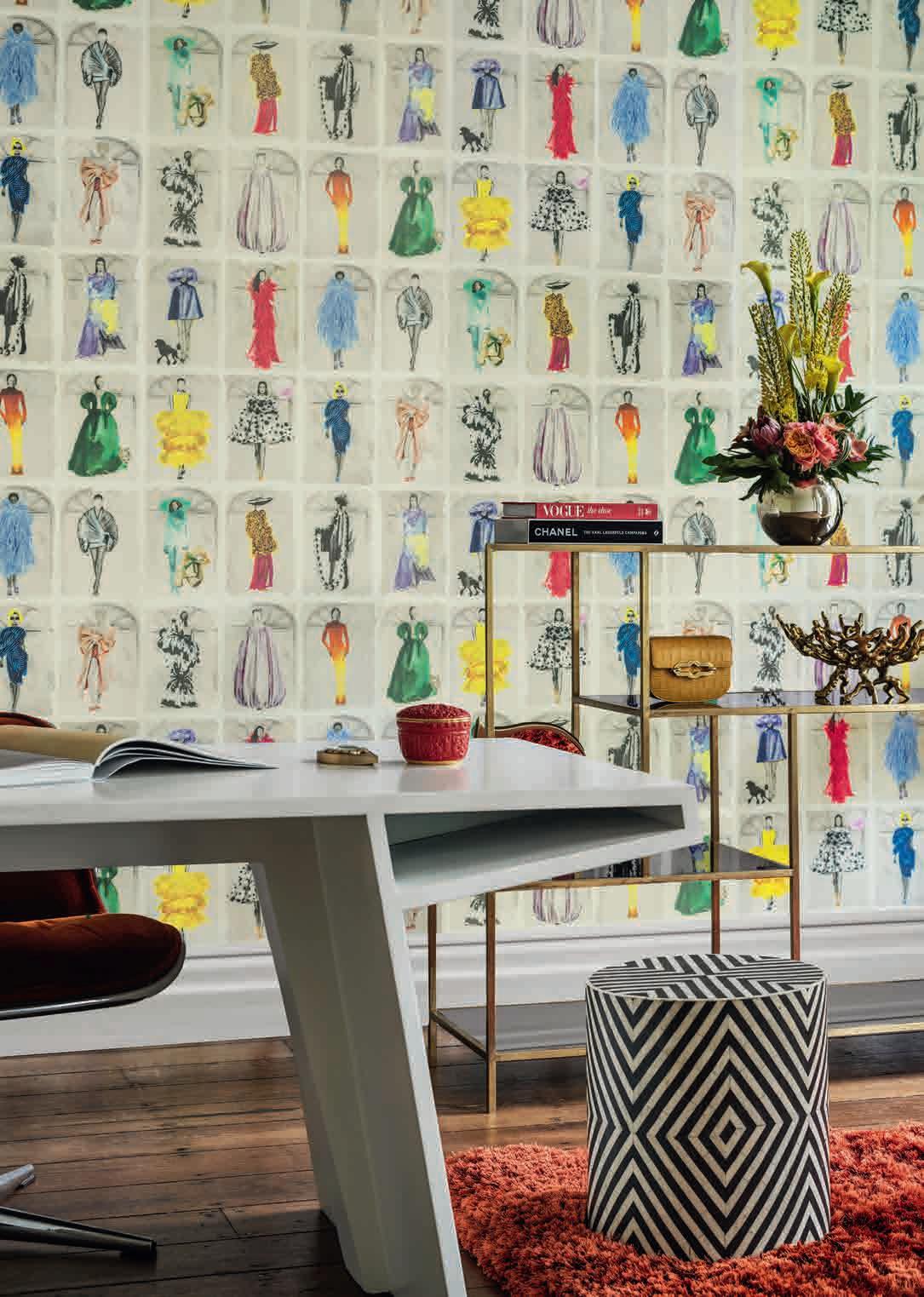
A fragrant and colourful high point of the social season, Chelsea Flower Show’s royal links go back to 1858 and Prince Albert’s granting of its charter. By Lucinda Gosling

In May 1862, the Great Spring Fair took place at the gardens of the Royal Horticultural Society in Kensington. The recently widowed Queen Victoria, patron of the society, gave her blessing to the event in honour of her late husband, Prince Albert, who had served as the society’s president. It was Albert who had given it a new royal charter in 1858 and permitted a name change from the London Horticultural Society to the Royal Horticultural Society, and, as part of his ambitious vision for a cultural and scientific centre in Kensington (dubbed lbertopolis’), had been heavily involved in the establishment of an extravagant garden intended to be a showground for the society’s events. The garden’s opening ceremony on 23 June 1861 would be Albert’s last public appearance in London before his premature death in December that year.
Twenty-si years later, the show moved from the site now occupied by Imperial College and the Science Museum, to the Inner Temple Gardens in the City, and by 1913 had set up in the grounds of the Royal Hospital Chelsea. The RHS Chelsea Flower Show had found its permanent home.
Through each successive reign, the royal presence has bestowed on Chelsea a special cachet. It is the serious garden show that is also a smart fi ture on the social calendar, the crème de la crème of horticultural occasions. Queen Alexandra took great interest in gardening matters and spent several hours looking round the inaugural Chelsea Flower Show in 1913. Queen Mary shared her passion, while the late Queen li abeth II visited most years from a young age, first accompanying her parents in the 1940s. The Queen Mother was involved in the creation of gardens all her life (including a garden at Royal Lodge, Windsor, named after the designer, ric avill). er brother, ir David owes-Lyon, served as treasurer and then president of the RHS until his death in 1961 and would escort his sister or niece around the show most years. Queen li abeth II’s final visit took place in May

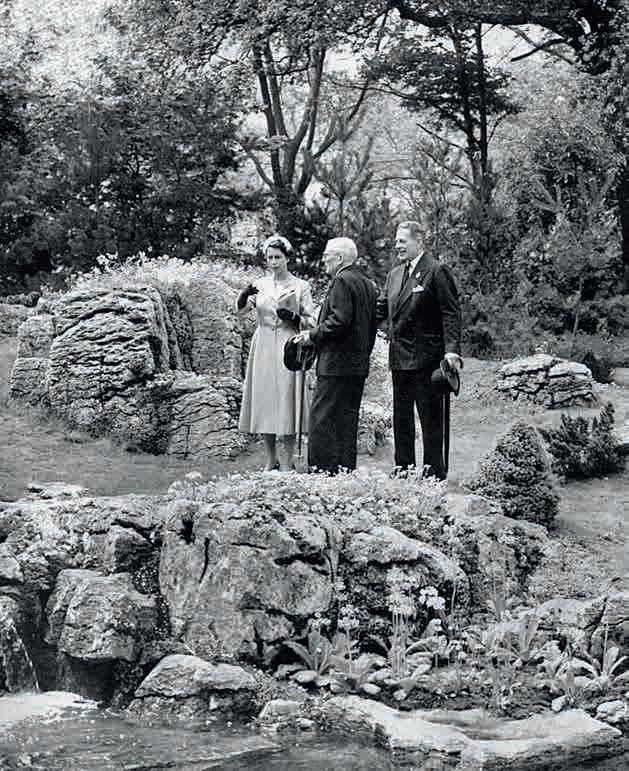
Clockwise from above: Queen Elizabeth II at the Chelsea Flower Show in 1955, accompanied by her uncle, Sir David Bowes-Lyon; a page from a June 1937 issue of The Sketch showing King George VI, Queen Elizabeth, the Duchess of Kent and Princess Royal; Queen Elizabeth II with the then-Prince of Wales, to whom she had presented the RHS Victoria Medal of Honour; The King and Queen with schoolchildren in the No Adults Allowed Garden
0 , when the 6-year-old monarch was conveyed around in a buggy, looking spring-like in a pink coat. In recent years, the oyal amily have been more actively involved. The Princess of Wales (when Duchess of Cambridge) co-designed the ack to ature arden with architects Davies White, which was first e hibited at Chelsea in 01 . Created as part of the ’s partnership with ngland, it was intended as a blueprint for how gardens can benefit physical and mental well-being, and is now a permanent fi ture at Wisley. In 00 , The Queen presented The Prince of Wales, avid gardener and advocate for the environment, with the society’s most prestigious award, the Victoria Medal of onour, at the show. ow, as is Majesty The King, he is the ’s new patron and has wasted no time in implementing plans that link the royal gardens with the society’s activities, including an show scheduled to take place at andringham in 0 6. The King and Queen are enthusiastic visitors to the show among the gardens they visited last year was the o dults llowed arden, created by children for children grown-ups can only gain admittance with a special pledge. The royal couple were delighted to be given the titles of King Compost and Queen of ees. With such a green-fingered patron, the relationship between the oyal amily and ritain’s premier horticultural show will continue to bloom.
Chelsea lower how takes place this year from 0 to May. Visit rhs.org.uk for more information





Give your garden a regal makeover with these spectacular blooms, all named in honour of the Royal Family and celebrated milestones in the reign of the late Queen
There is a long tradition of naming things after royalty, and plants are no exception. While Queen Victoria gave her name to varieties of rhubarb and plums, and a potato renowned for its superior roasting qualities was named for Edward VII, there can be few accolades more delightful than having a rose named after you. We select 10 gorgeous varieties to give a regal touch to any border.
THE QUEEN ELIZABETH
Bred by American rose specialist, Dr Walter Lammerts, in 1954 in honour of the new Queen, this pale pink hybrid variety won the World’s Favourite Rose award in 1979.
THE WILLIAM AND CATHERINE
The William and Catherine rose, was launched in 2011 by David Austin Roses to mark the marriage of Prince William to Catherine Middleton.
PRINCESS ANNE
Introduced in 2010 to honour The Princess Royal, this deep pink rose is described as “elegant and resilient”, a fitting match for this hard-working and no-nonsense royal.
DIANA, PRINCESS OF WALES
There are several roses named after the late Princess, but this white rose with a yellow centre was chosen by Diana from seedlings supplied by Harkness roses. Harkness later provided thousands of stems for Diana’s funeral in 1997.
PRINCE PHILIP, DUKE OF EDINBURGH
Named in honour of The Duke following his death in April 2021, for every sale of this unusual crimson pink rose with white stripes, arkness oses donates . 0 to the Duke of Edinburgh’s Award Living Legacy Fund.
PRINCESS ALEXANDRA OF KENT
This bright pink, full-petalled rose was bred by David Austin in 2007 and named after the Queen’s cousin, Princess Alexandra, Lady Ogilvy. A keen gardener and lifelong visitor to Chelsea, the Princess is also patron of the le andra ose Charity, founded by her greatgrandmother, Queen Alexandra, in 1912.
SILVER JUBILEE
Bred in 1977 by Alec Cocker Sr of Royal Warrant Holders, Cocker’s Roses, to celebrate The Queen’s Silver Jubilee, this award-winning rose with coral pink blooms became the company’s best-selling variety.
JUBILEE CELEBRATION
salmon-pink shrub rose with a heady scent, this variety was created by David Austin in 1993 but named in honour of The Queen’s Golden Jubilee in 2002.
ROYAL JUBILEE, 2012
Ten years later, David Austin celebrated The Queen’s Diamond Jubilee with this showstopping rose, boasting massive, peony-like blooms.
PLATINUM JUBILEE
weet-smelling, gentle pink, with perfectly formed petals, arkness’s rose was a fitting tribute to the late Queen’s 70 years of service.

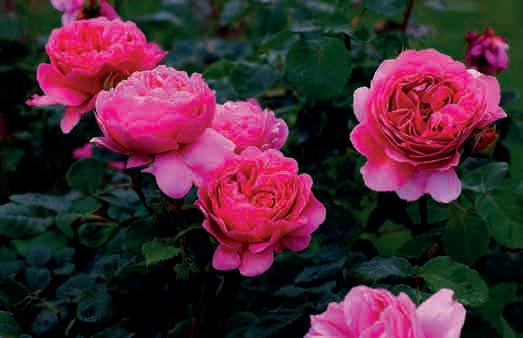

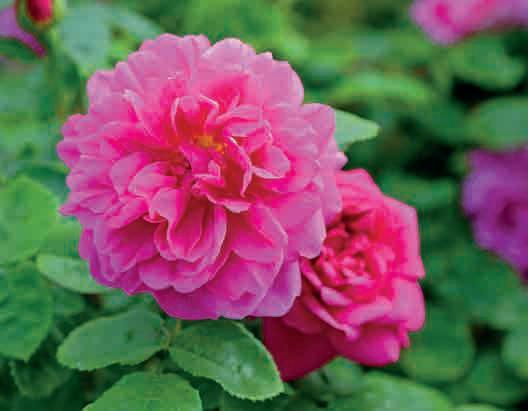
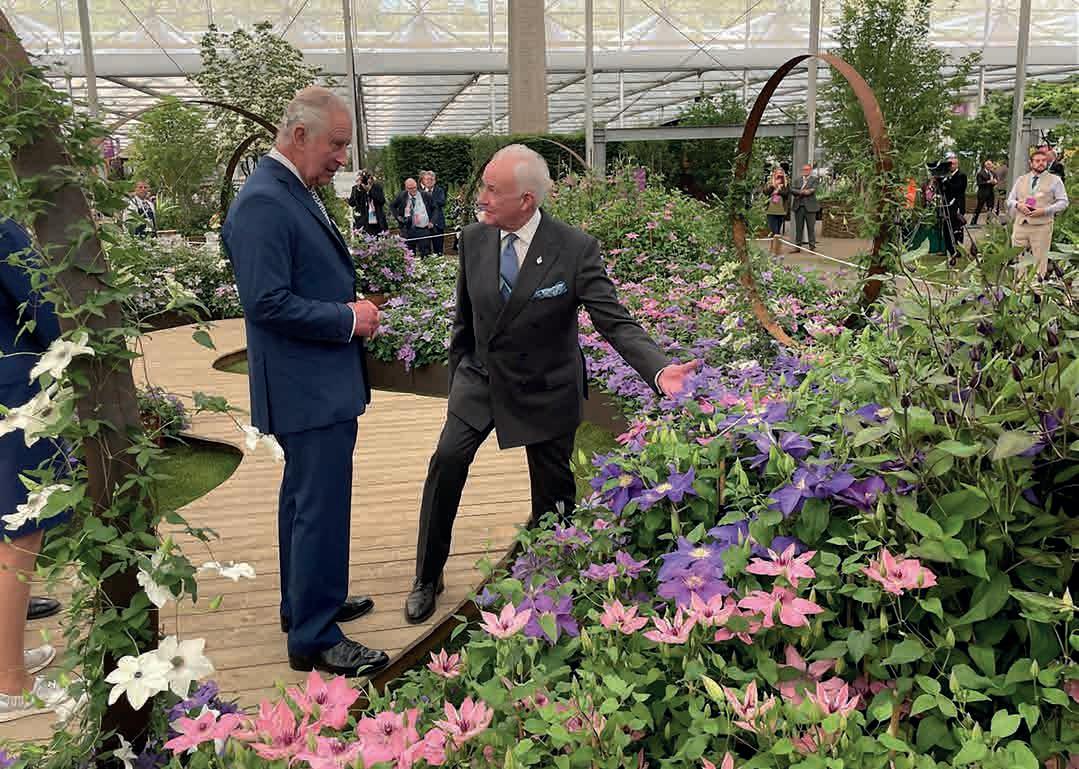
A favourite of the nation’s gardeners – and of royalty –clematis plants are a life’s work for this Royal Warrant Holder
Visitors to the gardens at Balmoral this year will likely admire the impressive displays of various clematis rambling over walls and climbing among the borders. But they may be surprised to learn the plants originated almost 700 miles away, in the Channel Islands. The Guernsey Clematis Nursery Ltd began in 1984, cultivating clematis using redundant tomato glasshouses and bene ting from the mild climate of the island. From those relatively humble beginnings, today the company produces a staggering two million clematis plants every year, delivering them around the globe from its state of the art nursery, with sustainable practices at its heart. Together with its sister company, Raymond J Evison Ltd, which specialises in clematis breeding and development, Guernsey Clematis is considered to be one of the leading breeders and producers of clematis plants in the world.
The company’s long connection with royalty dates back to 2009 when clematis were given to Her Late Majesty, Queen Eli abeth II for planting at Balmoral. Following this were gifts of clematis to HRH the Prince of Wales for the gardens at
Highgrove and Birkhall before the company became a supplier to Highgrove in 2013. The Guernsey Clematis Nursery Ltd was granted a Royal Warrant to the former HRH the Prince of Wales in March 2022, and in May 2024, was granted a Royal Warrant from His Majesty The King for the supply of clematis.
To date, there are two clematis varieties named after members of the Royal Family. In 2012, at the RHS Chelsea Flower Show, the company launched a delicate pink clematis named the Countess of Wessex and in 2021, also at Chelsea, the Duchess of Cornwall, named in honour of HRH Queen Camilla (as she now is), with striking flowers of deep violet. Raymond Evison CBE, founder of the company, has amassed an impressive number of awards, reflecting his status as an expert in this particular eld of horticulture he can count 34 Chelsea Flower Show gold medals over his career, as well as numerous RHS Annual Awards for his exhibits of clematis cultivars. Justly proud of the company’s Royal Warrant, he calls it a tremendous honour not only for our company and sta team, but for the island of Guernsey too”. raymondevisonclematis.com
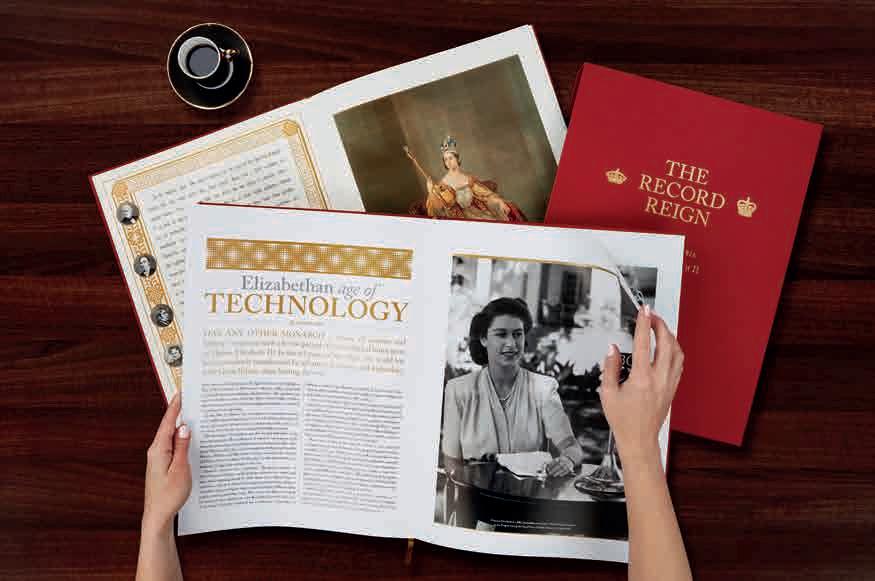
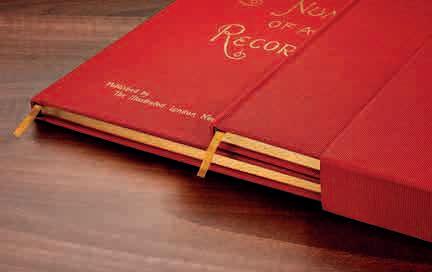


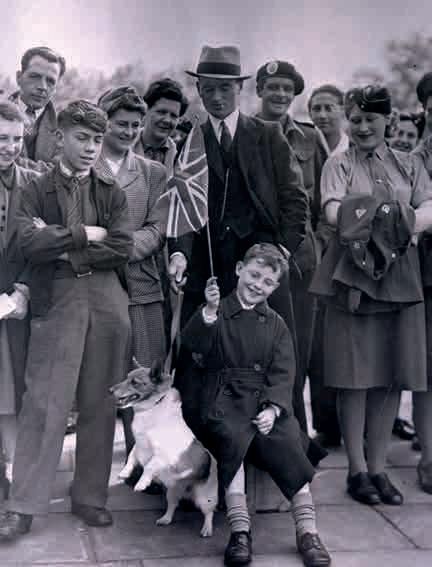
As news of the end of the Second World War in Europe began to trickle out, people thronged the streets of London – and two young princesses were among the crowds. By Coryne Hall
Eighty years ago, on 8 May 1945, Britain celebrated VE Day as Europe emerged from Nazi tyranny. The breakthrough came the previous June when the Allies landed in Normandy. Paris was liberated in August and by October the Germans had been driven from France, Belgium and the southern Netherlands. As the Russians closed in, Hitler committed suicide on 30 April 1945. On 2 May, the Russians took Berlin and the German armies in Italy, Holland, Denmark and north-west ermany then capitulated.
Five years earlier, as Hitler’s armies swept through Europe and other monarchies fell, King George VI and Queen Elizabeth played an essential role. In 1940, after the fall of France, Britain faced a very real threat of invasion. The King and Queen remained in London, returning to Windsor Castle to sleep. They had already sent their daughters, 13-year-old Princess li abeth and nine-year-old Princess Margaret, to Windsor with their governess.
It was also considered safer for George’s mother, Queen Mary, to leave London, so the 7 -year-old matriarch went to Badminton House in Gloucestershire, home of her niece, the Duchess of Beaufort. With her went more than 70 pieces
of personal luggage and, to the dismay of the Duchess, 63 members of sta from Marlborough ouse, plus their dependants. The imposing Queen found country life strange, but soon settled in. “So that’s what hay looks like!” she remarked, standing in a field in her ankle-length coat and skirt, complete with formal gloves, earrings and characteristic brimless toque hat. Soon she was collecting scrap metal for the war e ort (no plough or field implement was safe) and organising ‘wooding parties’ to strip ivy from walls, buildings and trees. She refused to join her brother Lord Athlone in Canada or seek safety at Windsor.
The King now had to balance his monarchical duties with those of a wartime sovereign, visiting troops at home and abroad and raising morale. When London and other cities were hit in the lit , The King and Queen toured bombsites and moved among the people, King George in uniform, Queen Elizabeth in muted blue, pink and lilac that stood out among the debris. lthough she was commander-in-chief of several women’s regiments, she was never seen in uniform.
“If the poor people had come to see me they would have put on their best clothes,” she maintained.
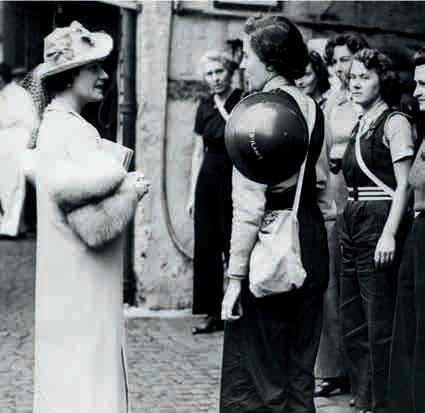


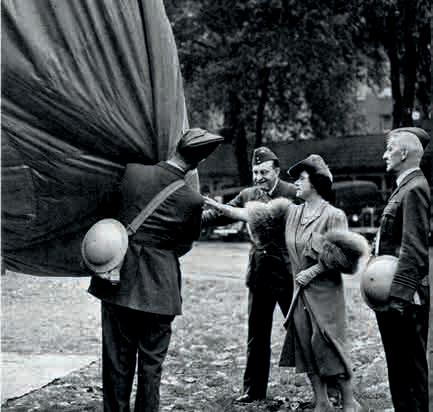



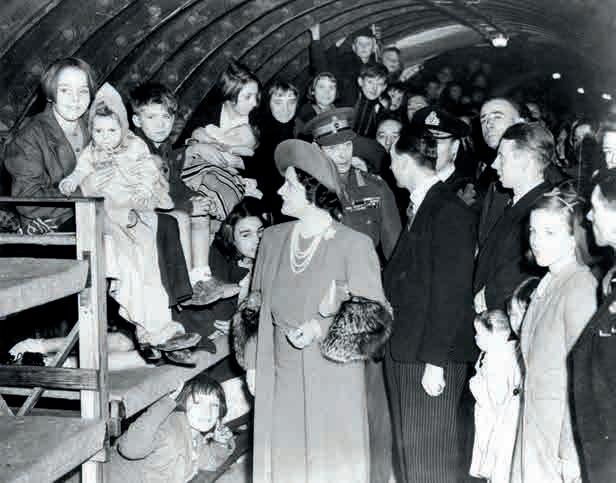
The East End of London was particularly badly hit, The King writing to Queen Mary that the people “are quite marvellous in the face of adversity… some have had very narrow escapes”.
The King and Queen had a narrow escape themselves on 13 September 1940. They were in a sitting room at Buckingham Palace when they “heard an aircraft making a zooming noise above us, saw 2 bombs falling past the opposite side of the Palace, & then heard 2 resounding crashes as the bombs fell in the quadrangle about 30 yards away”, King George recorded. They ran out into the passage, wondering why they had not been killed.
The Queen later commented that she was glad they had been bombed. “Now I can look the East End in the face,” she famously said. Altogether, the palace was bombed nine times and the private chapel was destroyed.
The King’s sister, Princess Mary, Countess of Harewood, became commandant of the West Riding Auxiliary Territorial
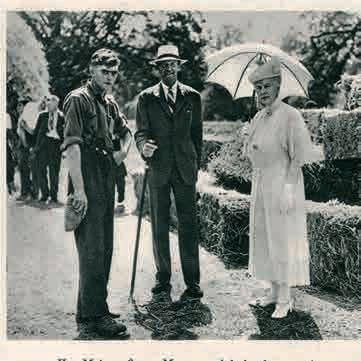


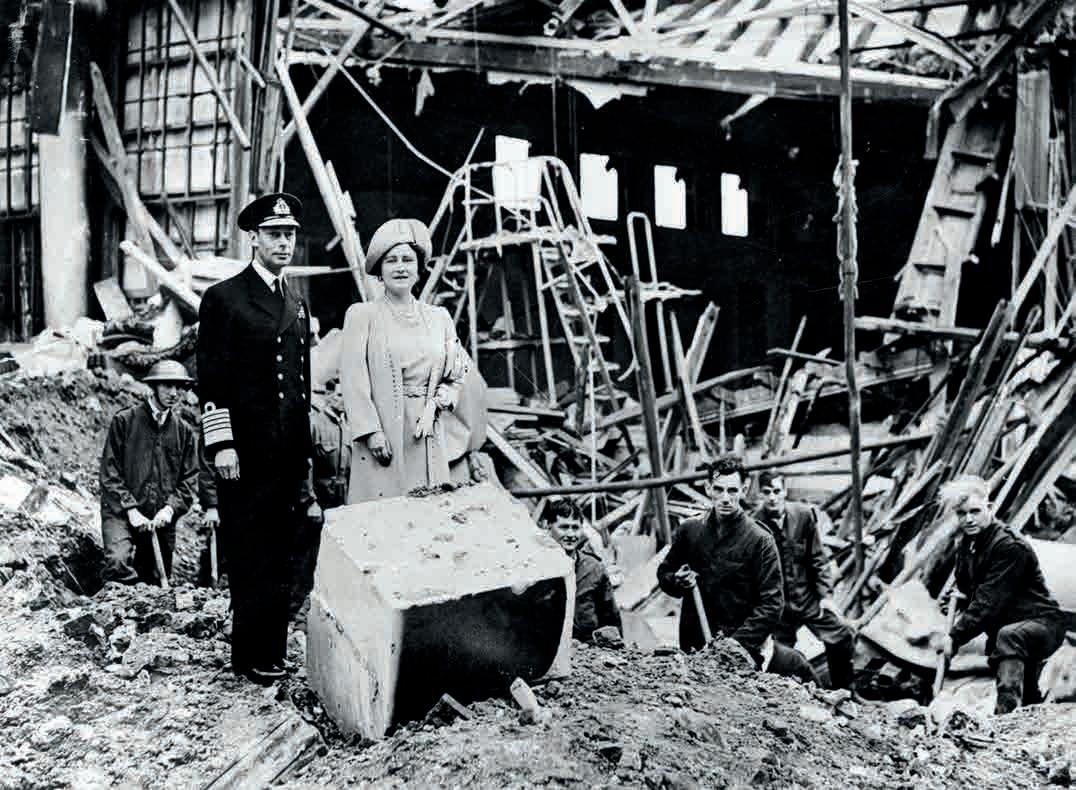
Facing page, clockwise from top left: The Queen speaks to women volunteers at the garages of the London ambulance service not long after the outbreak of war in September 1939; The King and Queen meet a Mrs Eals, who took cover in an Anderson shelter when her west London house was bombed in September 1940; the royal couple visit the North Southwark deep air raid
ervice ( T ) in 1 1, making radio appeals to women to enlist, inspecting units and attending conferences. he was commandant-in-chief of the ritish ed Cross and controller of the West iding Territorial ervice. he visited station hospitals, military commands, Commonwealth regiments and bomb-damaged towns in the north of ngland.
Prince eorge, Duke of Kent, worked first for the Ministry of Labour and then as Chief Welfare cer of the oyal ir orce, touring civil defence installations, inspecting factories, viewing bomb-sites and visiting bases. is wife, the beautiful Princess Marina of reece and Denmark, worked as a nursing au iliary at niversity College ospital, London, and in 1 0 became Commandant of the Women’s oyal aval ervice (the Wrens), bringing all her stylish elegance to the uniform ( o woman wants to wear a hat that makes her look unattractive, war or no war, she maintained) and a human touch to inspections.
n ugust 1 , si weeks after the birth of his third
shelter on 14 November 1940; how the Illustrated London News depicted Queen Mary during her time at the Duke of Beaufort’s home, Badminton Hall, in Gloucestershire; and The Queen inspects a barrage balloon in 1939.
Above: The King and Queen see the damage to Buckingham Palace after it was hit during the Blitz in 1940
child, Prince Michael, the Duke left Invergordon in cotland in a utherland flying boat. In dense mist, at an altitude of 700 feet, the aircraft hit the side of a hill below agle’s ock near Dunbeath, turned over and burst into flames. nly one of the 11 people on board survived.
The King and Queen were at almoral when he was called to the telephone to be told the dreadful news of his brother’s death.
Prince enry, Duke of loucester, served as Chief Liaison cer with the ritish Military Mission. e later carried out several military and diplomatic missions to the ar ast but, after the Duke of Kent’s death, he was prevented from undertaking any dangerous missions. In 1 , when Princess li abeth’s 18th birthday removed the possible need for a regency, he became overnor eneral of ustralia.
y the spring of 1 , Princess li abeth was desperate to play her part and The King finally permitted her to join the T . The very brisk and hearty Commandant Wellesley took
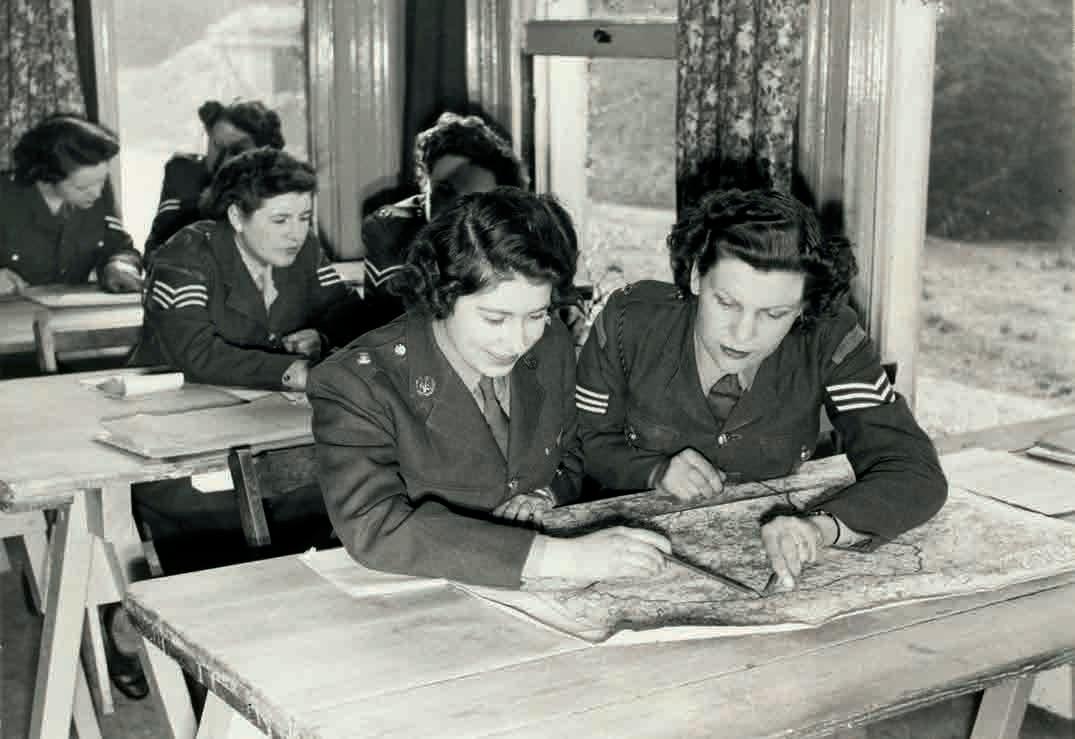
the princess o to the depot at Camberley, urrey, where o. 30873 econd ubaltern li abeth le andra Mary Windsor was registered and issued with a regulation khaki uniform and peaked cap.
very morning she was driven from Windsor to join the other girls going through the C course. he learnt to strip and service an engine, change a wheel, read a map and drive in convoy. When she took her final test, The King and Queen came to watch.
ome weeks later she proudly drove her company commander from ldershot to uckingham Palace, driving twice round Piccadilly Circus, perhaps from e uberance or maybe unfamiliarity with the roundabout system.
y then the war was nearly over. ermany’s unconditional surrender was signed on 7 May and a ceasefire was agreed. s the news trickled out, floodlights and loudspeakers were placed along The Mall and jubilant crowds flocked to Piccadilly Circus sounding rattles and hooters. The announcement of victory would be made the ne t day.
Victory in urope Day, Tuesday 8 May, dawned fine and warm. The Prime Minister, Winston Churchill, made the o cial announcement at 3pm and nothing could dim the people’s rejoicing. Crowds converged on uckingham Palace, climbing lampposts, mounting the tops of buses and shouting for The King and Queen. They were soon rewarded.
The King and Queen appeared on the balcony with the boarded-up windows of the palace behind them, the red drapery over the balustrade adding some colour.
We went out eight times altogether during the afternoon
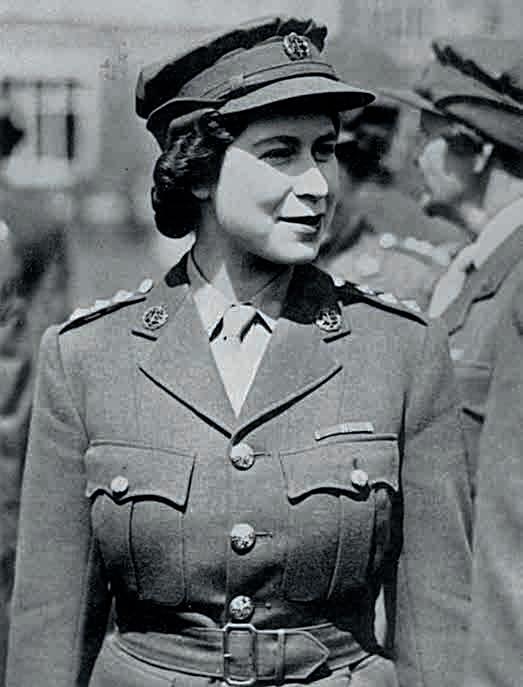
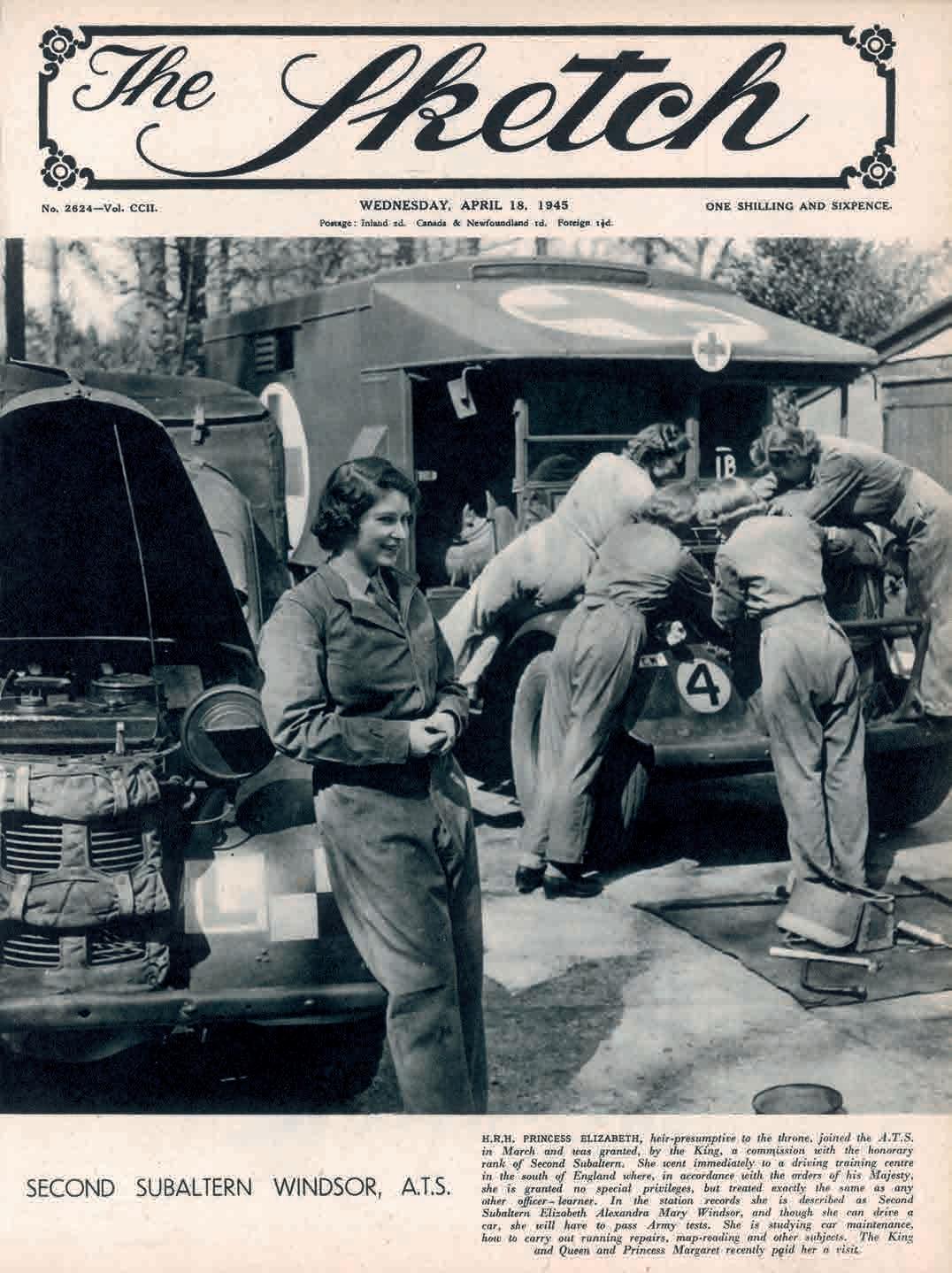
as a Second Subaltern during her training as a mechanic in 1945. The driving and vehicle maintenance course at Aldershot was near enough to Windsor Castle that the Princess could return there each evening.
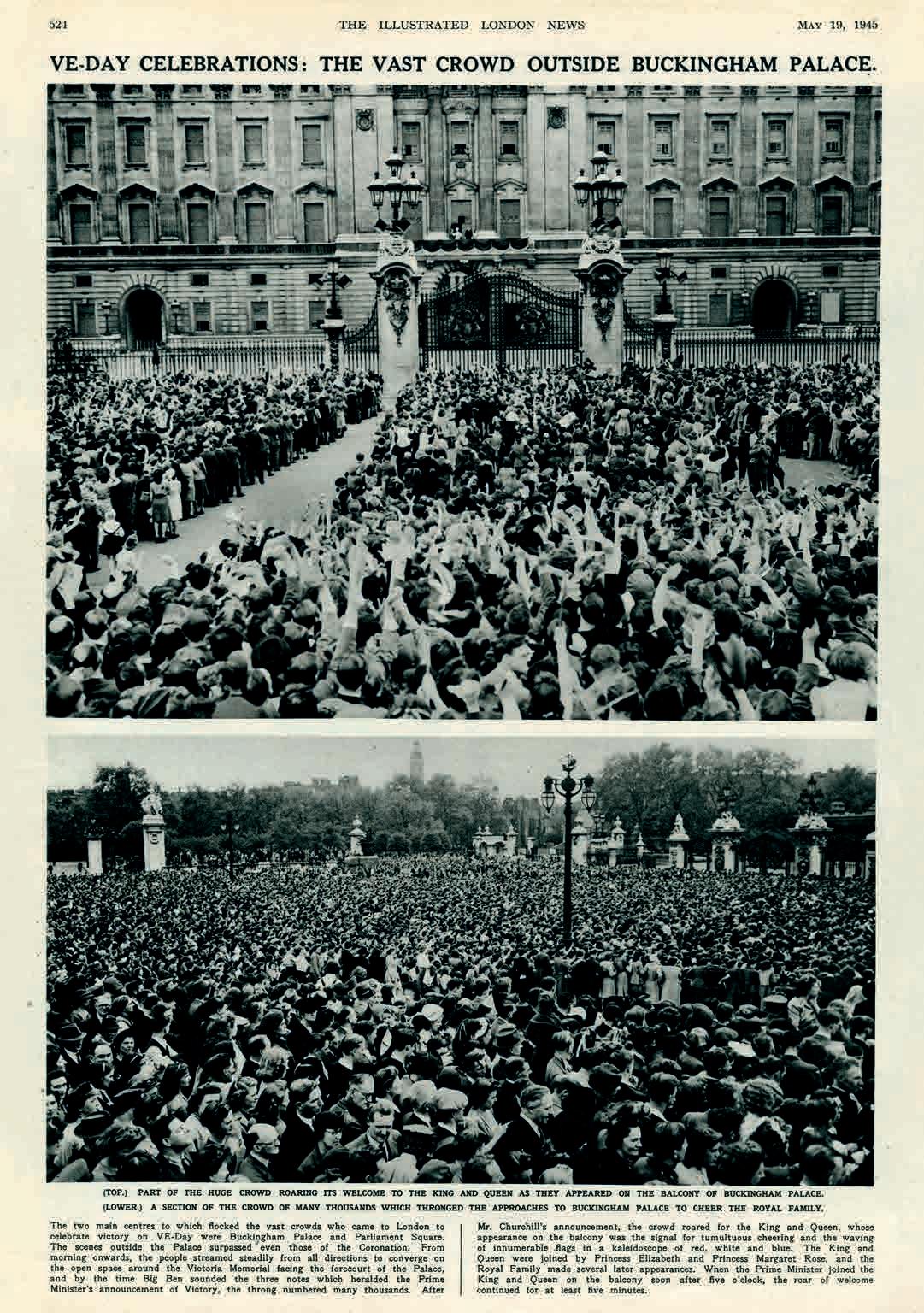

and evening,” The King recorded. “We were given a great reception.” The sight of the uniformed King, The Queen in powder blue and their daughters ( li abeth in her T uniform) sent the crowds wild.
King George broadcast his victory speech that evening. Although he had gone over the text several times with his speech therapist Lionel Logue, the strain of the last few years showed as the exhausted monarch spoke slowly and hesitated more than usual.
He was, he said, “speaking from our Empire’s oldest capital city, war-battered, but never for one moment daunted or dismayed”. He paid tribute to the fallen and vowed they would turn to deal with the defeat of Japan with the upmost resolve. “But at this hour, when the shadow of war has passed from our hearths and our homes in these islands, we may at last make one pause for thanksgiving.” His words were greeted with more cheers and the singing of the national anthem as the street parties continued into the night.
Later, with The King’s permission, the princesses slipped out of the palace to mingle with the celebrating crowds. “Poor darlings, they have never had any fun yet,” he wrote. Among the party was their uncle David owes-Lyon (who Princess Margaret later said arranged it all), their rench teacher and friend Toni de ellaigue, cousin Margaret lphinstone (later hodes) and several guards o cers. ne of them reprimanded li abeth for being improperly dressed when she pulled her ATS cap down to try to mask her identity. She was forced to pull it up properly. Years later, Margaret Rhodes recalled what fun the princesses had standing outside the palace railings shouting for The King and Queen and cheering when they appeared. Surrounded by excited crowds, the princesses then went up St James’s Street to Piccadilly, where they did the conga through the it otel. David owes-Lyon jokingly knocked o a policeman’s helmet, then apologised, as the princesses ran o , just in case we were caught , Princess Margaret recalled.
The contribution of the whole oyal amily throughout the war undoubtedly strengthened the bond between crown and people. verybody worked together, Queen li abeth The Queen Mother said many years later. We just tried to do our best.”
Above: The King and Queen, with Princesses Elizabeth and Margaret and the Prime Minister, Winston Churchill, wave to the crowds from the balcony of Buckingham Palace on VE Day. Facing page: How the Illustrated London News pictured the throng which stretched down the length of The Mall
our days of events are planned to commemorate the 80th anniversary of VE Day.
MONDAY 5 MAY
The Cenotaph will be draped with nion lags for the duration of the four-day period. procession from Whitehall to Buckingham Palace will take place followed by a flypast of historic and modern military aircraft, including the Red Arrows.
TUESDAY 6 MAY
The ceramic poppies first planted’ at the Tower of London to mark the anniversary of the irst World War will return.
WEDNESDAY 7 MAY
VE Day anniversary concert in Westminster Hall
THURSDAY 8 MAY
A thanksgiving service at Westminster Abbey, and, concluding the four days, a concert in Horse Guards Parade.
The oyal amily is e pected to play key roles with The King leading senior royals in a commemoration at the Cenotaph. ve80.com
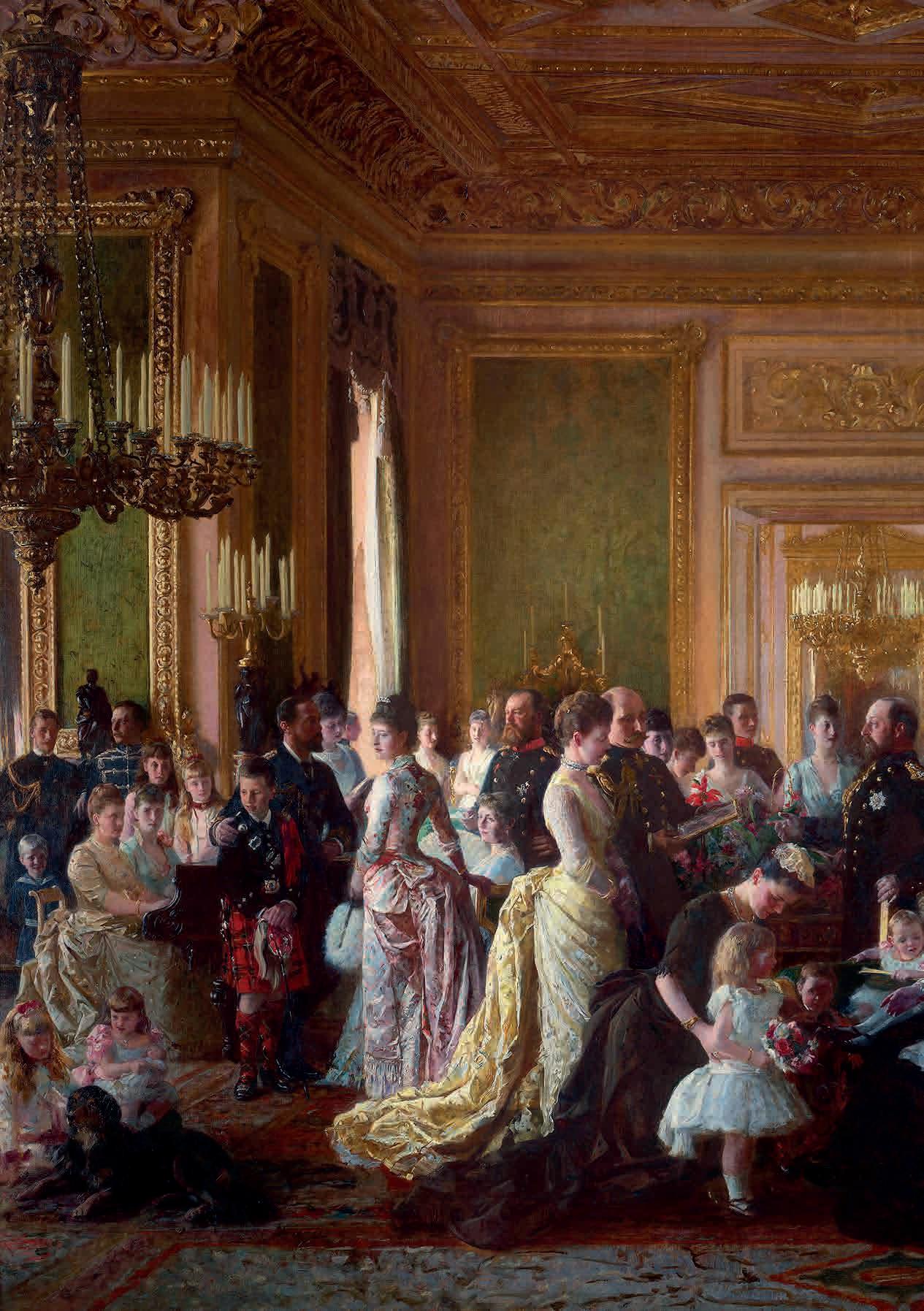
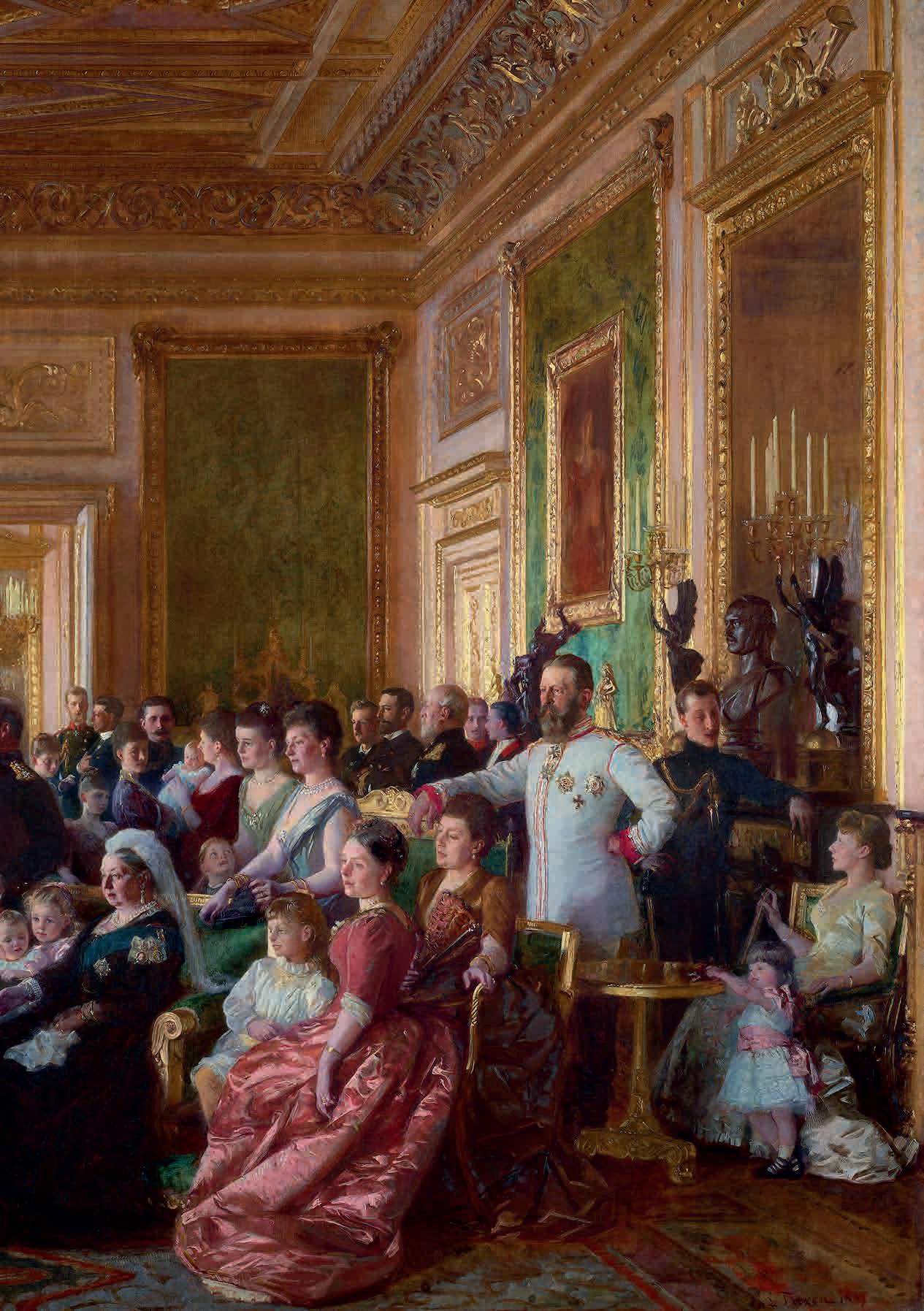
This summer’s exhibition at the King’s Gallery, Buckingham Palace explores the exquisite taste of the Edwardians. Lucinda Gosling reveals the stories amid the glitter and gold
Early in his reign, Edward VII ordered the redecoration of Buckingham Palace. The rooms in the north side were modernised with electricity and bathrooms for occupation by The King and Queen, and the state rooms were painted in red, white and gold, a choice considered a trifle vulgar by some courtiers, who likened the new colour scheme to that of a continental opera house. evertheless, it was a facelift with the necessary punch and bling for a building which, after decades of disuse, was being restored to full glory as the o cial residence of ritish royalty. Paintings from Marlborough ouse were brought over to be hung at the Palace, and The King would spend time watching and directing the rearrangements both there and at Windsor Castle. “I do not know much about art,” he would say, according to Lionel Cust, urveyor of the King’s Pictures, but I know something about arrangement.”
The dwardians – ge of legance’, this year’s e hibition at the King’s allery, uckingham Palace, pays tribute to the taste of King dward VII and Queen le andra, sharing almost 300 pieces of art, ornament, jewellery, books, sculpture and ceramics, about half of which have never been on public display before. For a monarch who in popular imagination is sometimes better known for his connoisseurship of women, racehorses and cigars above art and literature, here is a show that seeks to delve beneath that surface, sharing treasures that reflect the magnificence of the dwardian court, and the artistic and cultural touchstones of the times. The e hibition takes necessary liberties with the period it covers, suggesting that the dwardians’ became a phenomenon several decades before The King’s nine-year reign. Conse uently, there are many objects that pre-date the o cial dwardian era, while the e hibition also e tends beyond it into the reign of eorge V and the outbreak of the First World War.
The majority of dward VII’s life was spent as a king in waiting, during which time, he established his own court at Marlborough House. He surrounded himself with a cosmopolitan mi of friends and ac uaintances the witty and urbane Portuguese ambassador, the Mar uess of overal hunting and shooting members of the aristocracy wealthy ewish families like the othschilds and men such as rnest Cassel, whose financial acumen would prove indispensable to the future King. The so-called Marlborough ouse set’ could not have been more di erent to the fusty, conservatism of Queen Victoria’s court. he considered them fast’ an opinion not without foundation – ertie, as he was known to intimates, was embroiled in several embarrassing scandals linked to gambling disagreements and complicated love a airs among his ac uaintances. trained though the relationship was between Victoria and her son and heir (she refused to involve or educate him in any of her o cial duties as monarch), family, bloodlines and continuity meant much to The Queen, a fact reflected in one of the e hibition’s flagship paintings.
The amily of Queen Victoria in 1887’ by the Danish artist Laurits Tu en, was commissioned by The Queen to mark her olden ubilee. Tu en’s carefully configured scene shows Victoria (and lbert, in the form of a bust on the mantelpiece), surrounded by her children, their spouses, grandchildren and great-grandchildren in the reen Drawing oom at Windsor Castle, an epic work reflecting the e pansive web of marriages that had seen The Queen’s progeny established across the courts of urope. or Tu en, the arrangement of the scene was a diplomatic nightmare, with certain family members refusing to be placed alongside others, but the positioning of The Queen’s son and heir in the
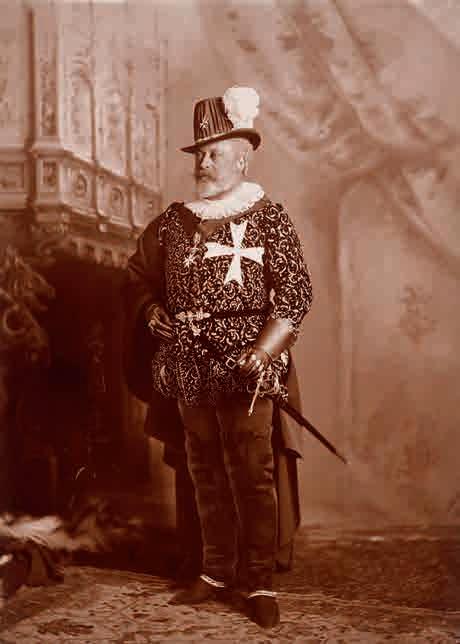
Clockwise from above: The Prince of Wales dressed as a knight of the Order of Malta at the Devonshire House ball in 1897 in a photograph by Lafayette; Laurits Tuxen’s painting of the anointing of Queen Alexandra at the 1902 Coronation; and a John Singer Sargent portrait of the Duchess of Connaught, sister-in-law to King Edward VII
Previous pages: Tuxen’s ‘Family of Queen Victoria in 1887’, painted for the Golden Jubilee
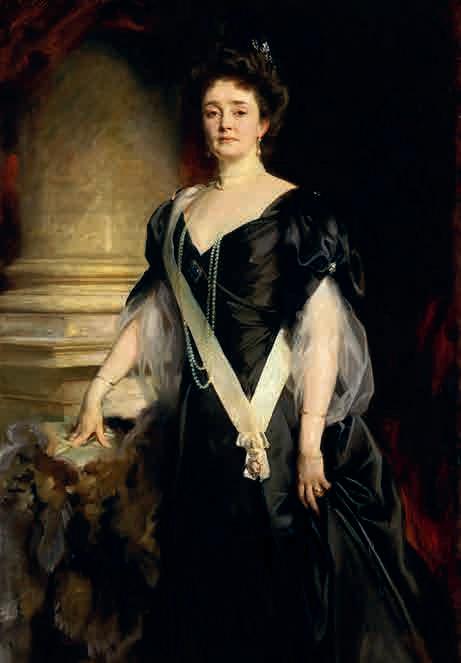
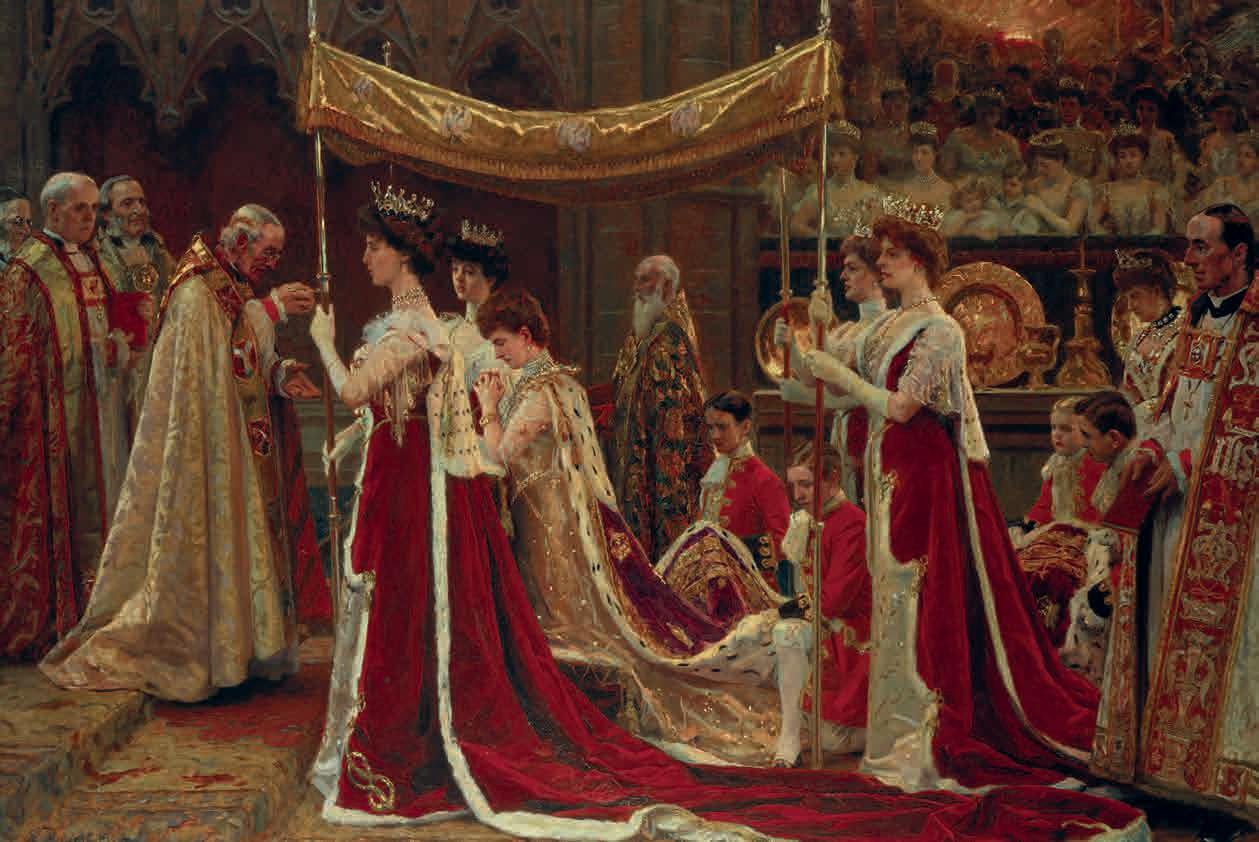
centre of the picture is significant, even if ertie is perhaps outshone by his brother-in-law, the Crown Prince of Prussia, standing to one side in his gleaming white uniform (the tall and imposing rit would be dead of throat cancer within the year, having ruled as mperor for just days).
There are four more Tu en paintings in the e hibition, all worth lingering over, including arden Party at uckingham Palace, 8th une 18 7’ (see p1 ). It depicts the elderly Queen in her Diamond ubilee year, accompanied by the Princess of Wales riding in an open carriage among the smartly dressed throng on the palace’s sun-dappled lawns. ertie showed great interest in the progress of the picture and visited Tu en at Windsor and Copenhagen to discuss the composition. e can be spotted on the left of the picture in conversation with an elderly couple while scanning the canvas it’s also possible to pick out the future eorge V, politician oseph Chamberlain and actor enry Irving among the guests present that day. pectacular social occasions punctuated ertie and li ’s annual schedule, including several costume balls, evidence of which appear in the e hibition. The photographer Lafayette captured ertie looking faintly preposterous as a knight of the rder of Malta at the splendid Devonshire ouse ball in uly 18 7 and a uarter of a century earlier, odefroy Durand’s painting of a fancy dress ball held at Marlborough ouse on uly 187 records for posterity the costumes which were designed by the artist, ir rederick Leighton, which included
a wig of incongruous yellow curls sported by the Prince of Wales as Charles I. friend of ertie, who often o ered advice on art, Leighton was one of the 1 th century’s most in-demand artists, and his work is on display here alongside other fashionable painters of the day, including Lawrence lma-Tadema, ohn inger argent and Philip de L s l , an artist who easily rivalled Tu en when it came to the number of royal portraits churned out of his studio.
amily gatherings and jubilee celebrations aside, ertie’s opinion was that his mother’s 0 years of reclusive widowhood had resulted in an unsatisfactory and lacklustre reign. n ascending the throne, he was determined to restore the traditional pomp of ceremonial functions, and inject some much-needed glamour into the monarchy. or the opening of his first Parliament on 1 ebruary 1 01, the cobwebs were blown o the tate Coach and The King chose to wear the Imperial tate Crown for the occasion (last worn in 1861). I wished it to be in as grand tate as possible, ertie wrote to his elder sister Vicky. Court presentations, previously held as afternoon drawing rooms, became glittering evening a airs. The King had visited the courts of Prussia and ussia regularly during his long tenure as Prince of Wales, where appearance, spectacle and rank was everything. dd to this his e tensive e perience as an avid theatregoer and in short, dward VII knew how to put on a show. e was admirably supported in this by his wife, le andra, who appears on canvas in another
lthough Queen Victoria travelled to Italy and rance during her reign, it was her son who established the tradition of royal tours, travelling e tensively both before and during his reign. is tours helped forge diplomatic alliances and aimed to strengthen bonds between ritain and its colonies. The e hibition features items from their travels on five continents, including an gyptian scarab brooch (right) given to le andra by dward following his tour of the Middle ast in 1863, and le andra’s handwritten notes, watercolours and snapshots (below) from her visit to orway in 18 3.
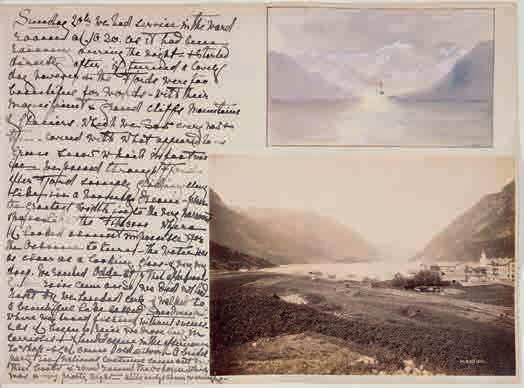
Tu en picture, showing the moment of her anointing by the rchbishop of ork at the 1 0 Coronation. lthough the o cial Coronation picture commission was given to dwin bbey, as a fellow countryman, Tu en was made, Queen le andra’s pecial rtist to the Coronation’ and was given a prime position near the altar, hidden behind the tomb of a orman knight, where he was able to observe proceedings close up. Tu en laboured over this and two other coronation scenes, working on them between 1 0 and 1 0 , writing to his wife, I consider myself on a treadmill, tramping over acres of gold, which is a shame to admit as it’s all so magnificent. e found some of the subjects uncooperative when it came to granting further sittings and was eventually obliged to paint the Duchess of Marlborough from a photograph.
le andra’s increasing deafness made court life trying at times and she preferred to spend most her time at andringham in the company of her daughters and dogs. ut when called upon, she could be counted on for a da ling regal display. ailed by Vogue as the legitimate head of fashion throughout the ritish dominions , she was impeccably dressed by some of the finest nglish and Parisian dressmakers, edfern, Worth and Doeuillet among them. n e uisite 1 08 portrait of The Queen by ran ois lameng, confirms her status as a style icon. le andra, in her si ties, appears elegant and dignified, framed by a swathe of frothy tulle, a Cartier choker around her swan-like neck and her famously trim, wasp waist still very much in evidence. Visitors to the e hibition can also see The Queen’s Dagmar necklace, a wedding gift from her father, the King of Denmark, in 1863, while further scintillation is provided by Queen Mary’s Love Trophy collar necklace by court jewellers, arrard, on display
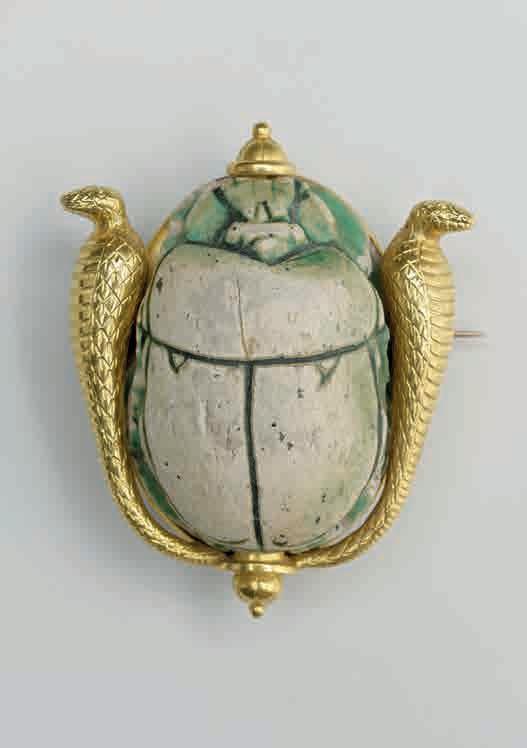
An interest in new artistic movements such as Aestheticism, Art Nouveau and Arts and Crafts is reflected in the collection of dward and le andra, which includes a copy of scar Wilde’s Poems, personally inscribed by the author (below), as well as an early edition of the first book printed by William Morris’s Kelmscott Press. In 1 0 , dward founded the rder of Merit to recognise contributions to cultural and scientific life. ecipients included ir dward lgar and the physicist ir Thomson, and a portrait of each was drawn for The King, a tradition that continues to this day.
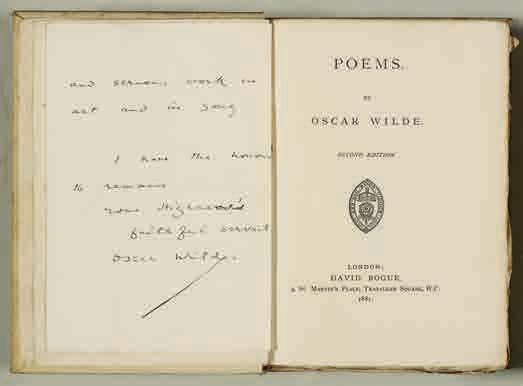
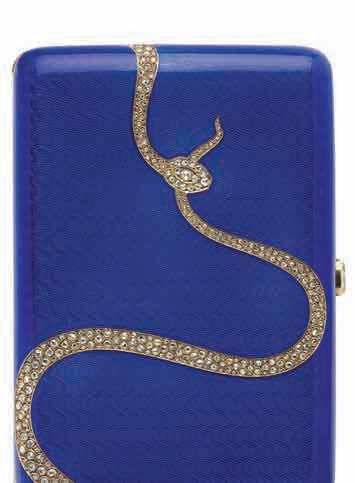

Clockwise from above: A Fabergé cigarette case in blue enamel, decorated with a gemstone-encrusted serpent, given to The King by his mistress Alice Keppel; François Flameng’s 1908 portrait of Queen Alexandra; and the Dagmar necklace, a wedding gift to Alexandra from her father, the King of Denmark
for the first time. Queen Mary may not have had the style cachet of her mother-in-law but nobody could uite carry o jewellery like her, draped with diamonds and pearls, the longer strands spilling over her impressive embonpoint.
There are plenty more baubles and objets d’art to gasp over, including 0 pieces by the great ussian jeweller, Carl aberg . ertie and li were introduced to the work of aberg by li ’s sister Dagmar, the ussian mpress, sparking an enthusiasm which would see the royal collection grow over the years as the ritish, Danish and ussian royal families gifted each other various ornaments and bibelots. This taste for trinkets continued unabated a photograph taken by Mary teen of Queen Mary when Duchess of ork, in ork ouse, proves beyond doubt that ma imalist, fussy interiors were de rigueur. Displays in the e hibition are arranged to evoke the fashionably cluttered interiors of the royal residences at Marlborough ouse and andringham ouse, where decorative objects and family photographs covered every available surface. It is perhaps reductive to label these objects trinkets’ when they include a Cartier crystal pencil case studded with diamonds and rubies, or a aberg cigarette case of blue enamel decorated with a gemstone-encrusted serpent. The latter item holds special significance. It was a gift from lice Keppel, The King’s last mistress, given to him in 1 08 as a token of her devotion. mall and perfectly formed, it’s one of the few objects to hint at human frailties and passions among all the splendour on display, a true symbol perhaps of the dwardian age of elegance.
The dwardians – ge of legance’ is at The King’s allery, uckingham Palace, until 3 ovember 0 rct.uk
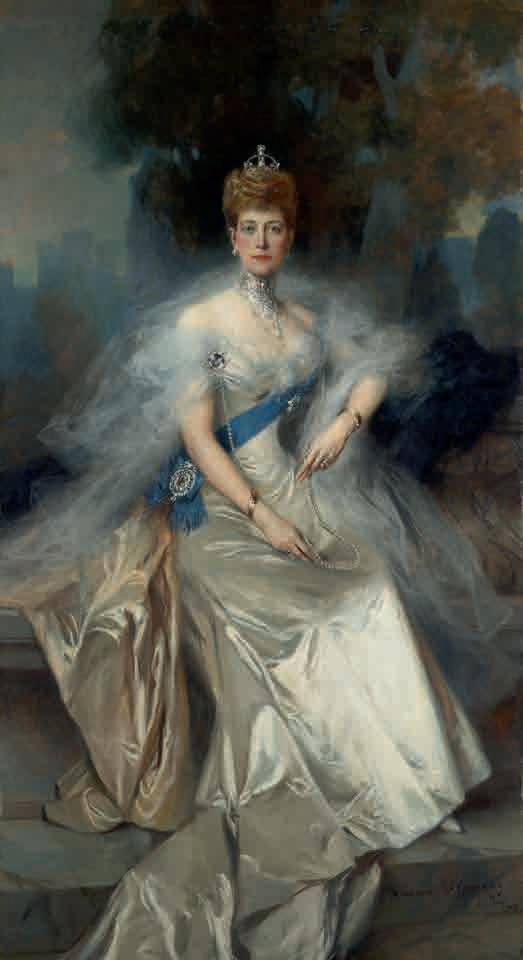

The Queen Elizabeth Scholarship Trust has been instrumental in saving many traditional skills by helping the next generation of craftspeople to hone their talents with masters of the art. By
Charlotte Metcalf

Once annexed to the realm of the quaint and curious, traditional crafts began disappearing at an alarming rate. Yet today craft is recognised as vital to our future culture. This is largely due to Q T (the Queen li abeth cholarship Trust), a charity in its 35th year, founded in 1990 by the Royal Warrant Holders Association on The Queen Mother’s 90th birthday.
QEST provides Scholarships, Emerging Maker Grants and Apprenticeships, allowing craftspeople to take their training to the next level. This might be with ageing masters, the last custodians of traditional skills. Almost 900 Alumni have benefited from this support, to the tune of 7. million. Last year alone, Q T awarded applicants.
HM King Charles III is QEST’s patron and on the 35th anniversary of The King’s Foundation, which teaches practical skills rooted in tradition and nature to more than 15,000 students annually, it was Lily Marsh, a QEST Scholar, who was commissioned to sculpt the first bust of is Majesty.
QEST’s CEO, Deborah Pocock, stresses that the charity doesn’t support craft just to prop up nostalgic traditional skills. “There must be a viable need for that skill,” she says. Looking at the selection of Alumni here, she adds: “What really excites me is the eclectic range of crafts they represent and, while the lumni are at very di erent stages in their careers, they’ve all achieved excellence. Equally important is their vision of their craft, where they’re taking it and the impact they can make on the future of that craft.”
QEST is resolutely focused on the future with its Crafting Tomorrow programme, which targets communities where there might be barriers to taking part in craft, whether from cultural stereotyping or socio-economic ine ualities. It has Craft&Making Clubs, in partnership with the National Saturday Club, and the Know- ow Craft tudio, in partnership with Intoart. It also participates in the National Festival of Making.
The Making the Future campaign, in partnership with Education and Employers, has reached over 6,000 school pupils, showcasing the many paths to a career in craft.
Deborah points to Mary Wing To as an inspirational success story, having placed a rare craft firmly in the commercial arena. he’s brought whip-making into the world of high fashion,” she says. “It’s so encouraging to see how many talented craftspeople are thriving and building stellar careers that they love with our support.”


2023 QEST Penhaligon’s Scholar Bookbinding Somerset
Kate, a Fellow of Designer Bookbinders, specialises in contemporary fine bindings using traditional materials and techni ues. he binds for the ooker Pri e and has books in many private and public collections, including the V&A, the Library of the Human Imagination and the British, Bodleian and Yale University Libraries.
Her Scholarship allowed her to explore continental, particularly French, techniques, like gold tooling and edge gilding, with masters. “With my Scholarship, I hope to push bookbinding into the sphere of fine crafts and then out to wider public in general,” she says, and aims to create a course on the Art of the Book at Bath Spa University.
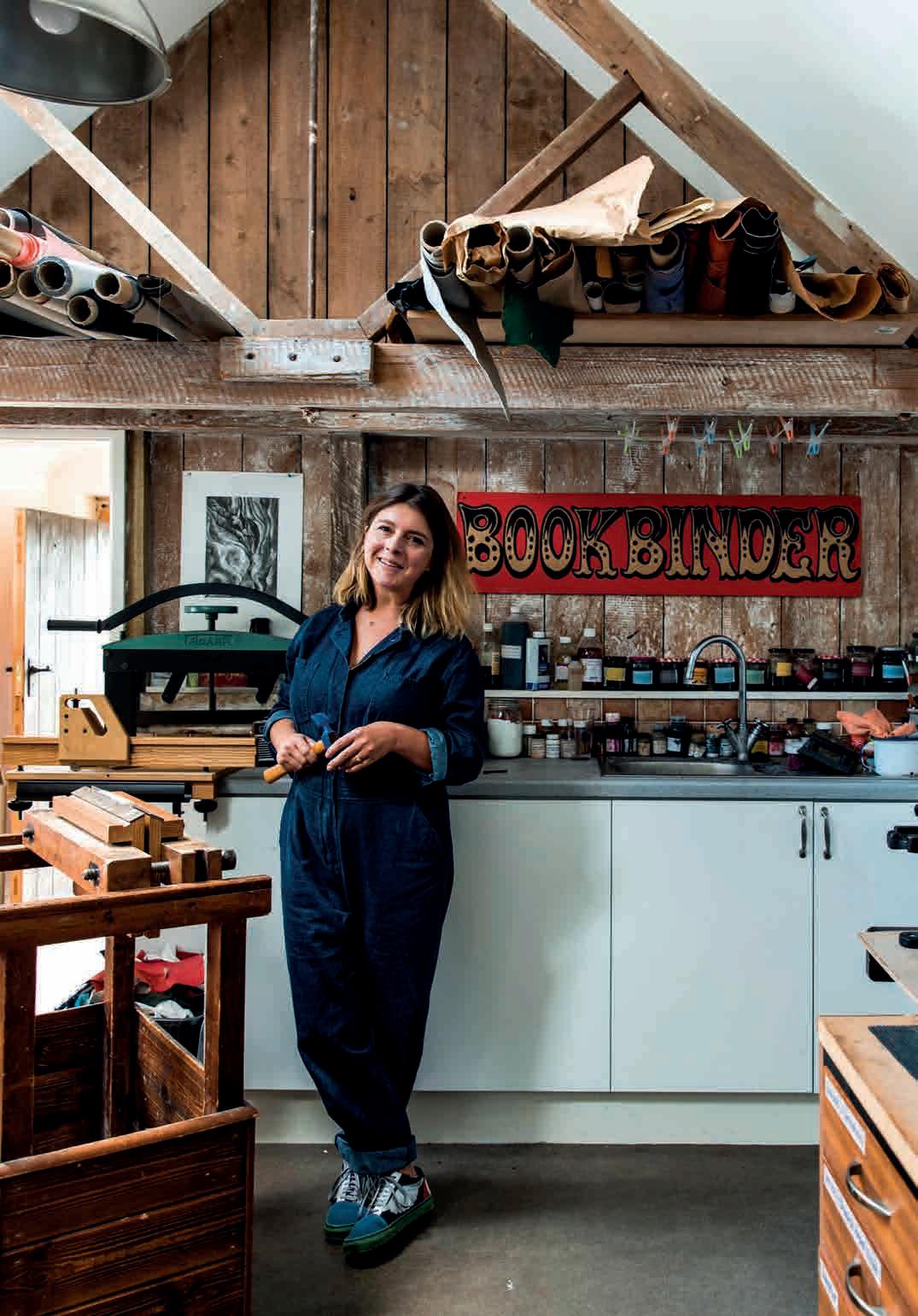
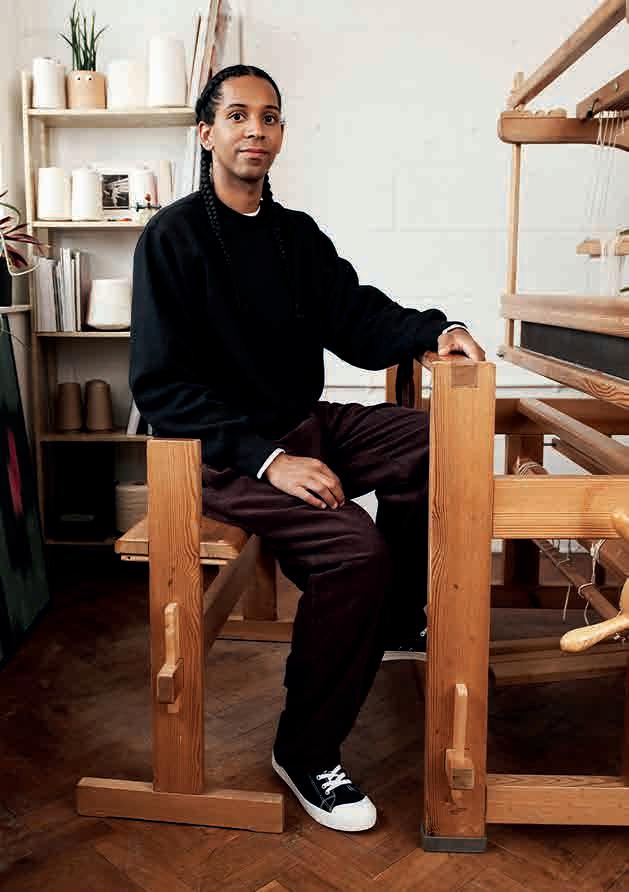
2021 QEST Johnnie Walker Scholar Luthiery Co. Down
I’ve loved making guitars since I was 16 but didn’t see it as a realistic career, so I did an engineering degree alongside a foundation degree, says Kurtis. njoying neither, he took a leap of faith to join Lowden uitars, specialising in inlay, neck-joining and finishing before founding his own business, Pict uitars.
e wanted more but couldn’t pay for more training so his life-changing cholarship allowed him to learn all aspects of guitar-making from master craftsman am Irwin at Lagan Lutherie. is aim is to create a business producing e ceptional environmentally friendly guitars, while collaborating with green charities to raise money for their causes.
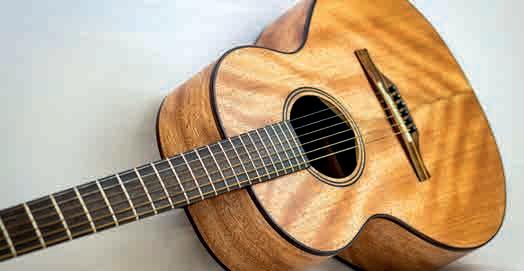
JACOB MONK
2024 QEST Garfield Weston Foundation Scholar Textiles, Weaving London
Jacob trained at Central Saint Martins and the RCA before setting up his studio. is hand-woven work is inspired by ikat, the ancient techni ue of creating patterns by binding and dyeing warp yarns before weaving. acob’s rich colour palette, often drawn from tropical nature, gives his work its distinct contemporary look.
Thanks to his cholarship, acob will travel to Kyoto’s Kawashima Te tile chool to learn the kasuri techni ue and he collaborates with galleries, hotels and interior designers.
e aims to become a lecturer and mentor and has already e panded his business, working with traditional epalese weaving communities to design handmade rugs.
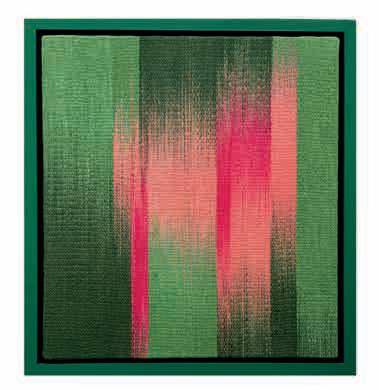


ISEABAL HENDRY
2024 QEST Leathersellers’ Company Emerging Maker
Leather & wood work
Scottish Highlands
Growing up in rural Scotland, Iseabal was inspired by the crafts around her, from basket-weaving to roof-thatching.
After gaining a Textile Design degree from Glasgow School of Art, she specialised in embroidery and leatherwork and launched a collection of intricate handwoven accessories.
Today her practice has evolved to large-scale sculptural works incorporating woven leather and steam-bent wood.
er cholarship means she can train with five master craftsmen across the K to learn willow-weaving, rushweaving, random-weave, cordage, coiling, twining and plaiting. er goal is to combine traditional basket weaving with fine leatherwork to create bold contemporary work and to pass on traditional skills to schoolchildren.

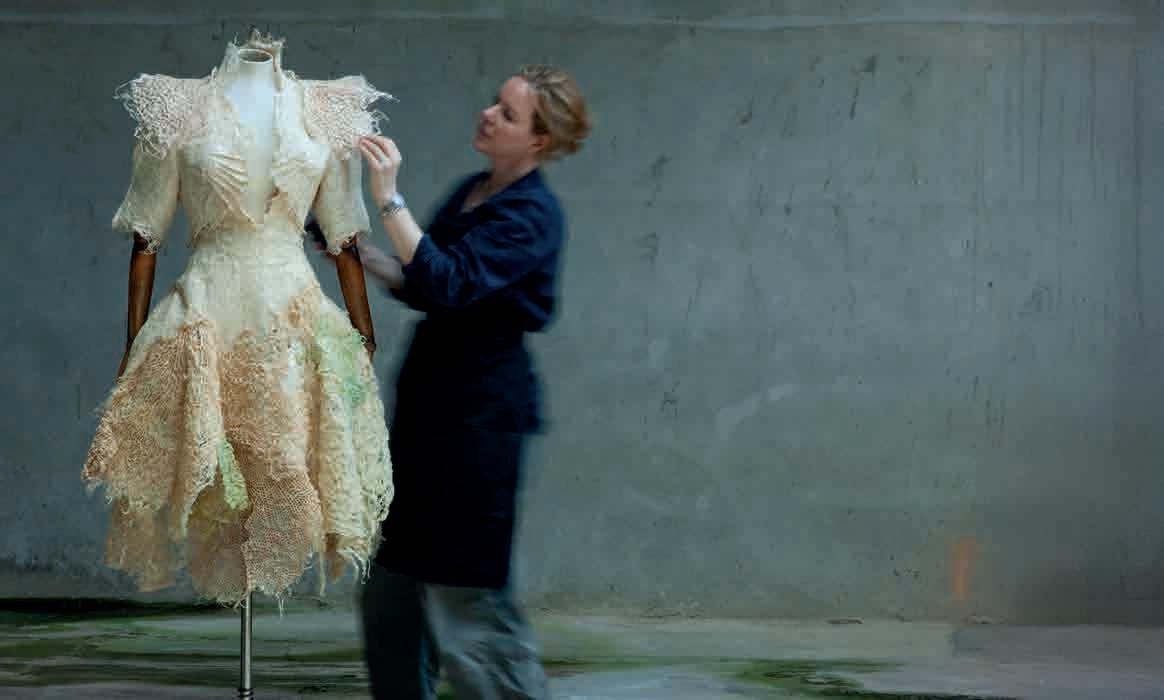
2024 QEST Scholar
Root textiles
London
ena’s innovative practice involves crafting te tiles from roots. s an underwater photographer, she developed a method of cultivating wheatgrass seed in carved beeswa templates. s the shoots grow, the roots bind into a woven structure that can be used in lighting and jewellery.
With her cholarship, ena trained one-to-one with master Filippo Nassetti learning computational design and how to create beeswa casts from 3D-printed techni ues. She aims to use biomimicry to grow new root textiles, e ceeding the limits of 3D printing and moving into an era of more sustainable programmable design and craft.
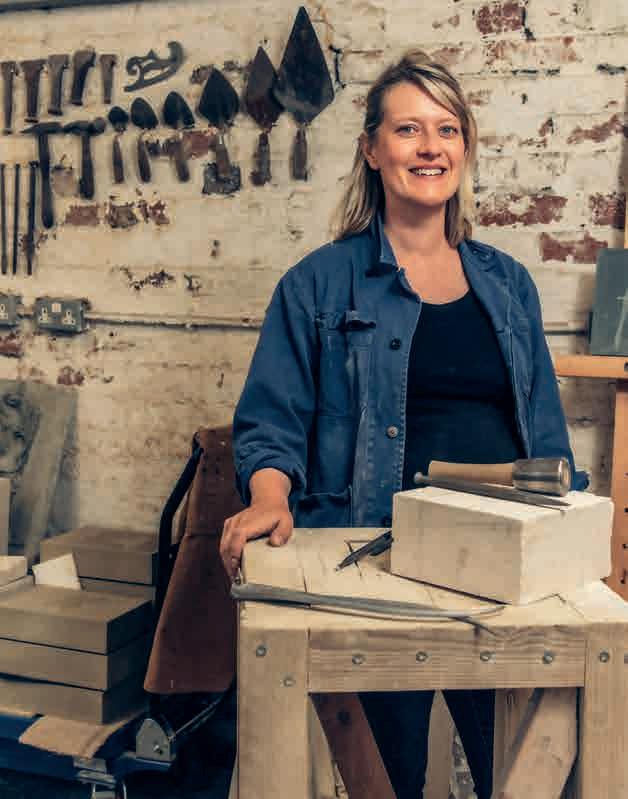
2021 QEST Gosling Foundation Scholar tained lass lass Conservation Cambridgeshire
Marc Chagall’s windows in ll aints Church, Tudeley or Craigie itchison’s chapel window in t Mary the oltons have already inspired us to look more closely at stained glass but Isabelle is transforming perceptions further.
After a BA from Oxford, her Scholarship helped her to complete an M in tained lass Conservation and eritage Management. he did a stint at ork la iers Trust, then went to the Nicolas Barker Studio to hone her skills further. She is now a stained glass conservator at Canterbury Cathedral, while continuing to wow fans with her beautiful contemporary creations that are reimagining how stained glass can be used.

2017 QEST Howdens Scholar
Stonemasonry
South Yorkshire
In 0 Lily was commissioned to sculpt the first o cial portrait bust of His Majesty King Charles III. Other work has been exhibited by The Royal West of England Academy, The Cupola Gallery and The Society of Equestrian Artists.
Lily used her cholarship to study stone-carving alongside drawing and figurative modelling at City uilds of London and travelled to ome to create a drawing portfolio, after being awarded the rinsley ord Travel Pri e.
Training as a stonemason and carver changed my work life, says Lily. “I gain a huge amount of satisfaction from manual work and love the opportunity to use my creative skills in drawing and sculpture.
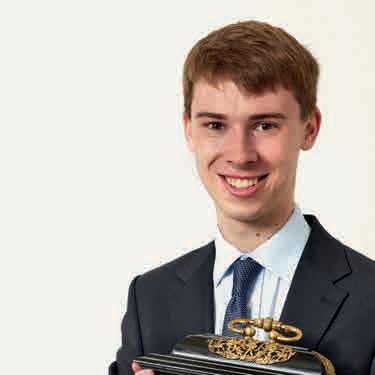
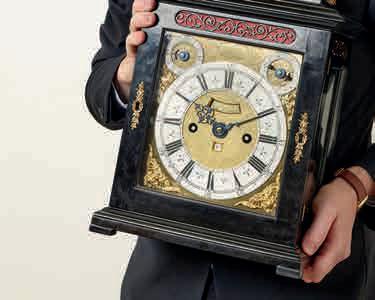

2023 QEST Anthony and Elizabeth Mellows
Charitable Settlement Apprentice
Horology Hampshire

iven his first words were tick-tock , it’s no surprise that Lewis has always been fascinated by clocks. e began a fulltime apprenticeship at The Clock Workshop after school and has since trained to be a horologist and clock conserver restorer. e believes clockmaking was at its enith in the 17th century and says: “If I can learn to make components to the same standards of my forebears I would be very happy.
He now works within the clock department of Bonhams Auction House and sits on the QEST Youth Board, helping to support other young people in their craft journey.
2012 QEST Leathersellers’ Company Scholar Whip-making Surrey
After gaining a distinction in Fashion Design & Technology at London College of ashion, Mary took a two-year saddlery course. er cholarship allowed her to study with whip-maker Dennis Walmsley. When Dennis died, she says, “I did not want his skillset to disappear. When you know how to handle such a distinctive, versatile material, the possibilities are endless”.
Subsequently, she founded Whip in Hand, making bespoke whips, and works for Chanel, overseeing leather goods, shoes and costume jewellery. ecently, perfumer Penhaligon’s invited her to demonstrate whip-making at a launch event. he was awarded a City & Guilds Lion Award trophy for Creative Craftsperson of the Year.
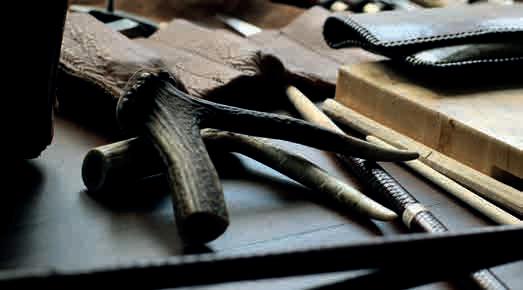

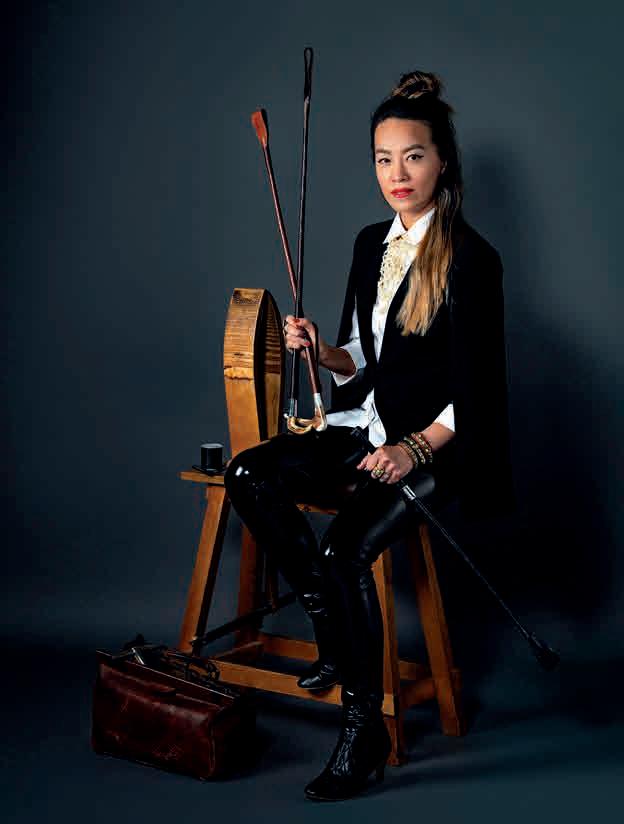
2021 QEST Scholar Silversmithing Gwynedd
Having studied in both Finland and the UK, Rauni launched her silversmithing business in 1 7, creating large-scale silverware, both functional and sculptural. She chaired Contemporary British Silversmiths from 2014 till 2017. Her Scholarship funded her to study with three master craftspeople, from whom she learnt skills in flat hammering, tray sinking, fine machining, lathe work, milling and P K welding in order to work on larger, more ornate pieces. In 2024, she was made an MBE for exceptional craftsmanship and for passing her skills on to future generations.
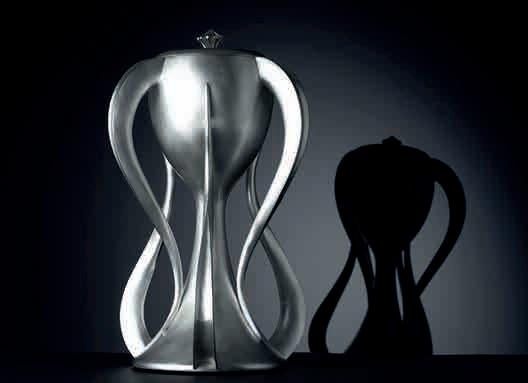

Royal Ascot takes place from Tuesday 17 to Saturday 21 June this year, a racing fixture in Berkshire where the head-turning hats share e ual billing with the thrilling at races. Leading the field in the fashion stakes are the royal racegoers, who have provided us with some cup-winning style moments over the decades. We look back at some of the most memorable
The scot of 1 10 was a muted a air. The sport’s greatest supporter, King Edward VII had died just over a month earlier, and it was decided that while the event would go ahead, racegoers should wear mourning. As fashionable guests arrived in black, the contrast to the fashionable frivolity of other years was stark and the Ascot of 1910 was forever after known as lack scot’.
The Duchess of Kent, formerly Princess Marina of Greece, made the front cover of The Bystander in 1938 with her chic choice of headwear for Ascot. On days one and two, she wore velvet and felt caps softened by ostrich plumes in what the press dubbed the le andrine’ style, referencing the jaunty caps worn by The Princess of Wales (later Queen le andra) in the 1860s and 70s. A millinery tribute from one style icon to another.
As Princess Margaret approached her 21st birthday, she took a new, sophisticated interest in fashion and she began to wear designs by the great French couturier, Christian Dior. Margaret was ravishingly pretty and petite with an hourglass figure – perfect for Dior’s ew Look. he wowed scot in 1 when she appeared in a cream chi on Dior dress, finished with a wide-brimmed cream hat trimmed with black.
It was blushes all round in June 1981 when Robin Russell, gatekeeper to scot’s oyal nclosure, asked Lady Diana Spencer to show her badge. Diana, who did not have one, stood lost for words until a friend rushed to her aide and e plained to ussell she was the fianc e of Prince Charles and imminently to become Princess of Wales. Her Ascot ensemble with its boater-style hat, pearl choker and large collar and bow, has all the requisite elements of romantic, early 1980s style.
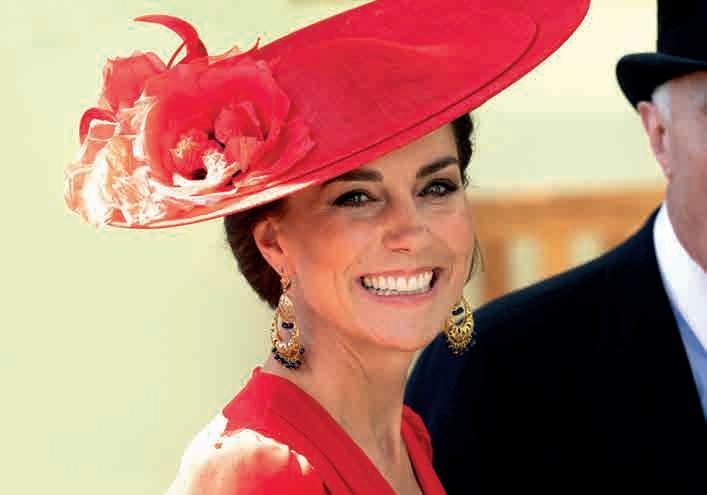
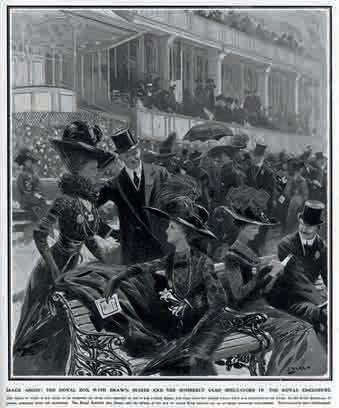

of early 1980s style, just four months after her engagement to Prince Charles; Princess Margaret in Dior for Royal Ascot in 1951; and an illustration by Samuel Begg in The Illustrated
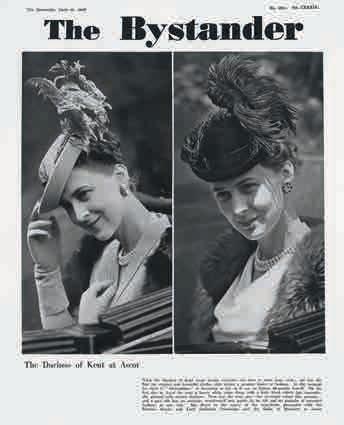
The younger generation of royals pulls out all the stops when it comes to scot dressing. ara Tindall favours the impeccable tailoring of ritish brands such as Anna Mason, Jane Atelier or Laura Green, while The Duchess of dinburgh often opts for the classic glamour of u annah London. Catherine, Princess of Wales, has treated style watchers to some pitch-perfect ensembles in recent years. In 01 , she chose a ladylike lie aab dress in ice-blue and sent the fashion press dotty in 0 with an elegant polka-dot frock by lessandra Rich. In 0 3, her scarlet le ander McQueen dress, teamed with a Philip Treacy hat was a scene-stealing triumph.
His breathtaking hats have made headline news over the years and graced the heads of many members of the Royal Family, including The Queen, The Princess of Wales and Princess Beatrice (who can forget her pret el’ hat worn at the 2011 wedding of The Prince and Princess of Wales ). In December 2024, it was announced that acclaimed Irish-born milliner, Philip Treacy, had been granted a Royal Warrant by Queen Camilla, an honour sealing his preeminence as the doyen of sculptural headwear. s a guest on Desert Island Discs in 2018, Treacy acknowledged the part royal patronage had played in his career, e plaining, if the oyal Family decided not to wear hats, then I wouldn’t be sitting here because hats are part of the culture of ritishness .
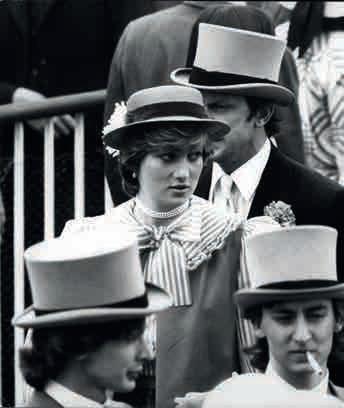

Following a successful run in London, an exhibition celebrating a century of royal photographs comes to Edinburgh this year. Lucinda Gosling puts us in the frame
In 1 06, ames ussell, the Chichester-based photographer who had taken pictures of Queen Victoria, King dward VII and numerous uropean royalties in a career spanning 0 years, reflected on the e perience in The Tatler maga ine. There is really very little ceremony about photographing royalty, especially nglish royalty, he e plained. The appointment must be in the first instance through o cial channels, but once obtained, it ceases to be o cial and I am invariably alone with my sitter.
ussell, despite his prolific output, does not in fact feature in oyal Portraits – Century of Photography’ simply because he predates the show’s focus, which is the past 100 years, from the mid-1 0s to present day. ut his comments, which hint at the uni ue intimacy between photographer and sitter, seem very apt as we ga e upon the portraits on display. The e hibition also shares several e amples of how those o cial channels’ mentioned by ussell operate letters, annotated contact sheets and photographs of shoots being prepared all give a better understanding of the process and the planning and e ort involved in creating the images displayed. commission to photograph royalty is both an honour and a career-changing opportunity. The photographers selected are the ones who combine confidence with courtesy, who can overcome their own nerves, while putting their sitter at ease and have the creative vision to produce a picture that is honest and truthful, appropriate to the occasion and dialled
to deliver just the right level of royal aura. Their pictures must align with the values of one of the world’s most recognisable brands, while also coming up with something original and une pected, a shot that will make their mark in a competitive field. It’s a tough gig. ut not one that any photographer wants to turn down, and perhaps it’s not surprising that on display at the Palace of olyroodhouse this year is a roll call of some of the very best.
Many can be credited with doing more than merely taking a picture. They’ve been responsible for shaping the public perception of royalty, a centuries-old tradition going back to court painters such as olbein and Van Dyck. Cecil eaton, with his keen sense of history and knack for drama, famously captured the magnificence of monarchy in his 1 3 Coronation portrait of Queen li abeth II – but it was his 1 3 portraits of her mother, Queen li abeth, dressed in a series of ravishing, spangled orman artnell gowns reminiscent of those worn by ran Winterhalter’s 1 th-century beauties, that established his reputation as a royal photographer par e cellence. The addition to the show of eaton’s photograph of The Queen Mother in 1 70 is testament to their enduring

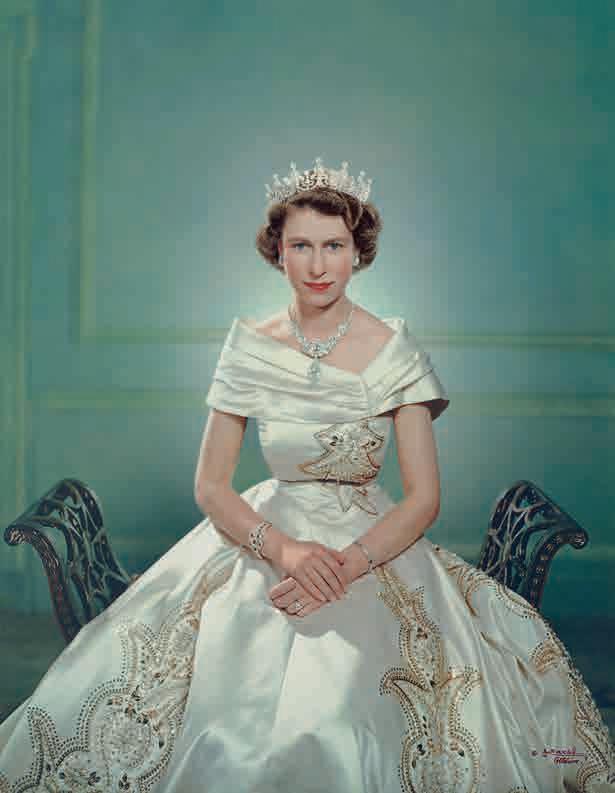
relationship. Another photographer who found favour during the 1 30s is evonde Middleton (known professionally as Madame evonde’) who photographed the Duchess of loucester in her wedding gown in 1 3 the Vive colour process which evonde pioneered reveals the unusual pale blush pink of the Duchess’s artnell gown. lsewhere, ousuf Karsh’s 1 1 picture of Princess li abeth, and Dorothy Wilding’s portrait of her as a new Queen in 1 , dressed in a strapless black gown, usher in a more restrained, mid-century simplicity. Karsh, whose sitters included statesmen and presidents, presented the Princess as youthful and glamorous but with a direct ga e and a dignified, uiet authority. It is almost as if he knows what the near future holds for her. lso featured are photographers who were already close to the oyal amily. Patrick Lichfield was a first cousin once removed to the late Queen. Lord nowdon, who as ntony rmstrong- ones was already a successful photographer before his marriage to Princess Margaret in 1 60, gives us two of the e hibition’s most intimate photographs one of his wife in her beloved Musti ue in 1 6 , and an arresting 1 67 portrait where the Princess turns into the light to stop us in our tracks. In more recent years, the late Queen sat for ankin, ick Knight and David ailey photographers renowned for high fashion images suggesting she was open to new ideas even ndy Warhol’s playful screen print is included here. ut of special interest for this cottish leg of the e hibition, are the royal photographs taken in cotland. 1 66 portrait by odfrey rgent of is Majesty The King when Prince of
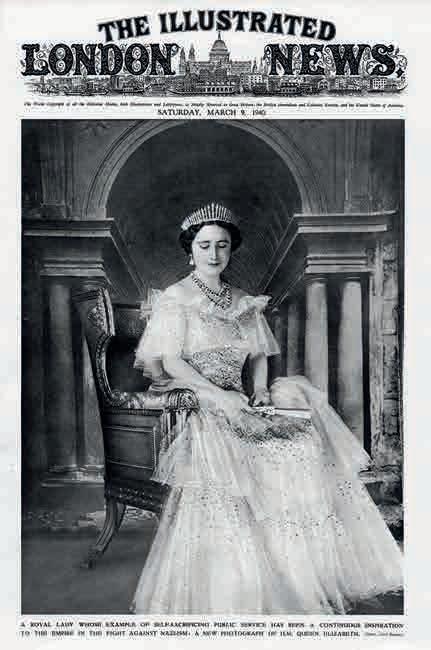
from left: Yousuf Karsh’s photograph of Princess Elizabeth in 1951; The Illustrated London News featured Cecil Beaton’s picture of Queen Elizabeth in 1939; Yevonde captures the Duchess of Gloucester in her wedding gown; and Dorothy Wilding’s 1952 portrait of the newly crowned Queen
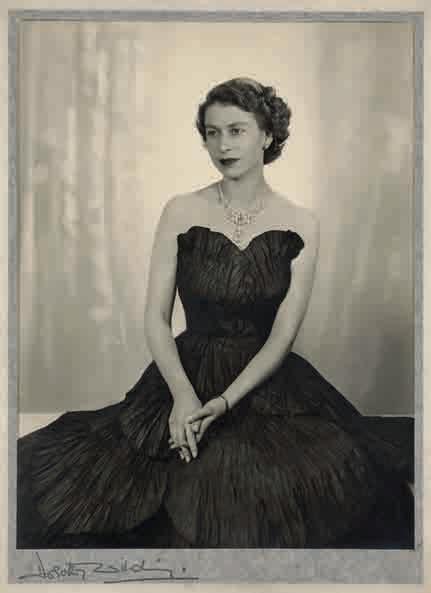
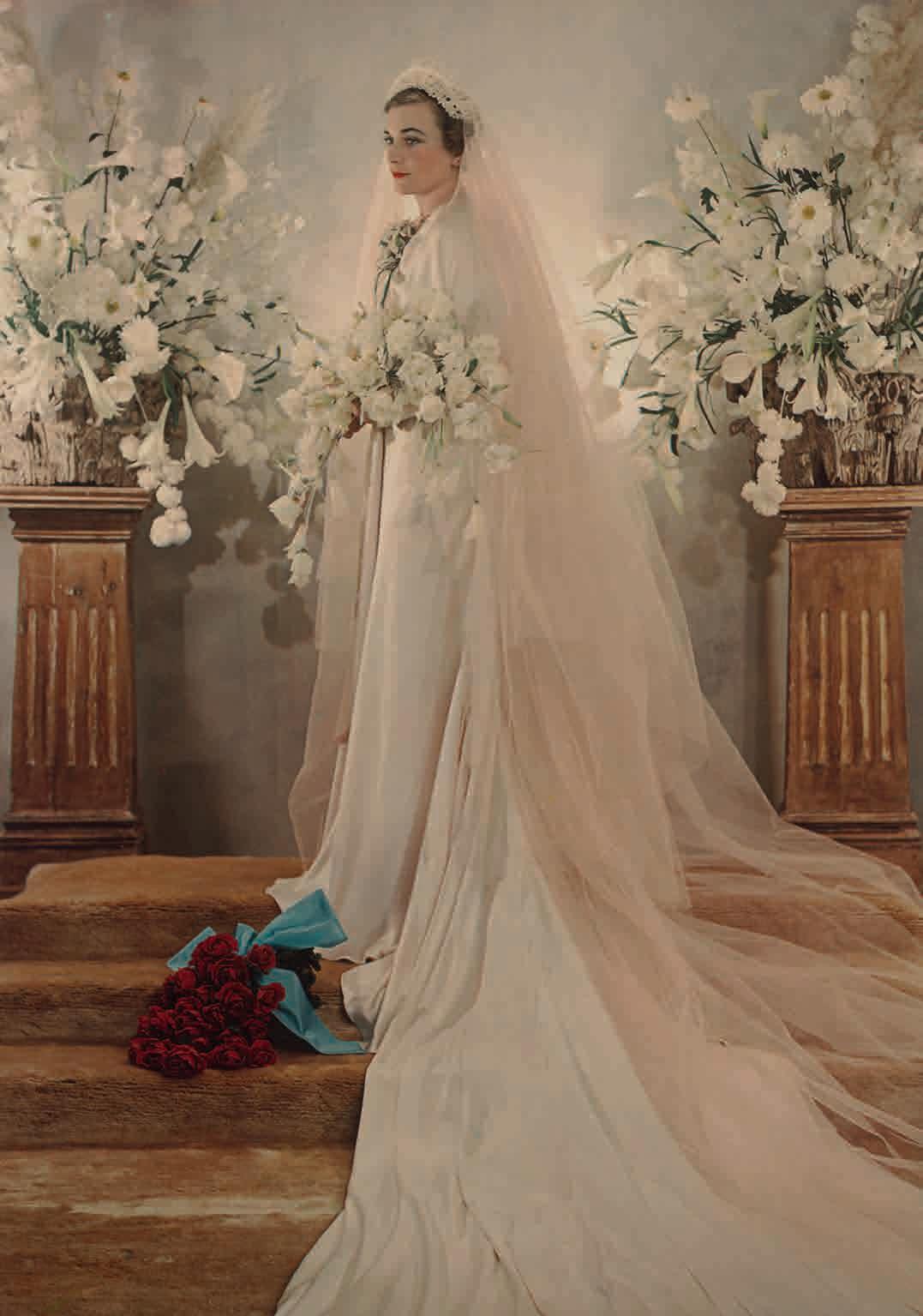

Wales was taken in the library at Balmoral Castle to mark his 18th birthday. Dressed in a tweed jacket and a kilt of Balmoral tartan, he may have been the antithesis of the Swinging Sixties, but in time, The King’s sartorial preference for tradition has earned the respect of style commentators. An undisputed highlight of the show is a photograph taken by Julian Calder of The Queen at Balmoral in 2010. Her Majesty stands among the heather wearing the green velvet mantle and insignia of the Order of the Thistle with the emerald Vladimir tiara on her head. The brooding sky of the Highlands acts as an appropriately dramatic backdrop for the Queen of Scots, Chief of Chiefs. Looking at the picture, one can’t help marvel at the willingness of the 8 -year-old Queen who went along with Calder’s idea. nnie Leibowitz, who photographed The Queen twice, in 2007 and 2016, thought this of her too. Writing in Vogue in 2022 she summarised It was her duty sitting for photographs –part of what she did. And she totally gave herself over to the process, to the photographer, or the artist or the painter, to use their creativity and their imagination.” The late Queen’s relationship with the camera can be distilled down to a necessary and inevitable part of the business of being monarch, but visitors to the King’s Gallery at Holyroodhouse will discover that the results are in fact really rather good.
oyal Portraits – Century of Photographs’ is at the King’s Gallery, Palace of Holyroodhouse, Edinburgh until 7 September 2025; rct.uk
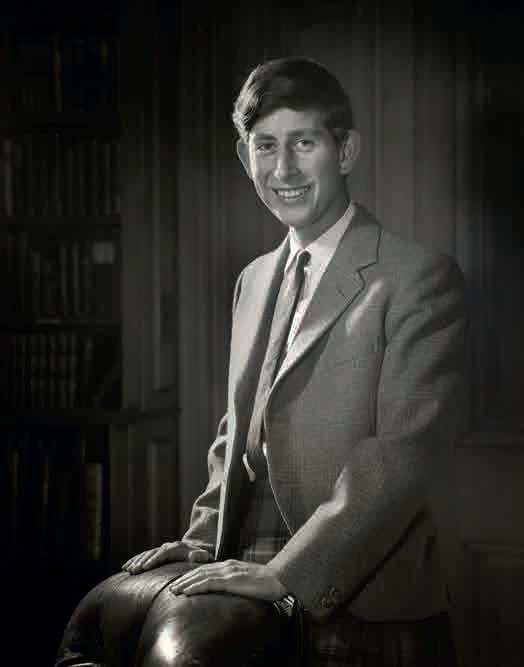
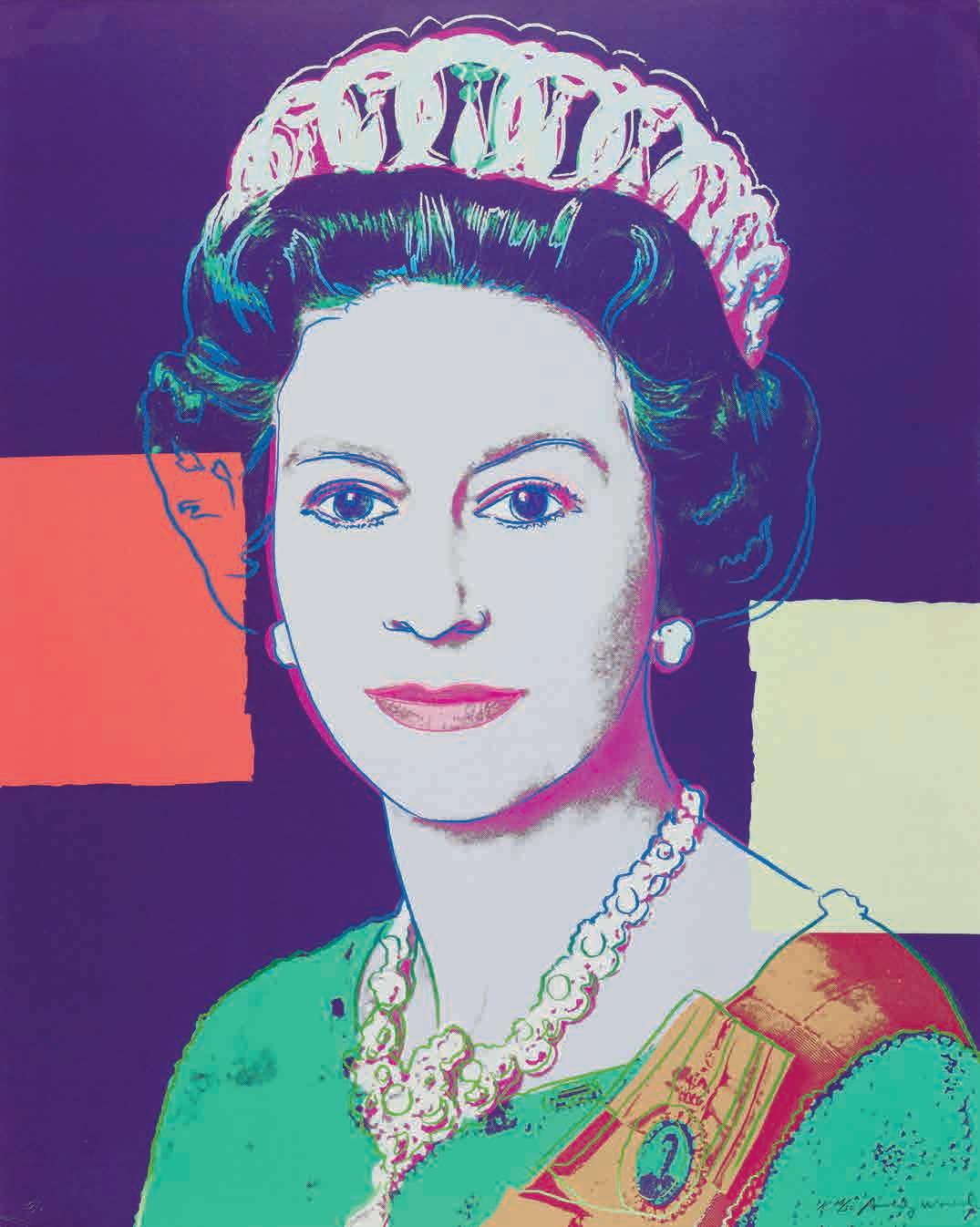
Margrethe II of Denmark and Queen
used official photographs as source material for his playful silkscreen portraits, which create a radical image of monarchy
As Balmoral opens to the public for its second season, Joe Little takes us on a tour of the Royal Family’s Scottish retreat
t’s a drizzly afternoon in rural Aberdeenshire in July 2024 and I’m taking shelter in a small marquee adjacent to the porte-coch re of almoral Castle. nly a week earlier the doors of the oyal amily’s ighland hideaway were thrown open to the public for the first time for a limited number ( 0 people per day, from 1 uly to ugust) of guided tours of the castle’s ground-floor rooms. ntil now, almoral’s interior has only been seen occasionally in photographs. When the tickets went on sale three months earlier – at 100 per person or 1 0 with afternoon tea in the new restaurant –they sold out within hours.
I’m one of only 10 people in the .30pm group, and at the allotted time our guides usher us into the entrance hall, its pine-panelled walls decorated with stags’ heads. statue of Malcolm Canmore, the 11th-century king said to have slain Macbeth, stands in one corner while elsewhere a bust of Queen Victoria surveys all before her. Would she have been amused by the presence of strangers in her much-loved home – her dear paradise in the ighlands nlikely. ut it’s still a cherished home today, as evidenced by the walking sticks, waders and row of fishing rods waiting to be used by members of the oyal amily and their guests on the fast-flowing river behind the castle. I am never so happy as when I am fishing the pools of the Dee, King eorge V once said.
In 18 , after leasing the estate (of now 0,000 acres) for four years, Prince lbert bought it for Queen Victoria for 3 ,000 and they set about building a cots baronial castle of local Invergelder granite, the foundation stone of which is near the entrance. It was completed in 18 6, just five years before The Prince Consort’s untimely death. stone on the front lawn marks the position of the front door of the original castle that proved too small for a brood of nine children. ur introduction and scene-setting complete, and with plastic covers on our shoes, we move forward into the long red corridor, yet it seems as if we are stepping back to the mid-1 th century as we enter the inner sanctum. More stags’ heads and Landseer paintings aplenty. life-si e statue of a kilted Prince Consort stands on a plinth in the stairwell in widowhood Victoria took great comfort when a member of sta rotated the statue as she ascended the sweeping staircase as if her husband really was watching. The flock V I (Victoria egina et Imperatri ) wallpaper, commissioned by the monarch from William Morris in the year of her olden


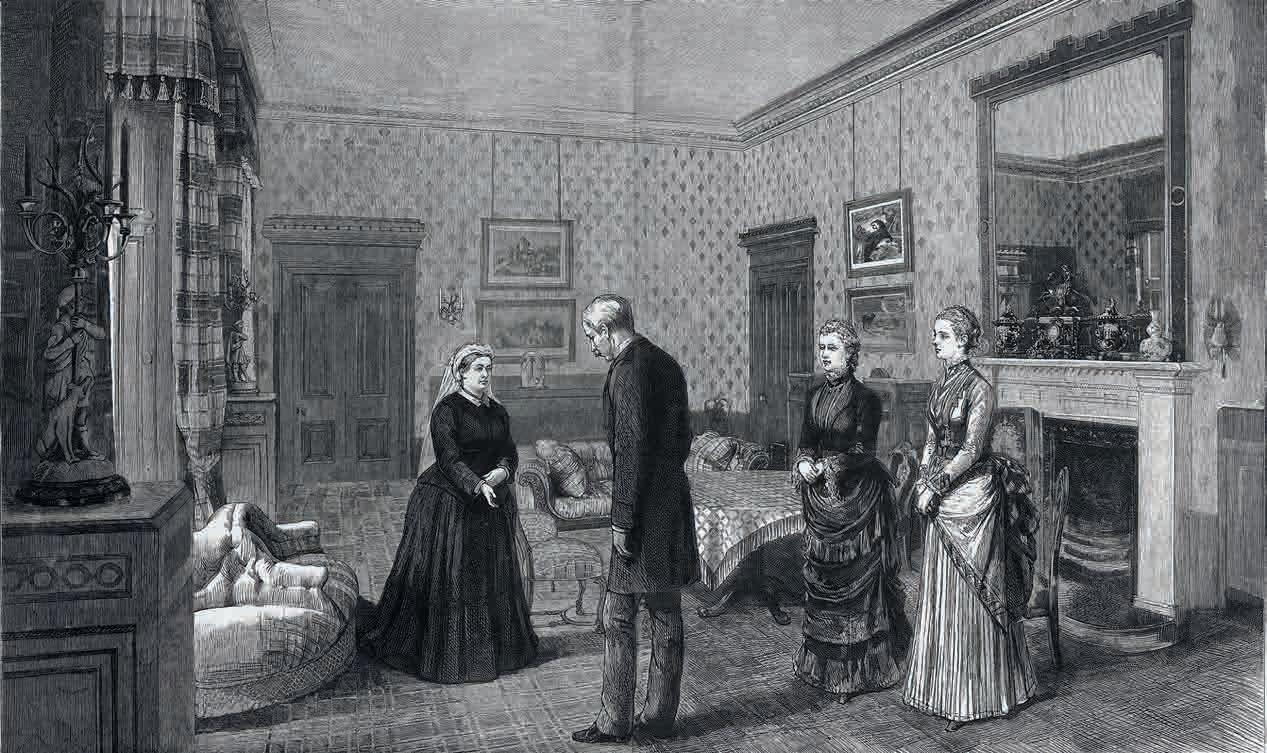
Jubilee, 1887, is in remarkable condition, no doubt because the castle is unoccupied for 10 months of each year and there is still a supply of spare rolls. Picnic rugs await collection nearby.
At the end of the corridor, large portraits of Victoria and Albert dominate the main dining room, with its extendable mahogany table surrounded by sturdy chairs covered in polished red leather and large windows adorned by striking Royal Stewart tartan curtains. Prime ministers, presidents and distinguished visitors – among them Tsar icholas II of ussia and his wife Alexandra, a granddaughter of Queen Victoria – have been entertained here in great style in the almost 17 years it has been in use.
We approach the family dining room – once the billiard room but now used for breakfast and afternoon tea – through the page’s lobby and interconnecting doors. Though less grand and more functional as a room, display cases provide tantalising glimpses of life at the castle in earlier reigns. Edward VII, not a huge fan of rainy Scotland, inherited the property when his mother died in 1901 and since then it has passed from monarch to monarch. King George VI, however, had to purchase it (and andringham in orfolk) from his brother Edward VIII when he abdicated in 1936.
The drawing room is undoubtedly the room with which we are most familiar. It was here that Queen Elizabeth II, standing in front of a roaring fire, was photographed two days before her death in September 2022 receiving Liz Truss, the 1 th ritish prime minister of her 70-year reign.
Since then His Majesty The King has made a number of cosmetic changes to this (and other) rooms lamps and furniture have been repositioned and pictures rehung, while new soft furnishings – some clashing – and a unting tewart tartan carpet hark back to Queen Victoria’s day.
ur hour-long tour comes to an end in the library, which once served as Queen Victoria’s breakfast and lunch room. The King is said to use it as a study, although he is known to

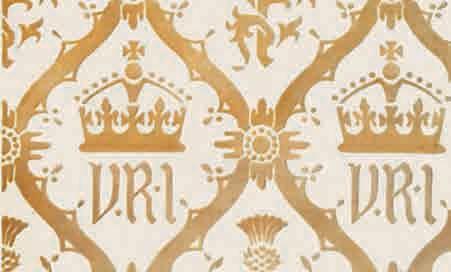


This summer, the exhibition in the ballroom at Balmoral will showcase the history of the castle’s extensive gardens and provide an insight into Charles III’s vision for the future.
Early in his reign, The King instigated a number of changes, personally planting saplings and shrubs in new borders on the main lawn and commissioning a thistle maze within the South Gardens which, though it will take several years to mature, is nevertheless recognisable as such. t the centre of the ma e sits a doocot – cots for dovecot – with a cedar roof and thistle finial.
Queen Mary’s arden, devised in 1 3-1 and restructured by her great-grandson, now benefits from an alpine terrace, newly monogrammed gates and a beech hedge to provide structure to the area.
The kitchen gardens supply a mixture of vegetables, herbs, fruit and cut flowers for the oyal amily while in residence and for the restaurant. Produce is sold to visitors and the local community throughout the season.
The Balmoral Knot Garden, designed by a team from the King’s oundation chool of Traditional rts, is taking shape on the ballroom lawn. With an intricate interlace of Celtic art, when mature it is intended to pay homage to the ancient heritage of the British Isles.
favour the more intimate feel of Birkhall, the former residence of Queen Elizabeth The Queen Mother, also on the estate. His late mother’s desk, with a view of the sunken garden and across to the Cairngorms, was near the window of her sitting room on the first floor, which, not surprisingly, remains out of bounds to non-royal visitors.
An exclusive tour ticket is not required to visit the ballroom at Balmoral, venue for the annual ghillies’ ball and, poignantly, where The Queen’s co n rested for three days to allow family and estate sta to pay their respects before er Majesty left the castle for the final time.
Queen Elizabeth II’s love of the Balmoral estate was well documented. “You can go out for miles and never see anybody; there are endless possibilities,” she once observed.
part from her summer sojourn, The Queen would also spend time on the estate during the tourist season, staying at Craigowan Lodge, a relatively small house by royal standards, with seven bedrooms. Tucked away on higher ground looking over the golf course and beyond to Crathie Kirk, it remains popular with members of the oyal amily as overflow accommodation when the castle, a mile or so distant, is full.
er Majesty knew almoral Castle from childhood, when she would pay summer visits to her grandparents, King George V and Queen Mary. Elizabeth and her younger sister Margaret “looked forward to it all year round”, their governess Marion Crawford wrote in her book, The Little Princesses. “It tended to be the chief landmark in their calendar. At night,

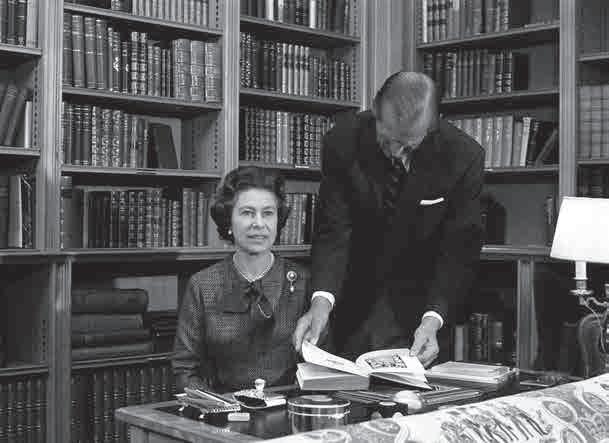
after dinner, seven pipers in their kilts and sporrans would walk playing through the hall and the dining room… Lilibet and Margaret loved this nightly ceremony and were usually waiting to peep over the stairs at the seven stalwart pipers going by.”
Following their wedding in November 1947, Princess Elizabeth and The Duke of Edinburgh spent part of their honeymoon at Birkhall. “It’s heaven up here,” she wrote to her mother. “Philip is reading full length on the sofa. Susan the corgi is stretched out before the fire and I am busy writing this in one of the armchairs near the fire (you see how important the fire is ).
“I think Granny is the most happy there,” Princess Eugenie said in a documentary to mark The Queen’s 90th birthday in 2016. “I think she really, really loves the Highlands. Walks, picnics, dogs – a lot of dogs, there’s always dogs – and people coming in and out all the time.
“It’s a lovely base for Granny and Grandpa, for us to come and see them up there, where you just have room to breathe and run.”
“I’ve been coming to Scotland since I was a small boy,” Prince William recalled. “As I grew up, I saw how my grandmother relishes every minute she spends here. And my father is never happier than when walking among the hills.”
Queen Camilla confirmed this more recently, writing about her husband “striding, like a mountain goat, up impossibly steep ighland hills this is where he finds true peace .
Affectionate, loyal and incapable of indiscretion, it’s easy to see why dogs have been the Royal Family’s faithful friends over the years. Lucinda Gosling paw-ses to remember some canine companions of yesteryear
In April 2024, it was announced that His Majesty The King had become patron of the Royal Kennel Club, stepping into a role which had been held by his mother, the late Queen, for 70 years, and in fact, every monarch back to his great-great grandfather, King dward VII, who became the club’s first patron in 1873 when he was Prince of Wales. Her Majesty The Queen, meanwhile, has been the royal patron of the animal rehoming centre, Battersea, since 2017, and in 2011 adopted a Jack Russell terrier, Beth, followed by another, luebell, in 01 . t the Coronation in 0 3, the press and public were charmed to learn that likenesses of Beth and Bluebell had been embroidered along the hem of The Queen’s ruce ldfield gown, a small, playful detail but one with a clear message about the integral role dogs play in the Royal Family’s life. As The Queen told an interviewer on BBC Radio 5 Live, “The nice thing about dogs is you can sit them down, you could have a nice long conversation, you could be cross, you could be sad, and they just sit looking at you wagging their tail.” For anyone in the spotlight, it must be comforting to know that a dog o ers unconditional love and loyalty. Dogs only know that their owner is special to them. If that owner also happens to be royal, they remain blissfully unaware. When Beth sadly died in November last year, it made headline news. She and Bluebell had become quite the celebrities, posing with their owners and often accompanying The Queen on both o cial and informal engagements. nd when the Duchess of Cornwall (as she then was) guest-edited Country Life in July 2022, the pair appeared on the magazine’s
famous irls in Pearls’ page, each proudly sporting a pearl necklace. There had been speculation over whether The King and Queen would decide to get another companion for Bluebell and, if they did, whether it would be another terrier; The King also had a much-loved ack ussell – Tigga – who died in 00 at the grand old age of 18. Then, during a visit to Canterbury in February this year, The Queen revealed that she did in fact have a new eight-week-old puppy, rescued from Battersea. When asked what kind of dog it was, The Queen replied, “You may well ask, a bit of everything… It’s called Moley. It looks just like a mole.”
Moley, it seems, is not the only new palace pooch, as The King has also recently been given a new puppy, nu , a Lagotto omagnolo, a rare Italian breed which dog-watchers will remember won est in how at Crufts in 0 3. The King is said to besotted’ with the new arrival, as Moley and nu become the latest in a very long line of royal dogs.
long with 36 per cent of the K population, the oyal Family are enthusiastic dog owners. Orla, who belongs to The Prince and Princess of Wales, sometimes appears in family photographs, as did their former pet, Lupo. Both spaniels were bred and given to the couple by Catherine’s brother, James Middleton, who has been very open about how his dogs have helped him overcome mental health barriers.
Princess nne favours bull terriers, while the orks have a clutch of orfolk terriers (and also look after the late Queen’s last two corgis, Muick and andy). oing back through the generations, the Duke and Duchess of loucester (parents of
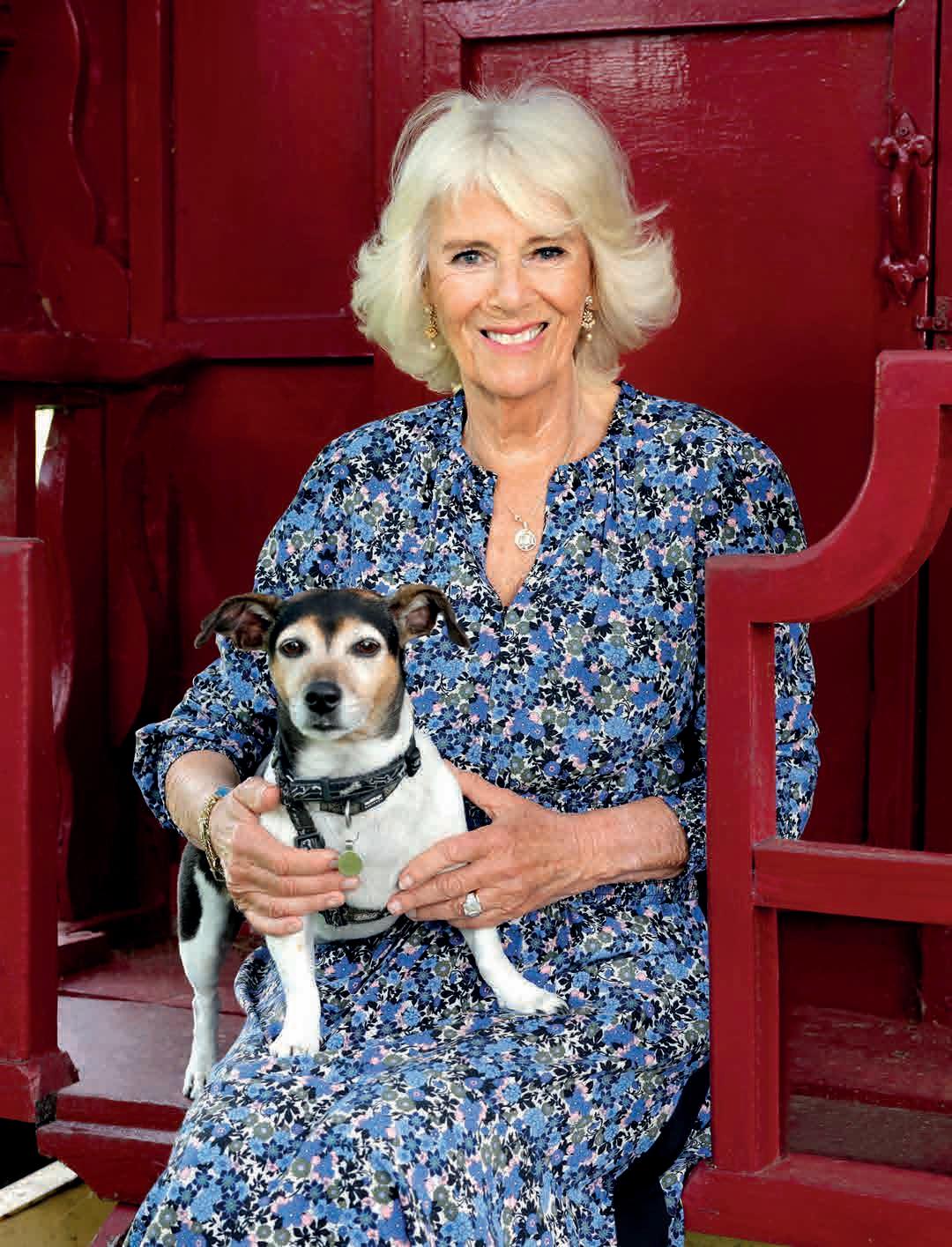
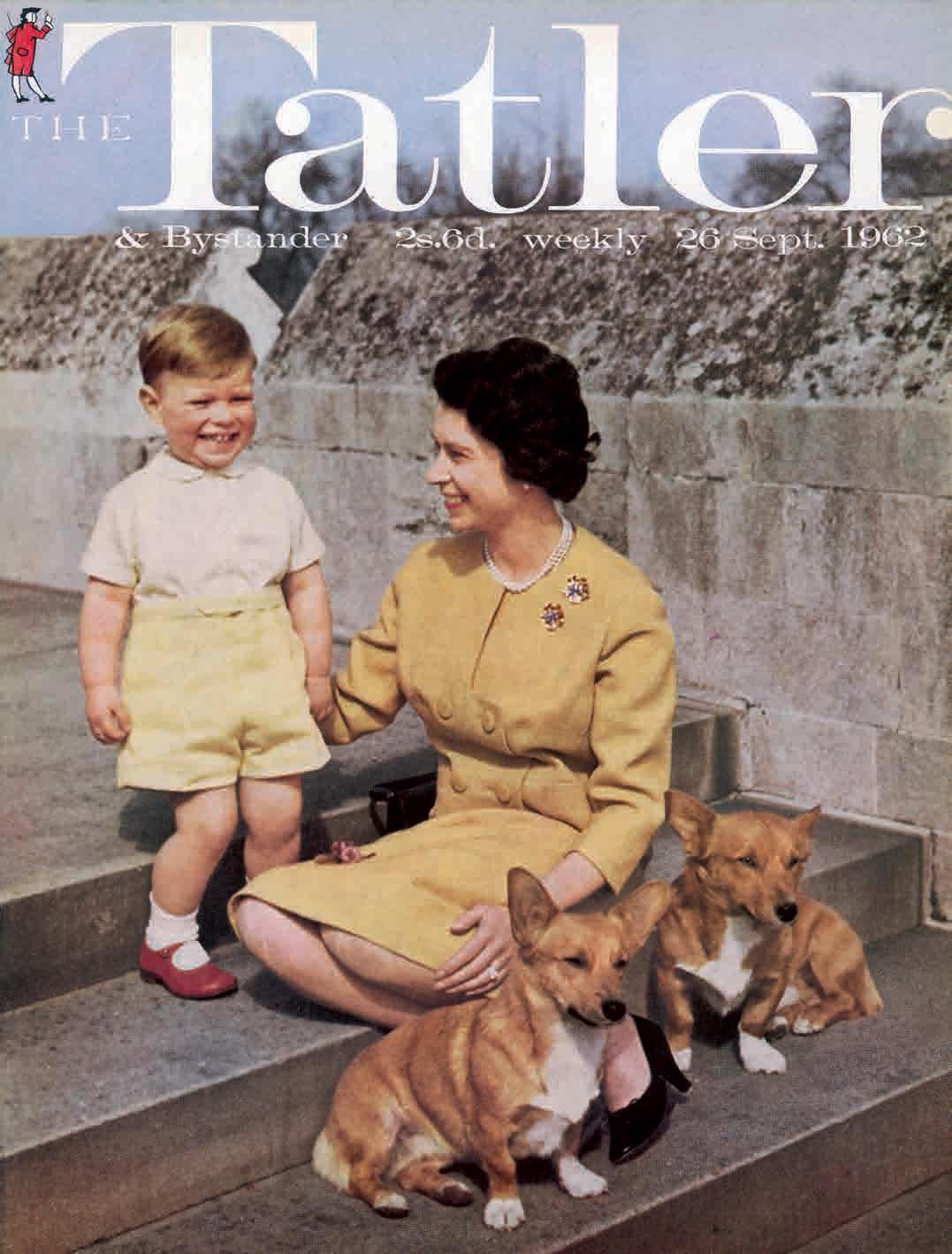
the current Duke) had ustralian and cottish terriers Prince eorge, later Duke of Kent, had a reat Dane, an alsatian and a chow, while Princess Margaret was fond of ealyham terriers. t one point she had two called Pippin and ohnny, although ohnny rather disloyally transferred his a ections to The Queen Mother when Princess Margaret was convalescing after a bout of measles.
nd, of course, there is the breed which will be forever associated with ritish royalty the Pembrokeshire corgi. These endearing little dogs became a Windsor family favourite in 1 33 when Princess li abeth and Princess Margaret played with the children of Viscount Weymouth, who had a Welsh corgi puppy. fter much chatter from their daughters about their sweet new playmate, the Duke and Duchess of ork en uired about buying a dog from the same breeder of the Weymouths’ puppy, Thelma ray of the o avel Kennels at Pirbright. They chose o avel olden agle, known by his pet name of Dookie (given to him by the kennel maids at o avel when they learnt the identity of the pup’s owner). Dookie was, according to his namesake, the Duke of ork, so intelligent, and so marvellously patient with the children , but corgis, bred as herding dogs, are genetically predisposed to nip occasionally at visitors’ heels, and Dookie often disgraced himself with bad behaviour. e is the black sheep of our family, said the Duke, and, like most black sheep, he is probably the favourite, having earned his position most unjustly.
The orks had moved to oyal Lodge on the Windsor estate in 1 31, a substantial property with plenty of room for dogs. oon, Dookie was joined by another corgi from o avel, ane, together with Choo-Choo the Tibetan lion dog and three yellow labradors, Mimsy, ti y and crummy. Dogs completed the ork family’s image of domestic contentment, captured in photographs by Lisa heridan and Marcus dams, and circulated widely in TheIllustrated London News and other maga ines. Queen li abeth II owned around 30 corgis and dorgis’ during her lifetime – the latter the result of a liaison between Princess Margaret’s dachshund Pipkin and one of The Queen’s corgis, Tiny. Most are descended from usan, who was an 18th birthday gift to Princess li abeth from her parents in 1 . usan, who lived until 1 , accompanied her mistress on her honeymoon in 1 7, and as matriarch of the royal corgi dynasty, was the grandmother of Whisky and herry, who in turn became childhood pets of Prince Charles and Princess nne. Whenever The Queen was away on tours or o cial engagements, the corgis were usually cared for by ancy enwick, wife of the gamekeeper at Windsor, but it is clear er Majesty very much liked to have them around her. During one summer at almoral, in 1 81, no fewer than 13 corgis went along too.
This, however, is modest compared to her great-great grandmother, Queen Victoria, who owned a staggering number of dogs. fter her death in 1 01, there were no fewer than 88 in the royal kennels of all types. Most of them were housed in well-appointed lu ury in kennels at Windsor, under the supervision of manager ugh rown and his assistant Mr ill. The occupants enjoyed individual compartments warmed by hot water pipes and could meet their royal owner as she walked up and down a covered walkway known as the Queen’s Verandah’ during regular inspections. er favourite dogs however, were kept close by. During the 18 0s, The Queen favoured kye terriers and dachshunds, including two little sausage dogs called D ckel and Waldman ( Waldie’). D ckel, who had been a gift from her Coburg relatives, was an e pert

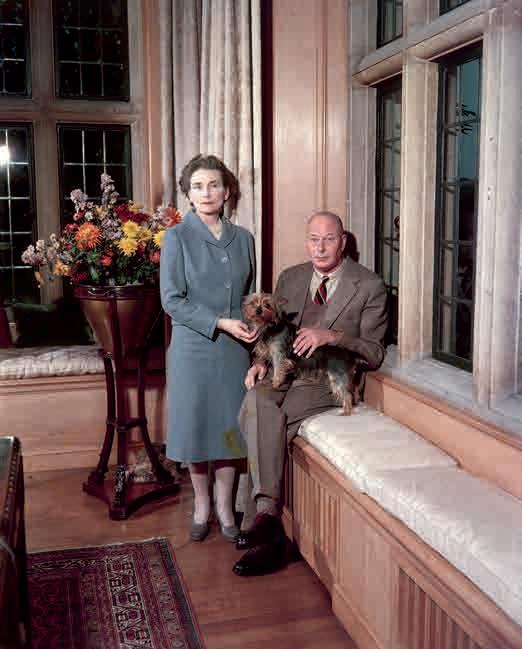
ratter, and in November 1849, Victoria noted in her journal that he had caught a huge rat in the Queen’s Room at Windsor. Confusingly, successive pets were often given the same name, but with a number to di erentiate it from its predecessors, in the same way monarchs take a regnal number. By the 1860s, The Queen’s deep love of the Scottish ighlands was reflected in her taste for collie dogs, including Snowball, an unusual, shaggy white example of the breed, and ‘dear, good Sharp’ who she frequently mentioned in her journals, and who was photographed with The Queen in 1866 in a picture widely circulated as a carte de visite. In fact, Queen Victoria’s pride in her dogs is reflected in the number of photographs documenting them, the first taken by William ambridge in 18 . Animal artists too, including Sir Edwin Landseer, Friedrich Keyl and Charles Burton Barber, were all kept busy with commissions to immortalise her favourite pets. Sharp appears in Landseer’s 1867 picture, ‘Queen Victoria at Osborne’ which depicts The Queen on her pony, Flora, accompanied by her ghillie, John Brown. Prince, a Skye terrier, sits up and begs in the picture, while in the background, The Queen’s daughters, Princess Louise and Princess Helena, sit with another terrier. Dogs, it seems, were never very far from the royal presence. Marco, a pomeranian, stands impudently on The Queen’s breakfast table at Windsor in an 1893 painting by Charles Burton Barber. The Queen had first brought four of these little pit -like dogs, including Marco, back from a trip to Italy in 1888. The breed soon became a favourite, triggering a cra e for pomeranians during the late 1 th century. Dogs were one subject on which Queen Victoria could find common ground with her o spring, in particular her son and heir, The Prince of Wales, who wrote to his mother on the subject in 1869 suggesting, “except a wife and children, no man could have a greater companion than a dog”. Prince Leopold, Duke of Albany, even adopted a perky Jack Russell called Skippy from Battersea Dogs’ ome, a century-and-a-half before The Duchess of Cornwall did the same. Two years after becoming King, Edward VII closed his mother’s kennels at Windsor and moved all dogs to Sandringham in Norfolk, a decision which greatly pleased Queen Alexandra, who delighted in donning an apron to feed the dogs herself, often dragging along lessenthusiastic visitors. Alexandra loved all dogs, but particularly bassett hounds, bor ois, samoyeds, pekinese and tiny Japanese chins; the latter, a toy breed, proving loyal companions and lapdogs. When Togo, The Queen’s beloved Japanese chin died in 1914, Alexandra was bereft. She had the little dog laid on a cushion in her bedroom and for several days refused to allow his body to be moved until the smell became too much. The inscription on his tomb at Marlborough House reads: “My darling little Togo. Given to me by the Empress of Japan. My constant companion for 12 years. The Joy and Pleasure of my Life. Died May th 1 1 .
The King meanwhile, whose social life often revolved around shooting parties, introduced the
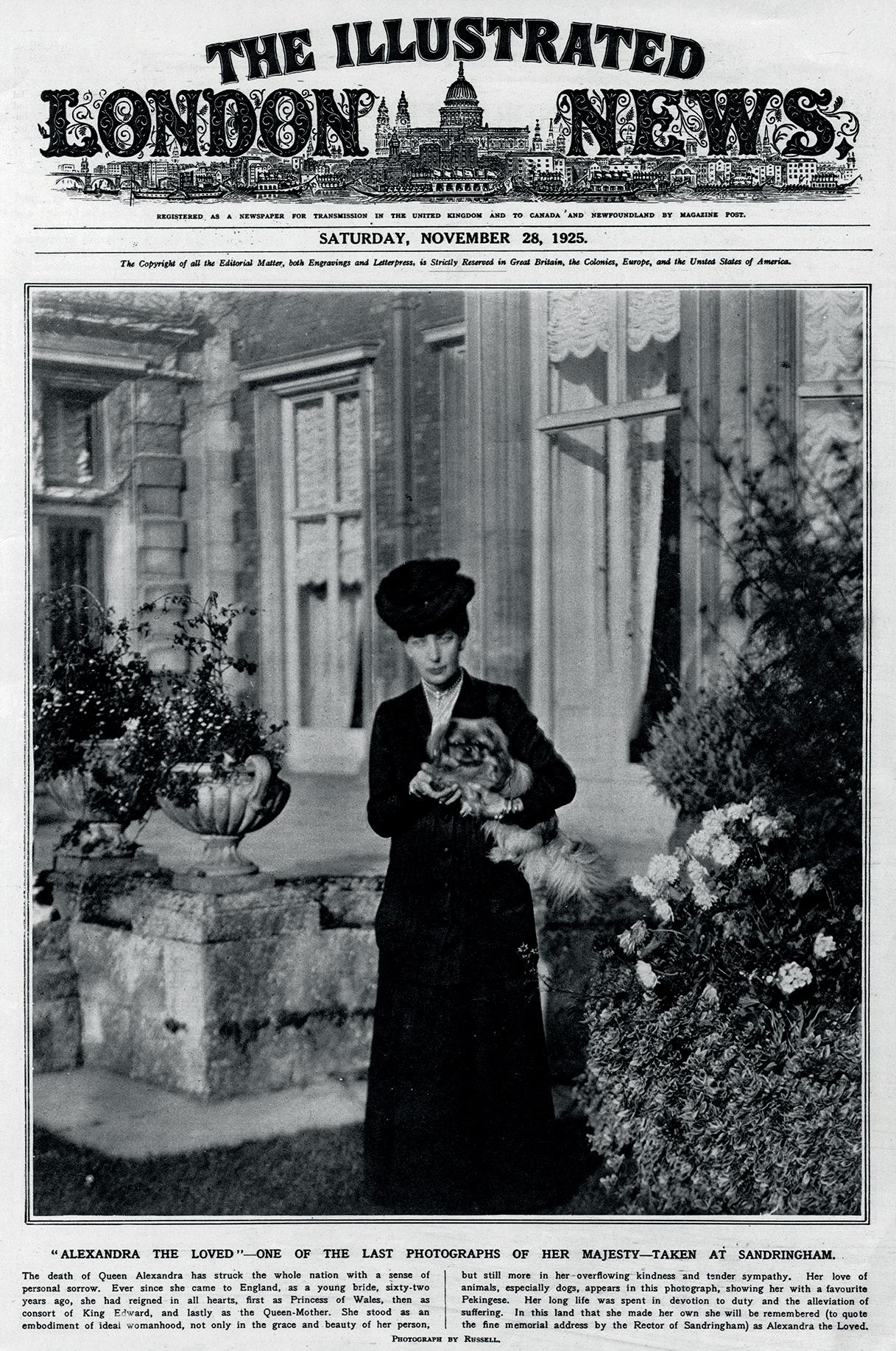
Below:
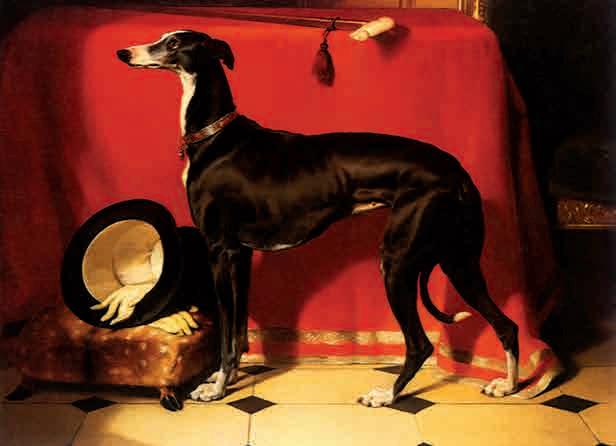
On 18 October 1860, during the Second Opium War, ritish troops occupying Peking (modern-day eijing) looted and burned the uanmingyuan, the 18th-century summer palace of the Manchu emperors. mong the spoils of war was a pekinese bitch, found by Captain ohn art Dunne of the th egiment, who brought her back to England and presented her to Queen Victoria. The diminutive dog (right) was named Looty, an unsettling reference to the method of her ac uisition in an age of ritish imperialism. The breed was practically unknown in the UK and Looty was enough of a novelty to have her picture featured in the 1 une 1861 issue of The Illustrated London News. But Looty failed to capture Queen Victoria’s heart, and she spent most of her life in the royal kennels at Windsor.
Dash, a King Charles spaniel, was Queen Victoria’s companion through her girlhood and early reign, providing an antidote to her loneliness and isolation. Lord Melbourne thought Dash a plebeian, ill-conditioned dog but young Victoria doted on him. When Victoria first met her future husband, Prince lbert of a eCoburg in 1836, it was Dash who gave her suitor the canine seal of approval after lbert, played with and fussed over the dog. Dash is buried outside Adelaide Cottage, Windsor. is epitaph reads is attachment was without selfishness is playfulness was without malice is fidelity without deceit.
Queen Victoria already owned greyhounds when in 1840, her new husband, Prince Albert, brought his own to join the royal household. Eos was elegant and painted many times, but it was dwin Landseer’s 18 1 depiction of her, in a painting Victoria gave to her husband, that conveyed her character which was, according to Albert, “proud and contemptuous of other dogs . When she died in 18 , Landseer’s portrait was used as the basis for a monument by the sculptor John rancis. Two bron es were cast. ne stands over the dog’s grave in Windsor ome Park the other is on the Upper Terrace at Osborne ouse on the Isle of Wight.

dward VII’s characterful wirehaired fo terrier, who wore a collar stating I am Caesar, The King’s dog , was an unpopular nuisance with courtiers who had to tolerate his various mischiefs including a tendency to chew trousers while the owner was still wearing them. Caesar captured the nation’s hearts when he obediently followed the co n in The King’s funeral procession on 0 May 1 10. The well-known dog artist, Maud arl, who had painted several pictures for the late King, was commissioned by The Illustrated London News to paint ilent orrow’ (right) which shows Caesar mourning for his departed master. The picture was o ered as a print to readers.
Perhaps the most regal of royal dog breeds, the majestic bor oi was first introduced to the Royal Family in 1863 when the ussian Tsar gave several of the breed to Queen Victoria and the Princess of Wales. Queen le andra’s favourite bor oi, le , was a gift from her nephew, Tsar icholas II, in 18 , and was subse uently e hibited more than any other of her dogs, winning more than one hundred awards at shows. le ’s majestic looks and celebrity status meant people would ueue for hours in order to see the handsome hound. n the domestic front, The King personally clipped le ’s coat and ordered that the silky fur was spun into wool.
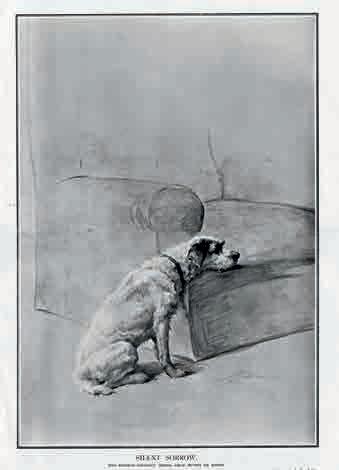
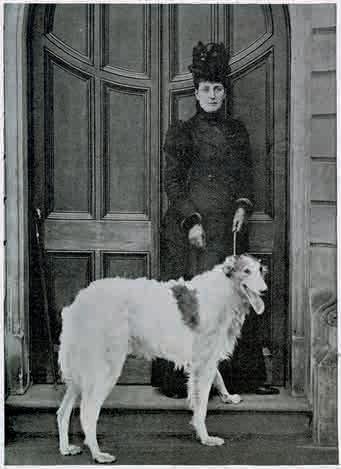
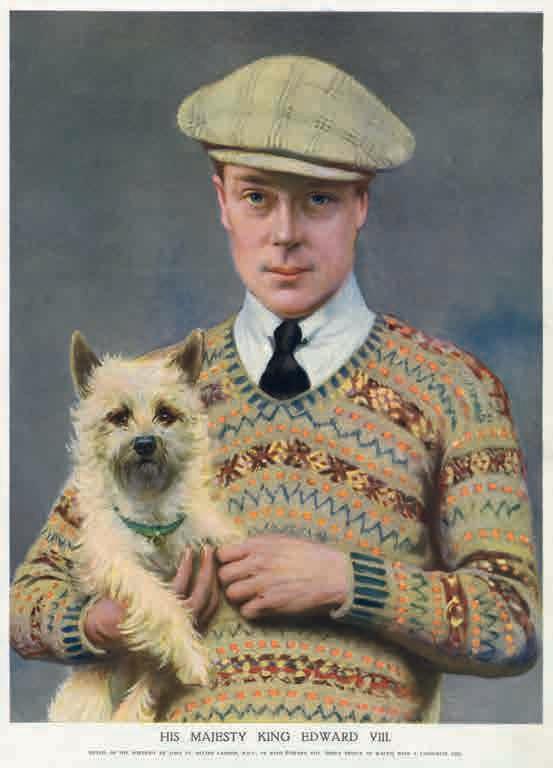
heavy clumber spaniels to Sandringham, a dog also much admired and trusted by his son and fellow shooting enthusiast, George V. Edward VII was also renowned for terrier companions who, while loyal to their master, lacked basic manners with everyone else. Jack, an Irish terrier, who arrived in 1901, was known to growl at anyone who came too close to his master and once chased the statesman Joseph Chamberlain down the main staircase at Buckingham Palace. Even more despicable was his successor, Caesar, a wire-haired fo terrier with an air of self-importance, who accompanied The King all over Europe, terrifying any other pets who crossed his path. e was, joked The King, one of the greatest obstacles to the entente cordiale, since he was prone to bark or snap at servants and statesmen alike. Both Caesar, and the clumber, andringham Lucy, were made into figures by aberg in 1 07, uniting two of dward and le andra’s joint passions –animals and their aberg collection. Caesar was immortalised again when he was carved, nestled at his master’s feet, on The King’s tomb at t eorge’s Chapel, Windsor. King eorge V owned a succession of terriers too. When he came to the throne, he had Happy who was followed by a Sealyham, Jack, who died aged 14 in 1928. After that, two cairns kept The King company in his old age. Princess Mary gave her father Snip, who died in 1931, and then there was ob, a lively character, who outlived the King, and was looked after by Queen Mary who moved him with her to Marlborough ouse after her husband’s death. dward VIII
Queen Victoria deplored any sort of animal cruelty. In 1835, she and her mother, the Duchess of Kent, had become patrons of the Society for the Prevention of Cruelty to Animals, and as Queen she consented to the society using the oyal’ prefi . Victoria was never swayed by fashion; she would not allow tails to be docked or ears cropped, and in her olden ubilee address in 1887 e pressed her pleasure at “the growth of more humane feelings towards the lower animals”. She ordered the minting of a medal to honour those carrying out the society’s work, and insisted that cats, a much-misunderstood animal”, be included. Her patronage of the Lost Dogs’ ome at attersea (as it was then known) led to her asking the committee to keep dogs two days longer than was required.
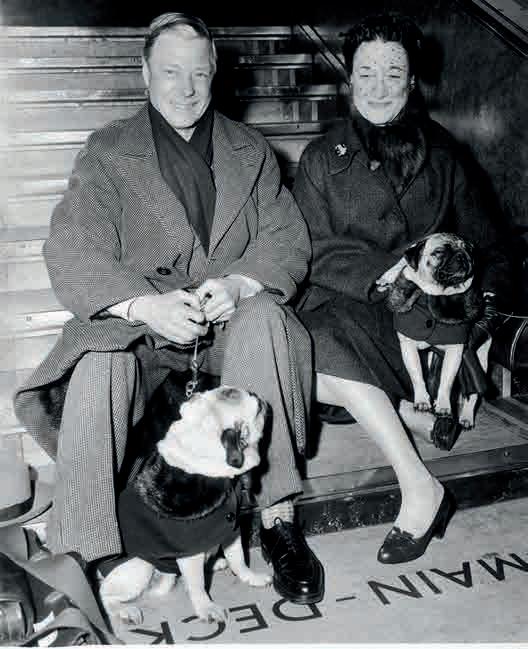

shared his father’s fondness for cairns and owned several throughout the 1930s, including Slipper, who he bought as a gift for Wallis Simpson in 1934. When he went abroad following the Abdication, he sent Slipper to Wallis at the Château de Candé, which, remembered Wallis in her memoirs, felt like, “David had sent part of himself”. Alas, the next day, while out walking on a golf course near the Château, Slipper was bitten by a snake and died that evening. “Now the principal guest at the wedding is no more,” Wallis tearfully wrote to Edward.
Later, the Windsors would enjoy pugs to an almost cultish degree. They owned nine in total, including Impy, Trooper and the mischievously named Peter Townsend (after the love interest of Princess Margaret). They collected Meissen figurines of the breed and the Duke even embroidered cushion covers with pugs. Perhaps unsurprisingly, given her feelings about her brother-in-law and his wife, The Queen Mother fostered a lifelong abhorrence of the breed.
At the centre of royal life, dogs have often been witness to history. The night before the Abdication, King Edward VIII retired to his study to write his broadcast speech in the company of his pekinese, Princess Pittie. Queen Victoria’s spaniel, Dash, was given a bath by his mistress after she had returned from her coronation in 1837, and more than 60 years later, on 22 January 1901, at Osborne, she requested that her pomeranian, Turi, lie by her side during her final hours – a dog-lover to the very end of her life.
Toy spaniels, often referred to as ‘comforters’, were in evidence at courts around Europe from about the 16th century but the King Charles spaniel, as we recognise it today, became a totem of the Stuart dynasty, appearing in pictures by the court painter Van Dyck and mentioned by contemporary writers including Samuel Pepys, who thought King Charles II often cared more for his spaniels than his country. Known for a submissive temperament, spaniels were amenable and even sported the same flowing locks of the Stuart monarchs. When the Stuart dynasty was replaced in the Glorious Revolution, spaniels were ousted by the arrival of William of Orange, who favoured Dutch pugs. But by the mid-18th century, they were enjoying a renaissance and made appearances in portraits of George III and his family. In 1902, Edward VII over-ruled the Kennel Club and insisted the breed retain the royal name of King Charles spaniel. Around the time of her marriage in 1960, Princess Margaret owned Rowley, a Cavalier King Charles spaniel.
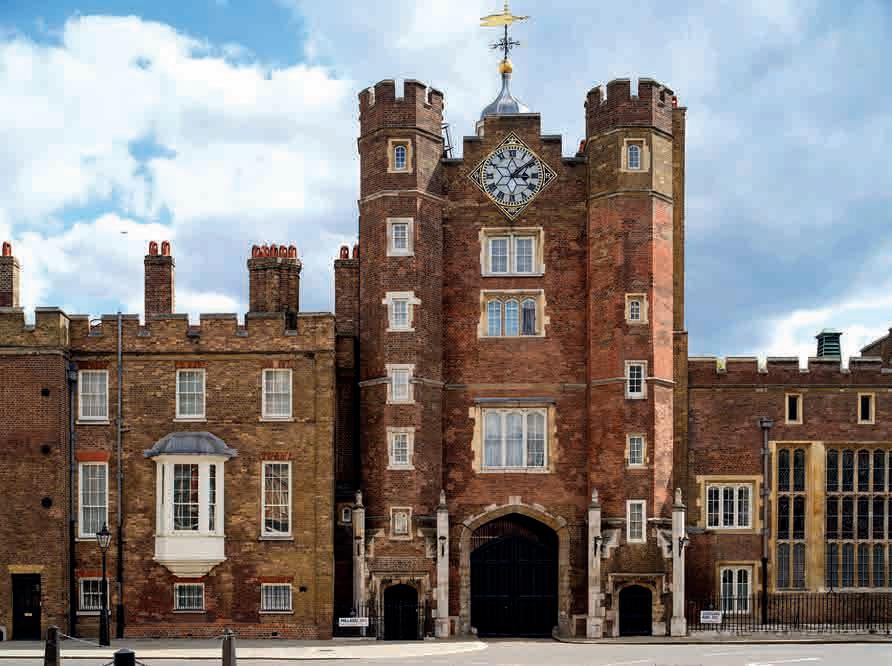
As a limited number of visitors get the chance to tour London’s oldest royal residence this spring, Lucinda Gosling looks back over 500 years of colourful history.
When tickets for guided tours of St James’s Palace went on sale in February this year, they sold out in hours. For those lucky enough to snag a spot on the tours, which began in April, they have purchased a rare opportunity to see inside London’s oldest royal residence. Surely worth the 85 price tag
Nestled in the heart of the West End, unlike its stately counterpart half a mile away, St James’s Palace’s red brick façade does not attract swarms of tourists in the same way as Buckingham Palace, and yet its history is just as rich and certainly stretches back further by several centuries. It was at St James’s Palace that Mary I signed the treaty surrendering Calais in 1558, and also from where Eli abeth I set out to address her troops assembled at Tilbury ready to confront the Spanish Armada in 1588. More recently, on 10 September 2022, the Accession Council of His Majesty The King was held in the Picture Gallery followed by The King’s rst Privy Council meeting in the Throne Room, where the throne, dating back to the reign of George IV, represents the principal seat of
monarchy in the United Kingdom. Until 1689, Whitehall was the principal royal residence, but after its destruction by re, the monarch moved to St James’s Palace and stayed for the next 150 years. William IV was the last to live there when Queen Victoria came to the throne in 1837, she decided she preferred Buckingham Palace.
Sandwiched between The Mall and St James’s Street, the palace lent its name to the area and shaped its character. Ambitious young men who wished to keep up appearances while at court, gave their custom to the smart tailors and barbers that began to establish businesses nearby, some of which remain to this day. These courtiers met and debated at co ee houses and gentlemen’s clubs, furnished their homes with the help of art dealers, and bought tea and condiments from the grocer, Fortnum and Mason. It is di cult to imagine the area in the 12th century, when green meadows and fresh air meant it was selected as the site of a hospital for women with leprosy, safely some distance away from the grime, disease and noise of the City in the east. In the 1530s, Henry


VIII ordered the building of a palace on the site, reputedly designed by court painter, Hans Holbein, as a home for him and his fourth wife, Anne of Cleves. The evidence of the optimism surrounding the King’s ultimately brief marriage can be seen today. Nestling close to the original Tudor gateway is the Chapel Royal, where the entwined ciphers H&A can be spotted in the magni cent, co ered ceiling, one of the best preserved examples of a decorative Tudor ceiling in the world.
The chapel has witnessed several signi cant moments in royal history. It was here that the infant Charles II was baptised in 1630, and where his father, Charles I, received the Holy Sacrament before being taken to his execution at Whitehall Palace in 1649. The disastrous wedding between the Prince Regent and Caroline of Brunswick took place there in April 1795; the corpulent prince famously requested a glass of brandy on meeting his apparently less than fragrant new spouse. By coincidence, Caroline’s mother, Augusta, eldest child of Frederick, Prince of Wales (and sister of George III), was born at St James’s Palace, after her father ensured her labouring mother was hurriedly conveyed there from Hampton Court in opposition to the wishes of his father, George II. The couple were punished for this transgression with eviction from St James’s Palace shortly afterwards.
A far happier union was that of Queen Victoria and Prince Albert, who tied the knot at the Chapel Royal on 10 February 1840. Eighteen years after that, on 25 January 1858, their eldest daughter Vicky married Prince Friedrich of Prussia at the chapel, an event celebrated “with amazing éclat”, according to the diarist Charles Greville. On 6 July 1893, the septuagenarian
ueen watched her grandson, the future George V, marry Princess May of Teck in the same place she had stood with her beloved Albert half a century earlier. In more recent times, both Prince George and Prince Louis have been christened at the Chapel Royal, and, as a working chapel, christenings, weddings and funerals of members of the Royal Household are usually held there.
A re in 1809, thought to have been started by a candle in a servant’s room, destroyed a quarter of the palace. By 1813, the state rooms had been restored, and the rebuilding, together with di erent tastes of successive monarchs have resulted in a patchwork of architectural and decorative styles; leading the Duke of Windsor to describe it as, “an ancient heterogenous collection of connected buildings”. Queen Victoria commissioned William Morris to create a bespoke wallpaper for the palace – named St James’s. His design of intertwined foliage on a pale blue background adorned the Grand Staircase but was stripped out on the orders of Edward VII, who gave a facelift to several royal residences during his brief reign. The Grand Staircase today still bears the white and gold scheme chosen by him. Elsewhere in the palace, there is plenty of art to enjoy, including Valentine Prinsep’s immense canvas, ‘The Imperial Assemblage held at Delhi, 1 January 18 ’ in the Banqueting Hall, a record of the ceremony when Queen Victoria was proclaimed Empress of India. In the Lower Corridor hangs the engaging portrait of The Duke of Edinburgh by Ralph Heimans, painted in 2017 to mark the Duke’s retirement from public duties at the age of 96. The Duke is pictured in the Grand Corridor at Windsor, at the
end of which is the Tapestry Room where both his mother, Princess Alice of Battenberg, and his grandmother, Princess Victoria of Hesse, were born. St James’s Palace has its own Tapestry Room. Originally known as ‘the Consort’s Presence Chamber’, it is named after the display of tapestries telling the story of Vulcan and Venus from Homer’s Odyssey, part of a suite of nine tapestries commissioned by Charles I (when Prince of Wales) from the Mortlake tapestry workshop. Surviving stencils by William Morris from 1866 can also be seen in this room.
St James’s Palace is a working palace. In particular, it is the engine room and setting for the monarch’s diplomatic role. Ambassadors from around the world are formerly accredited to the Court of St James’s, and it was where, up until 1939, aristocrats, high ranking o cials, politicians, military personnel and members of the diplomatic corps (exclusively men) would attend court levees. With participants wearing ceremonial uniform, decorations and knee breeches, this tradition derived from the sovereign once allowing courtiers the privilege of watching them rise from bed and get dressed.
Queen Victoria’s court drawing rooms were often held at St James’s Palace (earlier in her life, she celebrated her 14th birthday there with a ball where she, “danced in all eight quadrilles”). Those wishing to be presented to the monarch would apply to the Lord Chamberlain’s o ce at St James’s. It has also hosted historical conferences, including the second Indian Round Table Conference in September 1931, and the Inter Allied Conference, held on 12 June 1941 and resulting in the Declaration of St James’s Palace; a statement of the shared aims and principles of the allied powers.
Today the palace is the venue for various o cial events. It is often used for entertaining during incoming state visits, and for receptions for charities supported by members of the
Below: A lucky few ticket-holders have had the chance to enjoy a guided tour of St James’s Palace – including the Tapestry Room – this spring
Bottom: Queen Victoria and Prince Albert were married in the Chapel Royal, a union depicted in a painting by Sir George Hayter Facing page: the palace as seen in an illustration by RG Mathews in The Tatler in February 1939

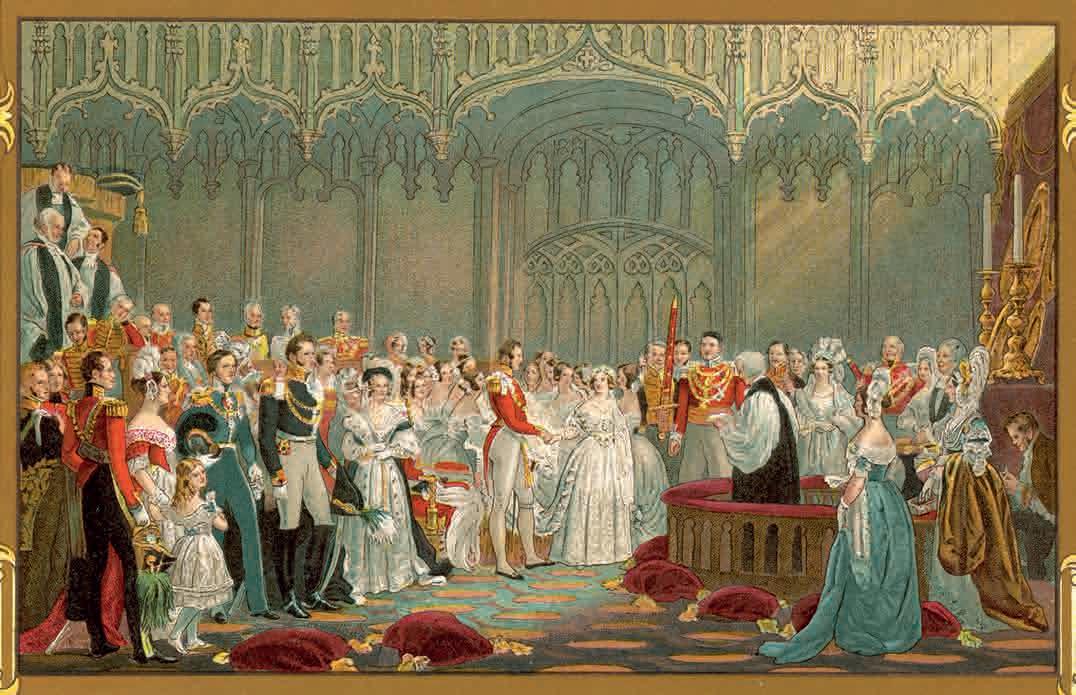
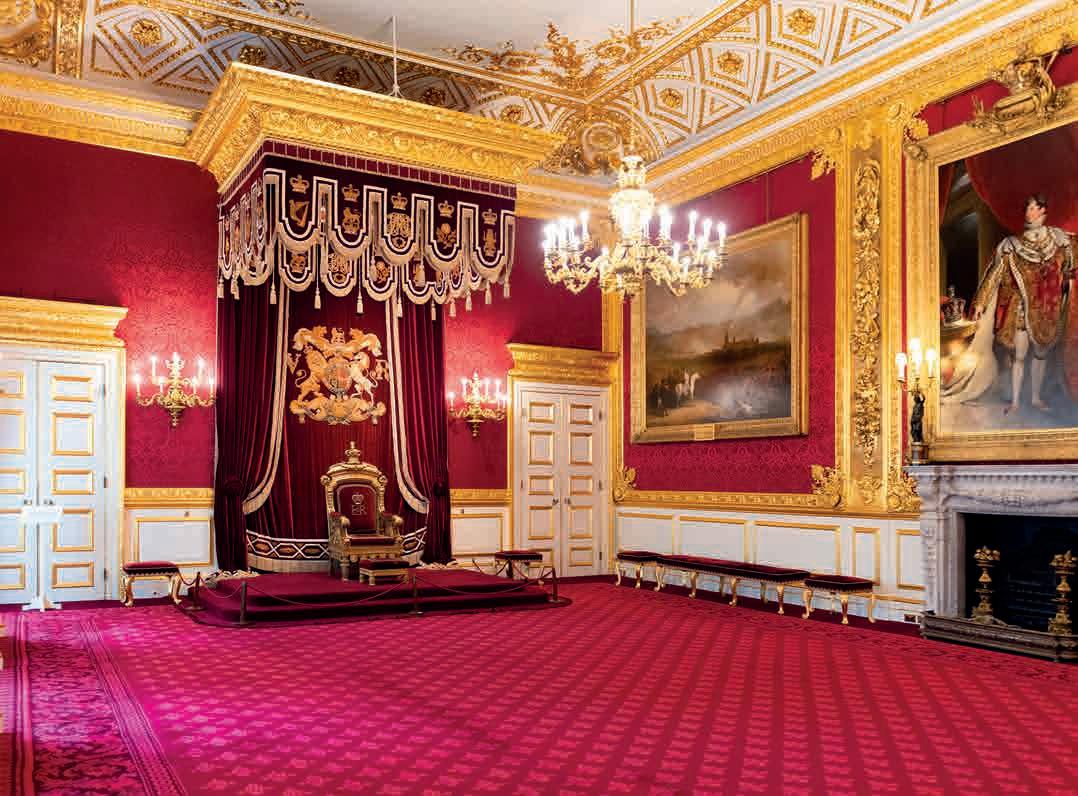
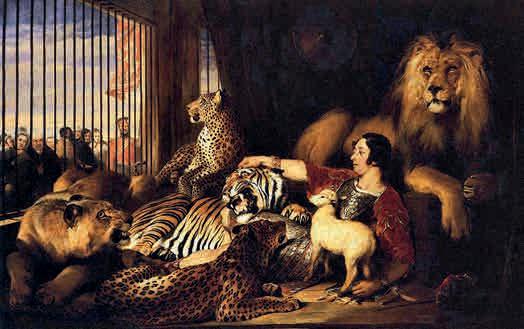
Visitors to the palace will pass through the Picture Gallery and will no doubt be directed to Sir Edwin Landseer’s painting, ‘Isaac van Amburgh and his Animals’. Amburgh, an American lion tamer, performed in London for six weeks in 1839 and was a sensation, with Queen Victoria seeing his show seven times in total. She commissioned Landseer to paint Amburgh, surrounded by his beasts, the rst of 40 works Landseer would paint for Victoria and Albert, including many of their dogs (see the feature Pedigree chums’ in this issue).
Royal Family. In 1961, a fashion show by the Incorporated Society of London Fashion Designers was held in three of the crimson state rooms, raising funds for the Edwina Mountbatten Trust. Attended by the Duchess of Kent, among the guests was the Hon. Mrs Sonia Cubitt, grandmother of Her Majesty Queen Camilla.
Perhaps most symbolic to the public is Friary Court, still partly Tudor in origin where, above four yellow bricked arches, is the Proclamation Gallery from where a new monarch is rst proclaimed by Garter King of Arms, and later, the date of the coronation is announced. Friary Court is one of four courts within the palace. Those on the tour this spring will have passed through Colour Court, so called because it was once where the Changing the Guard ceremony took place. The base for a flagpole, which held the flag or colour’ can still be seen in the centre of the courtyard.
Beyond the formality and special functions, the palace has also served as a home to various Royal Family members over the years. Today, The Princess Royal has an apartment which she uses as her London base, and Princess Alexandra, The Honourable Lady Ogilvy, also has an apartment at St James’s Palace.
Before moving to Clarence House in 2003, The King, when Prince of Wales and separated from The Princess of Wales, lived here with Prince William and Prince Harry, speci cally in York House, which constitutes the western end of the palace. The future Edward VIII, who also lived in York House before occupying Fort Belvedere on the Windsor estate, considered it “a rambling, antiquated structure, a veritable

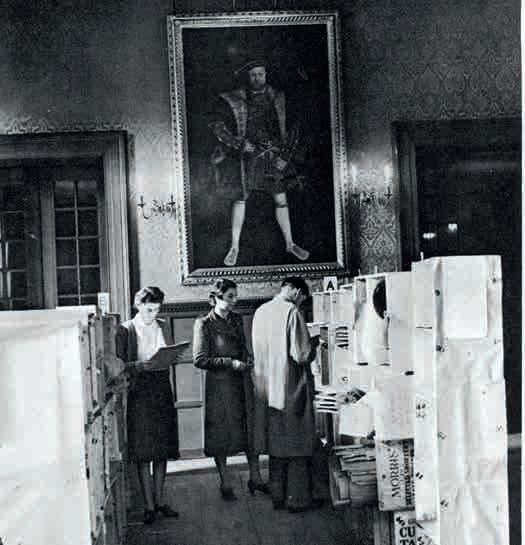
This page: During the war, both the Banqueting Room, top , and the Picture Gallery, above , were used to make up care packages to send overseas to prisoners of war
Facing page, top: The Throne Room where His Majesty The King held his first Privy Council meeting after his Accession
During the Second World War, St James’s Palace was transformed into a depot for the Red Cross, acting as a central hub for parcels sent overseas to prisoners of war.
The Picture Gallery became the packing department (overseen by Holbein’s portrait of Henry VIII), Thomas Lawrence’s painting of George IV looked over the female clerks working at makeshift desks in the Throne Room, while Charles II surveyed the workers’ bicycles piled up around the Grand Staircase.
rabbit warren, with hallways interrupted by unexpected flights of steps leading to unsymmetrical rooms full of ugly Victorian furniture, brass beds and discarded portraits of former monarchs”. It was, at least, conveniently close to his favourite haunt, the Embassy Club, on Old Bond Street.
In 1994, when The Prince of Wales was away skiing in Klosters, his York House apartment was broken in to, apparently by a passing opportunistic thief – an Italian called Renato Rinino – who four years later admitted to breaking and entering.
A more dramatic crime took place in 1810, though the true identity of the perpetrator remains uncertain. In the early hours of 31 May, Joseph Sellis, valet to Ernest Augustus, Duke of Cumberland (younger brother of George IV and William IV) was found dead with his throat cut in his room in York House. His master, with a visible blow to the head, claimed the servant had viciously attacked him in his bed and, after he had been chased away, committed suicide in his own bedroom.
Cumberland’s version of events was accepted at the inquest, but substantial contradictory evidence and the duke’s unpopularity meant he was never exonerated in the eyes of the public. Many thought he had committed murder because Sellis knew too much scandalous detail about the duke’s private life.
In a building close to its 500th birthday, it would be unusual if St James’s Palace did not to have one or two intriguing tales to tell. For anyone hoping to discover the secrets of the senior royal palace for themselves in 2026, it would be advisable to set an alarm clock early on the day tickets go on sale.
A regal endorsement (whether official or unofficial) is worth its weight in gold. We uncover some vintage ads from the archive, where canny marketeers have harnessed the power of royal association to add a covetable cachet to their products
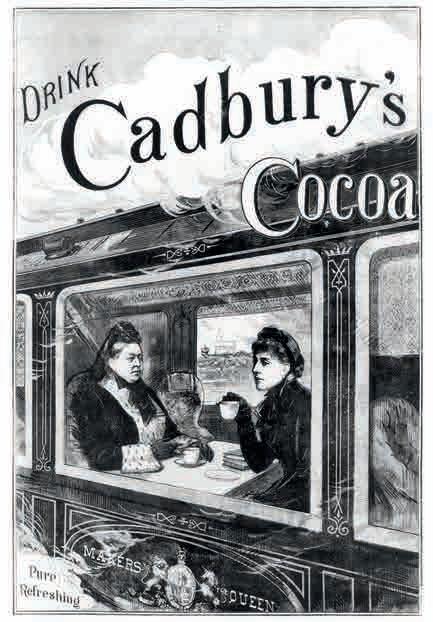
Going loco over cocoa? Queen Victoria and her youngest daughter, Princess Beatrice, enjoy a fortifying cup of Cadbury’s Cocoa while travelling in the royal train. From The Illustrated Sporting and Dramatic News , 1884.
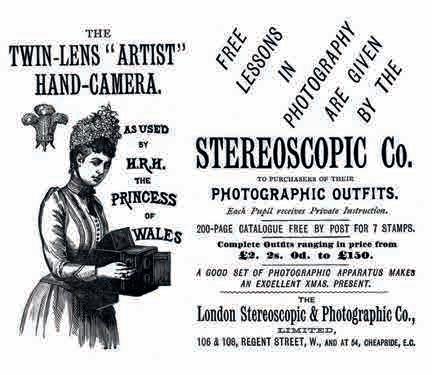
Queen Alexandra (Princess of Wales at the time of this 1892 advert), was a keen amateur photographer, and is pictured here in action with her Twin-Lens ‘Artist’ Hand Camera.
When this advertisement for ‘Prince Charming’ cigarettes was featured in The Illustrated London News in 1923, both smoking and The Prince of Wales were at the height of their popularity. The future Edward VIII had completed a highly successful tour of Canada that year and, on his many visits around the UK, had cemented his status as the people’s ‘Prince Charming’.

By the age of three, Princess Elizabeth of York (the future Queen Elizabeth II) had captured the hearts of the nation. Hamley’s ‘Princess Betty’ doll, seen in this 1929 advertisement from The Sketch , allowed children to have a royal playmate of their own.
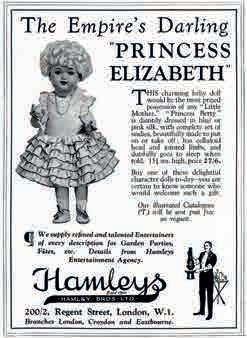
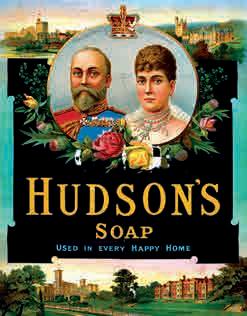
Hudson’s Soap claim its product was used in “every happy home in the land” in this advert which dates from the earliest part of Edward VII’s reign. Shortly after his accession, The King sold Osborne House, pictured bottom left here.

Tricycle riding was recommended to King Edward VII by his doctors in the late 1800s, in an attempt to help control his weight gain. He had a tricycle constructed for his use, which he would ride around the grounds of Sandringham and other royal residences, once running over his own hat on a particularly gusty day. The King allowed his tricycle to be exhibited in public, leading many people to order replicas. This ad appeared in The Graphic in 1902.

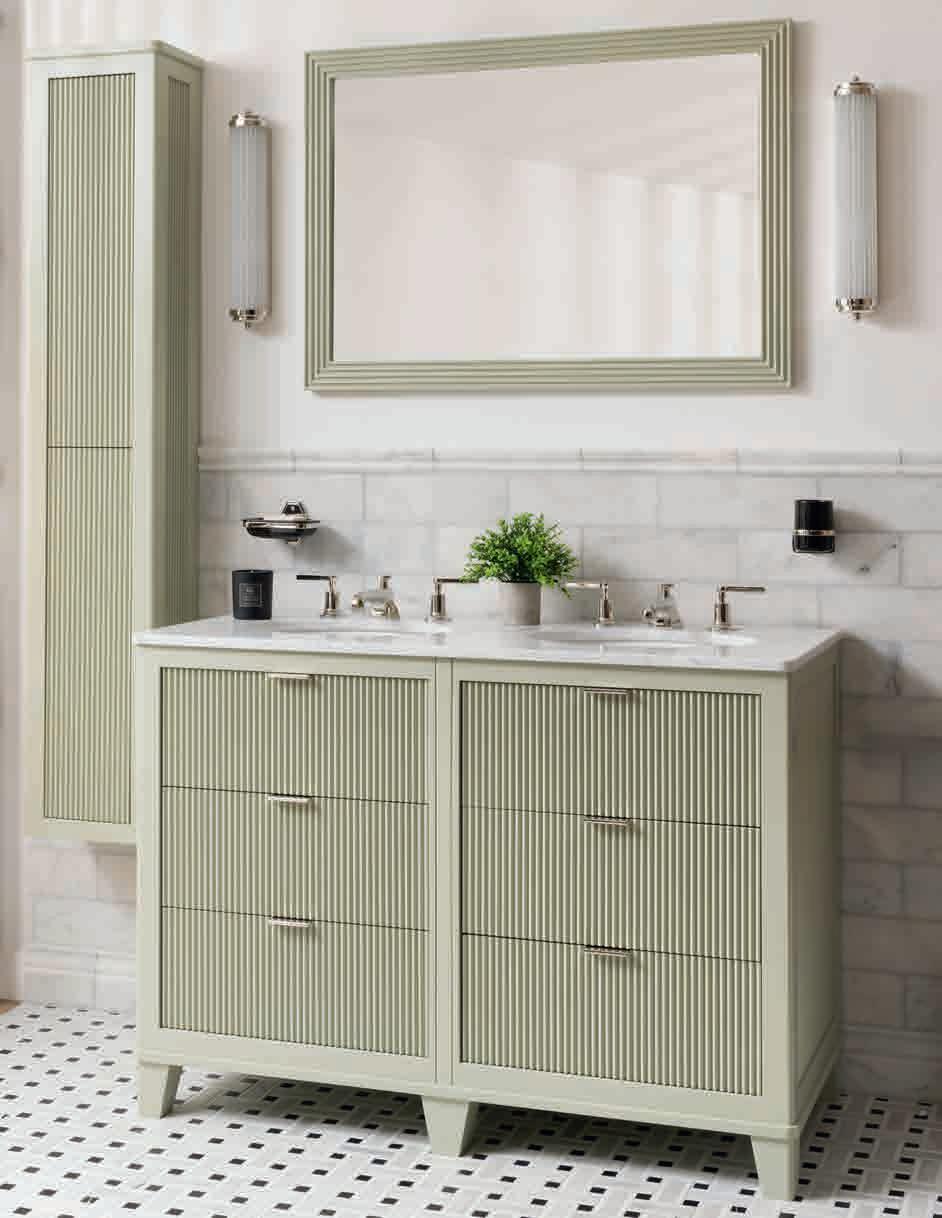
FAMILY-RUN SINCE 1978
Discover our unparalleled product offering and award-winning bathroom design service
